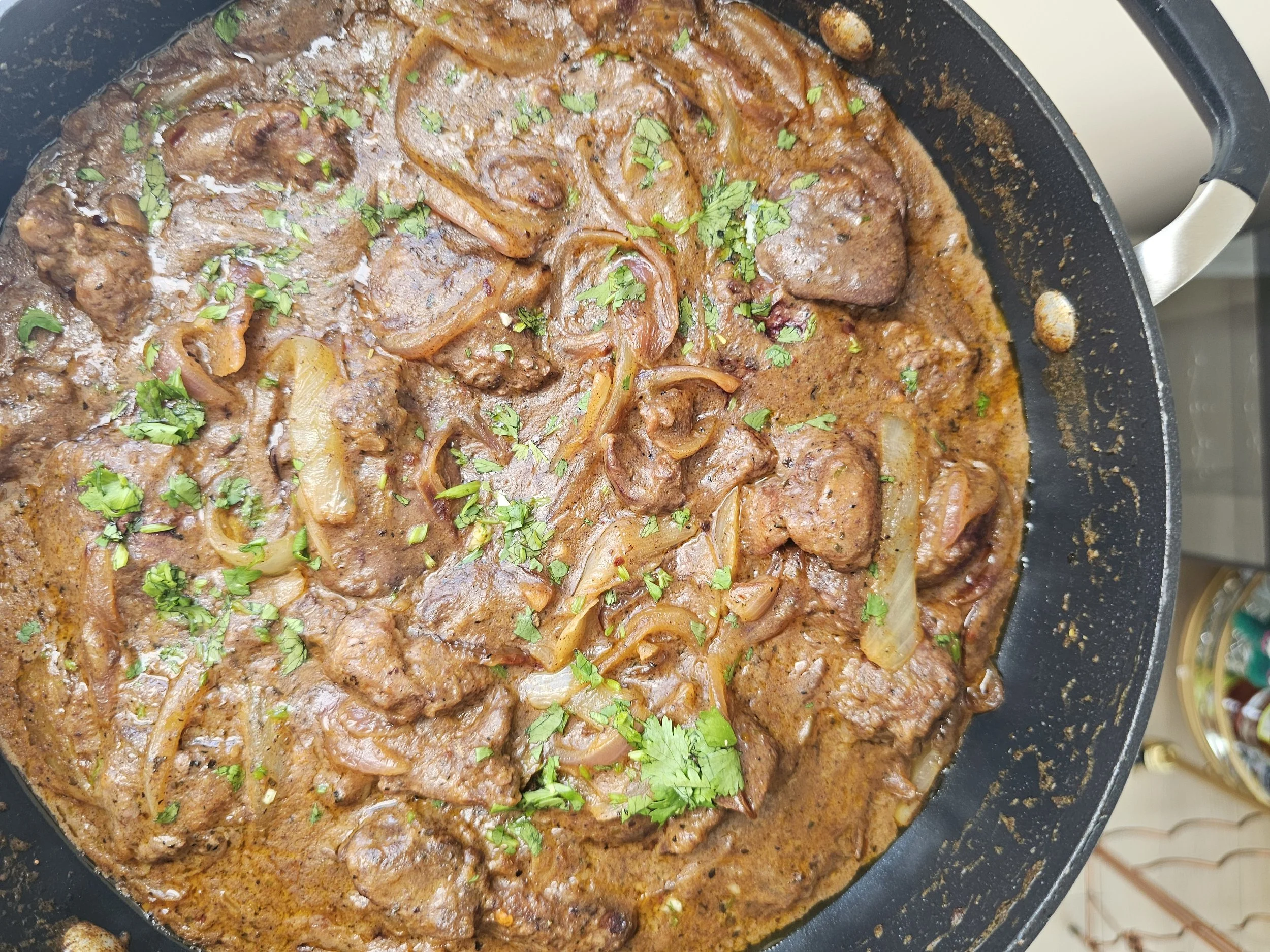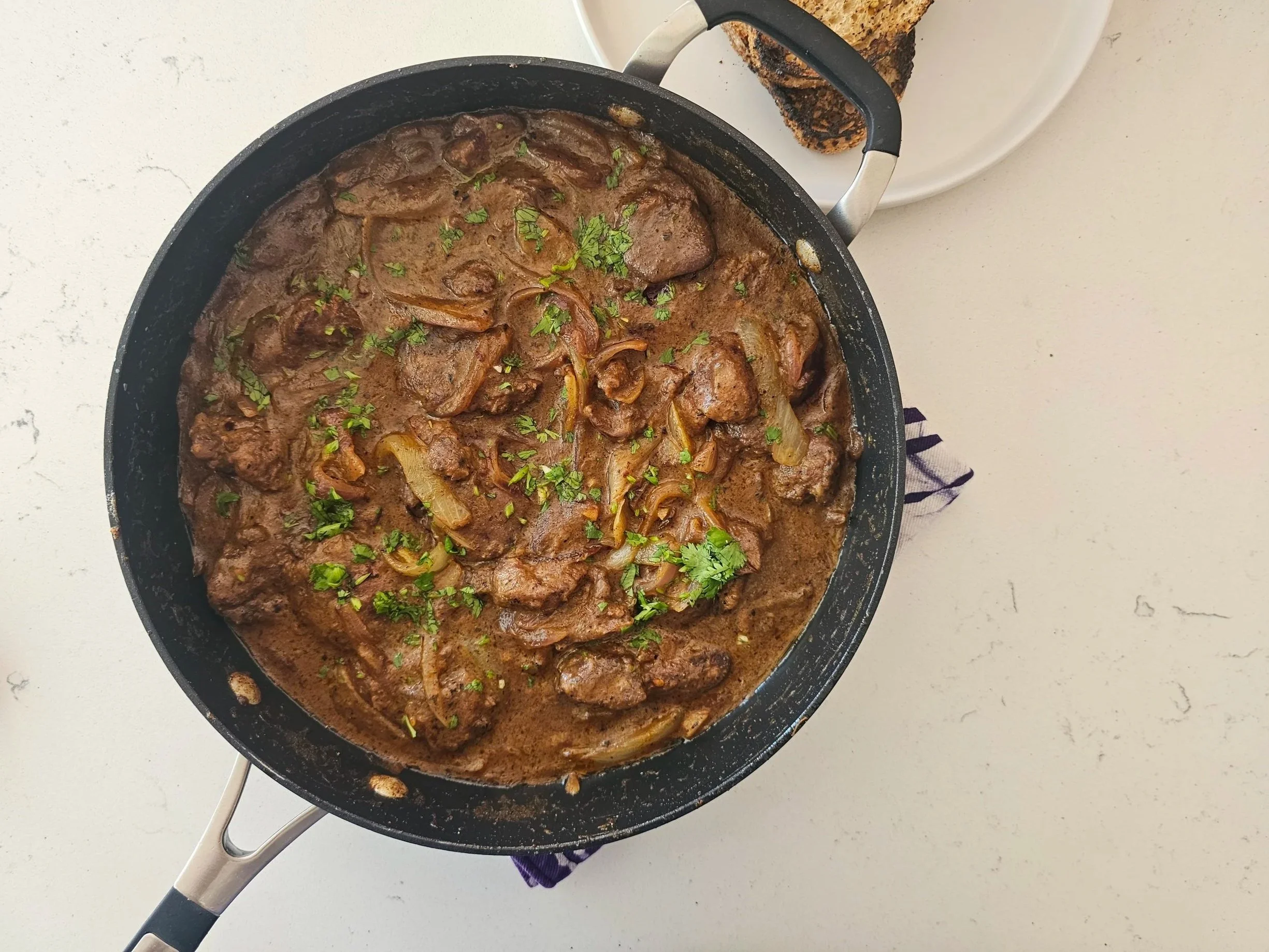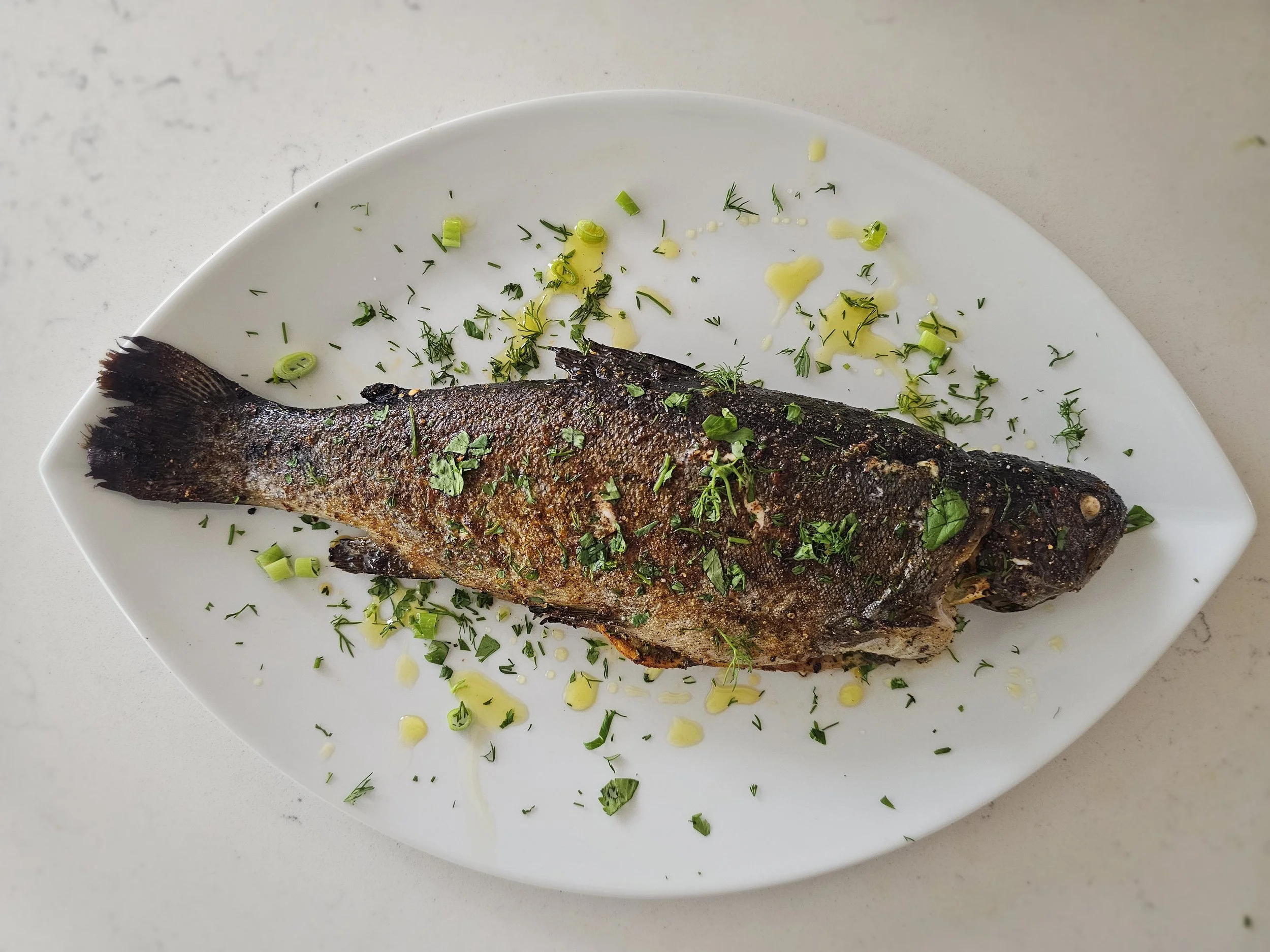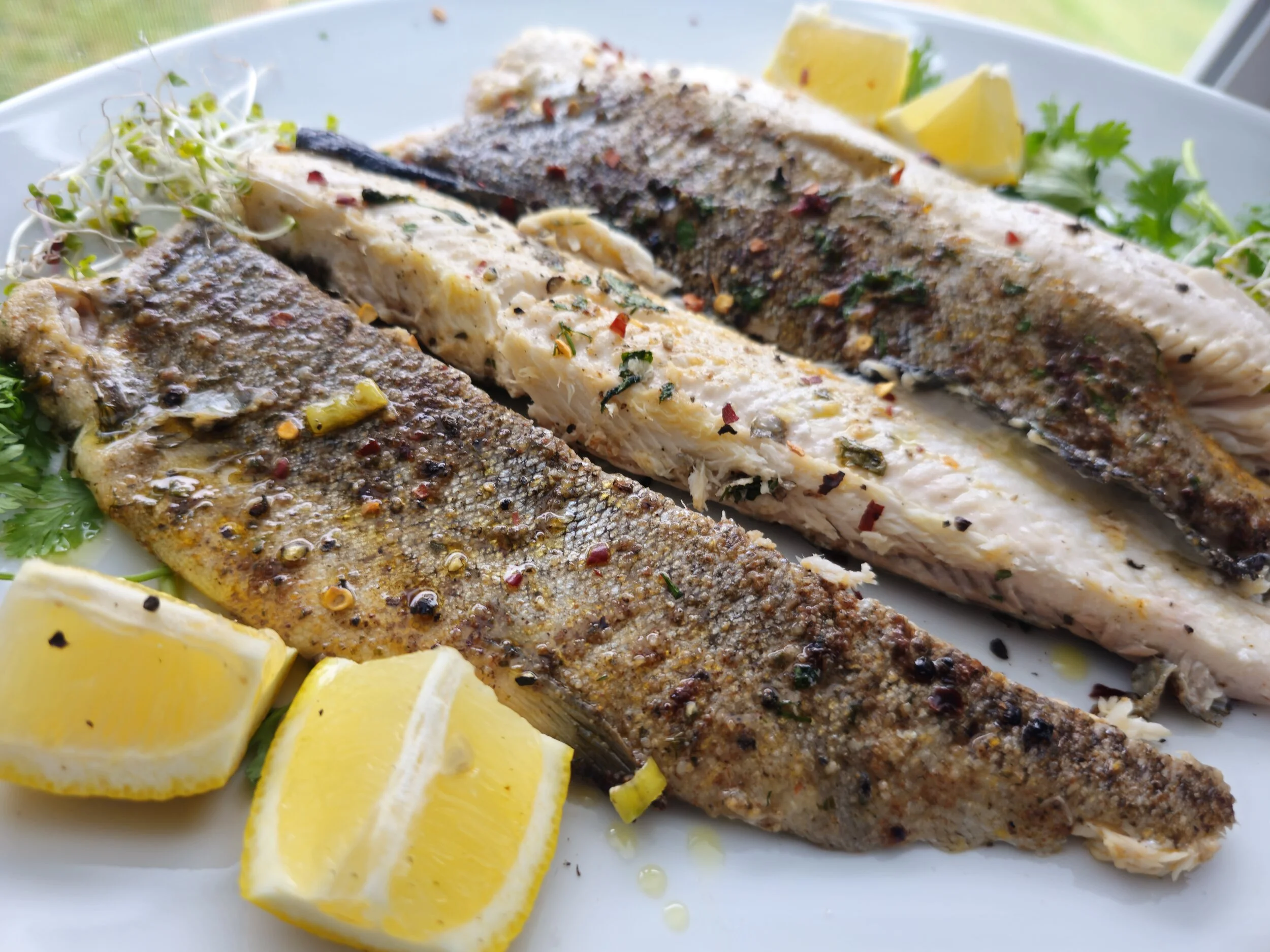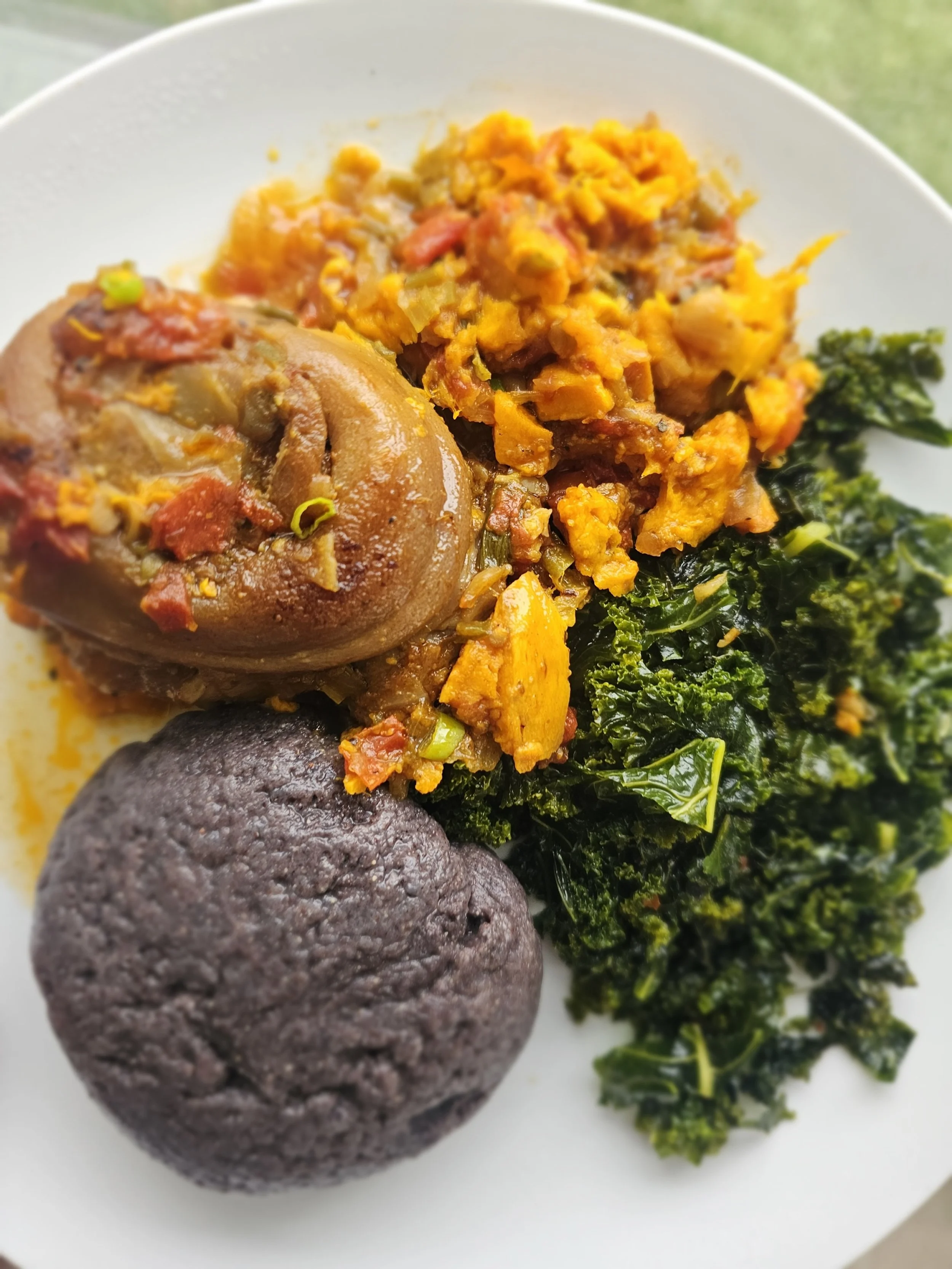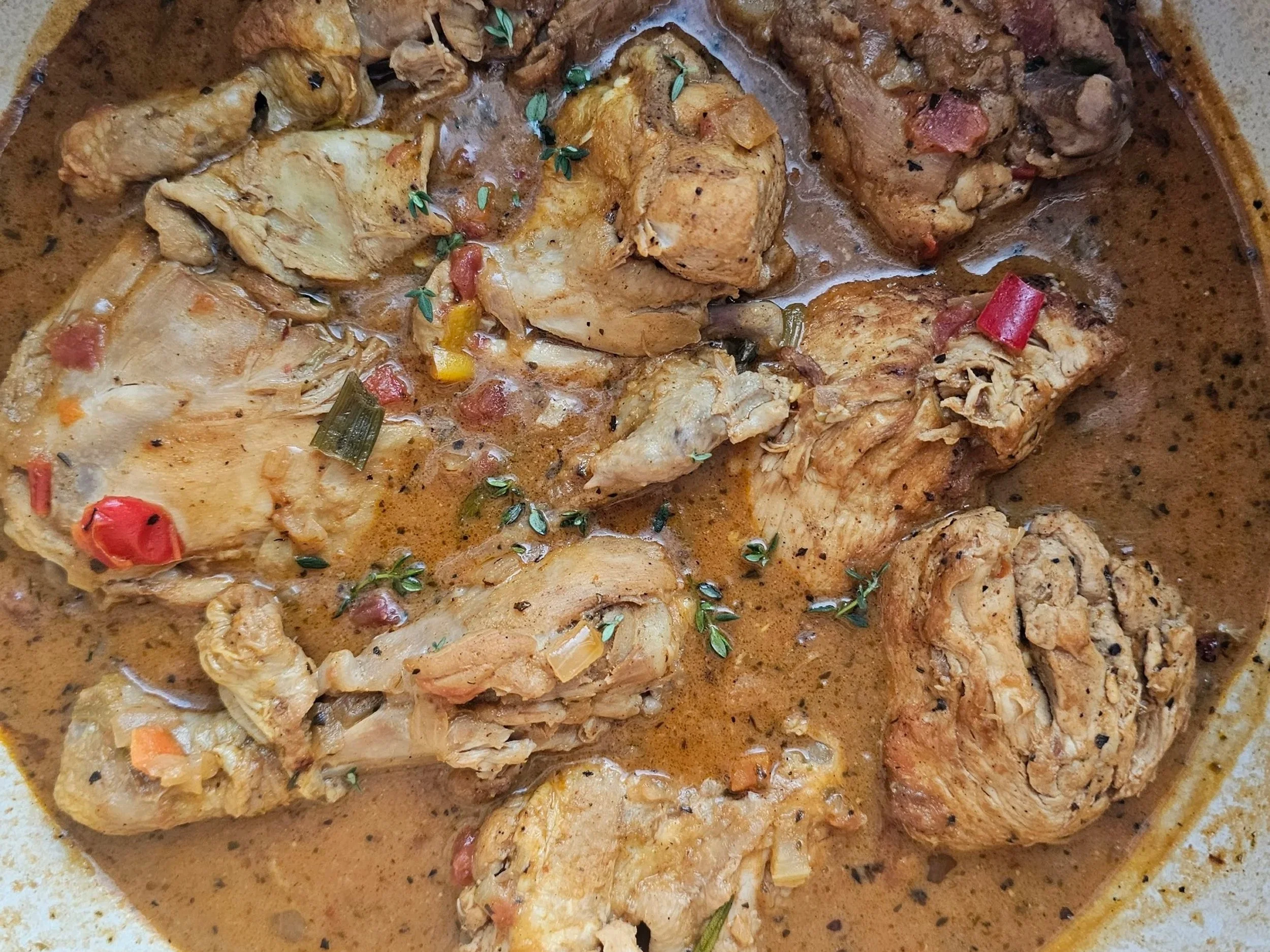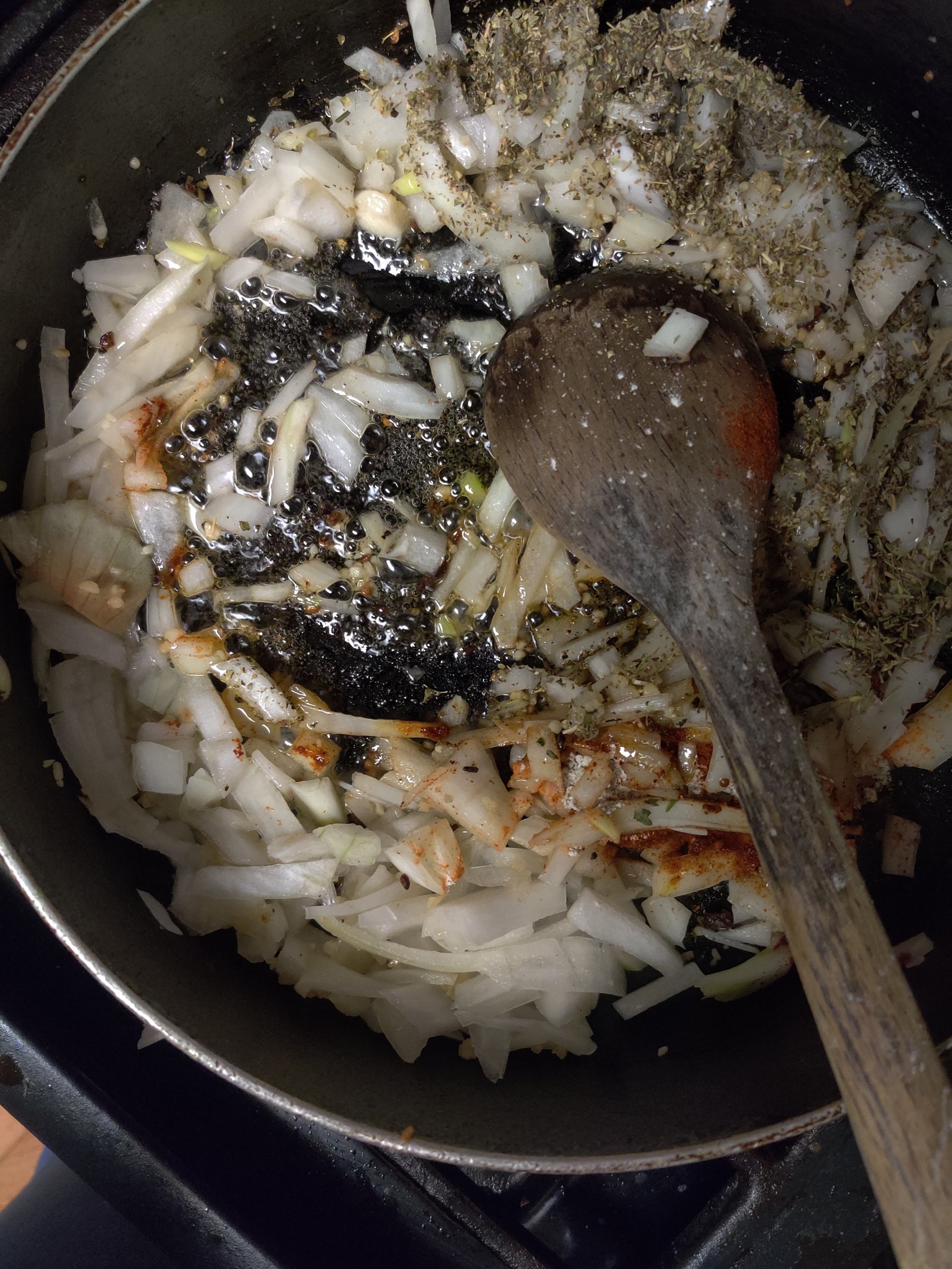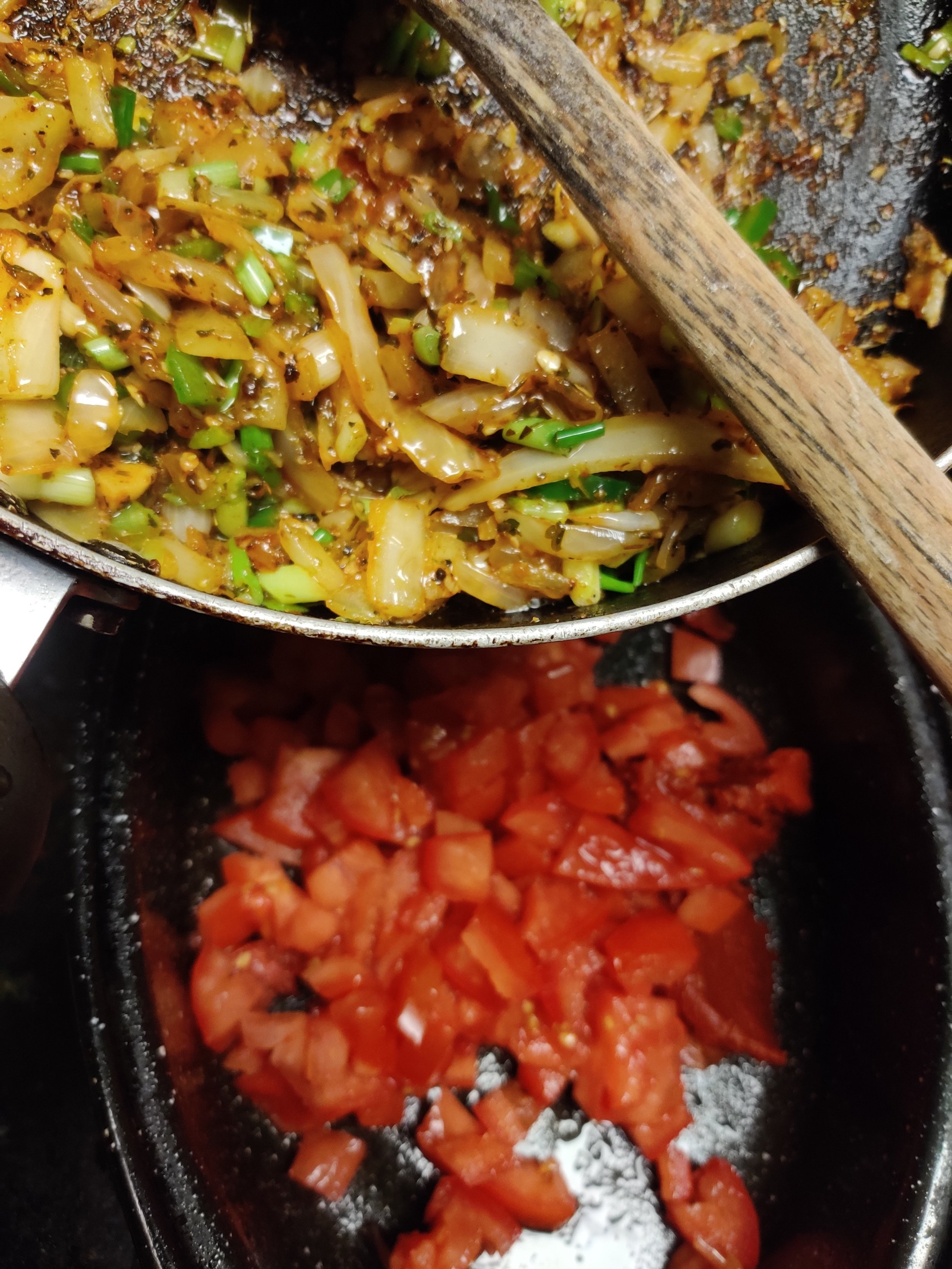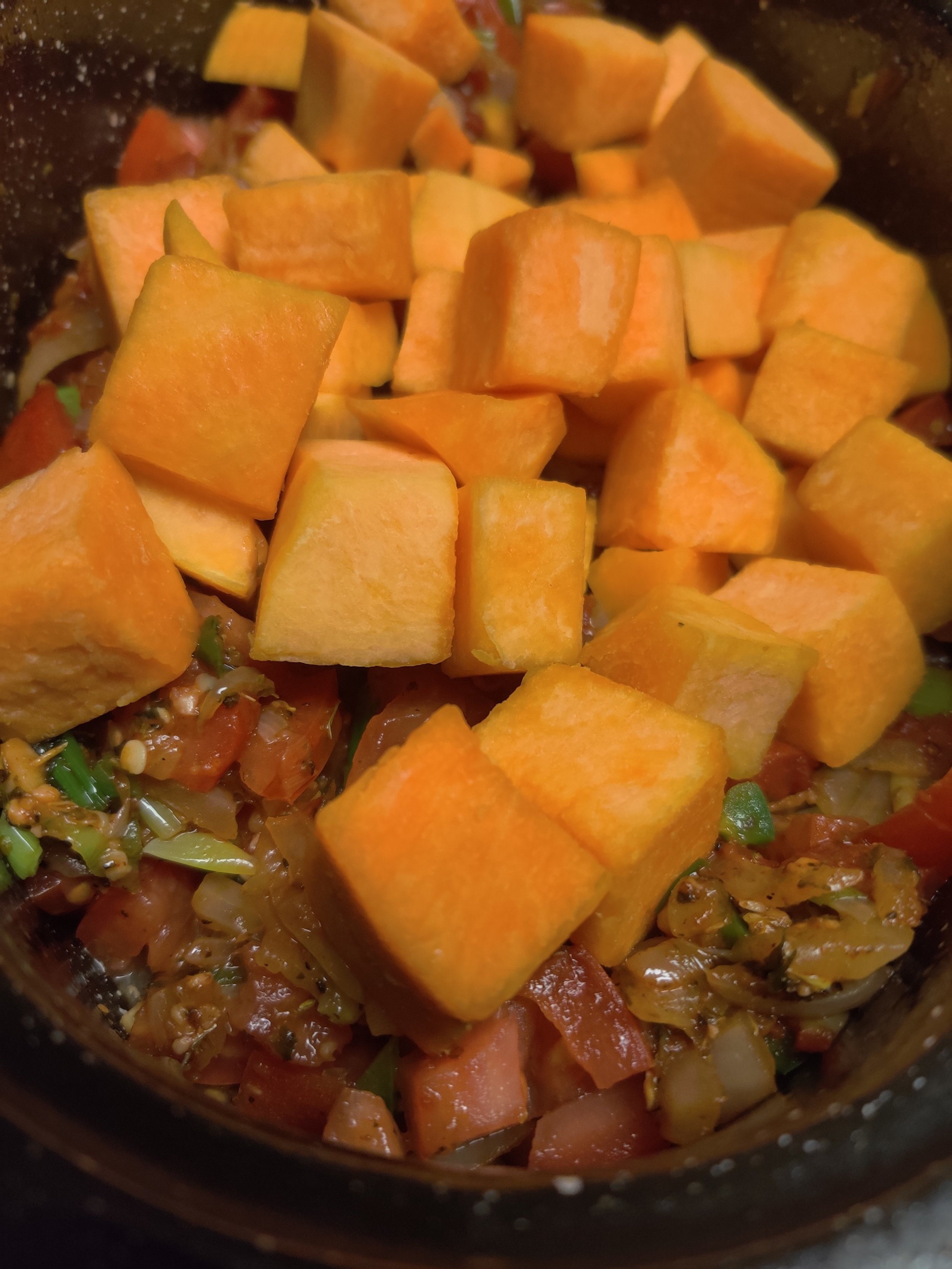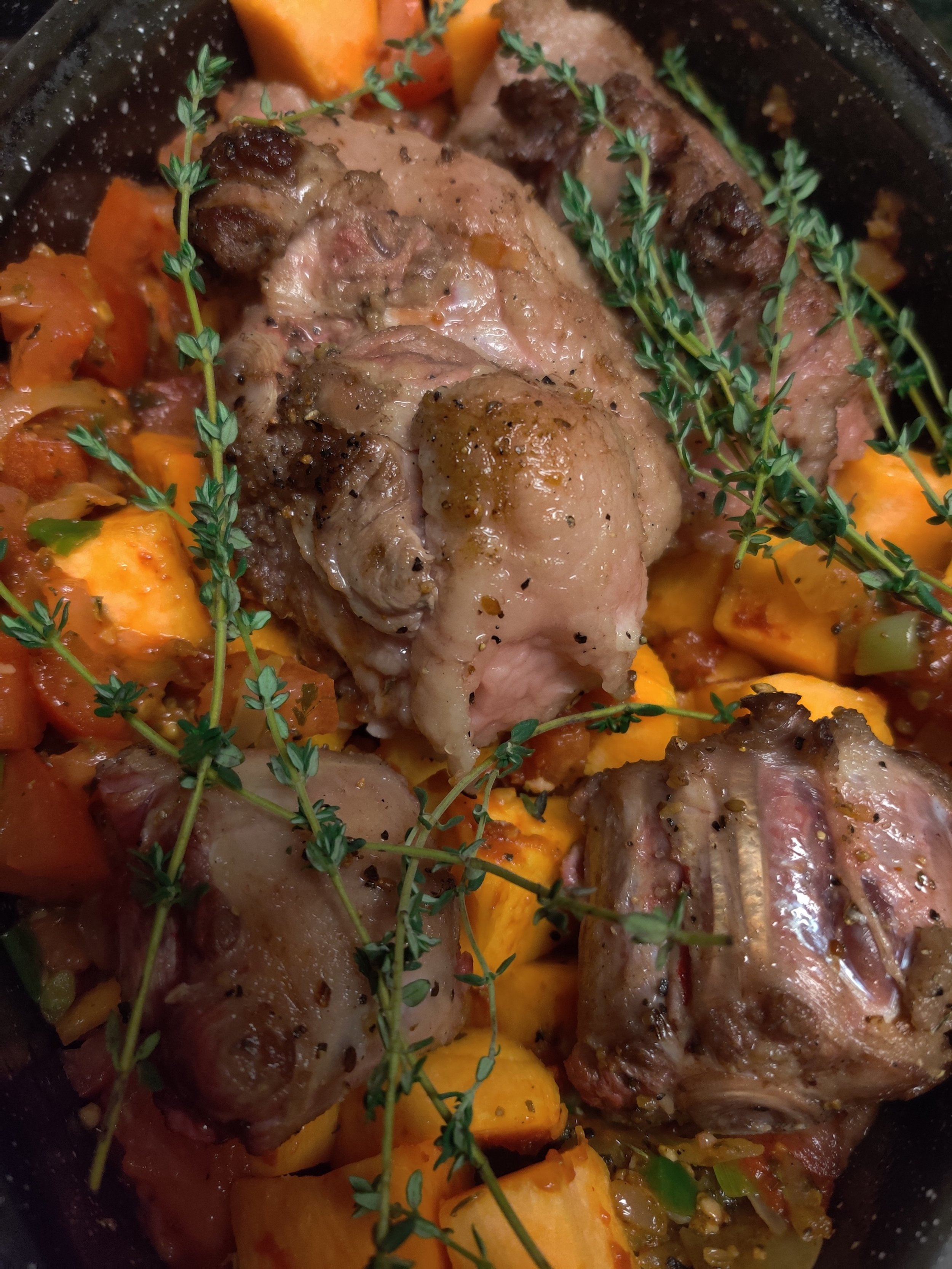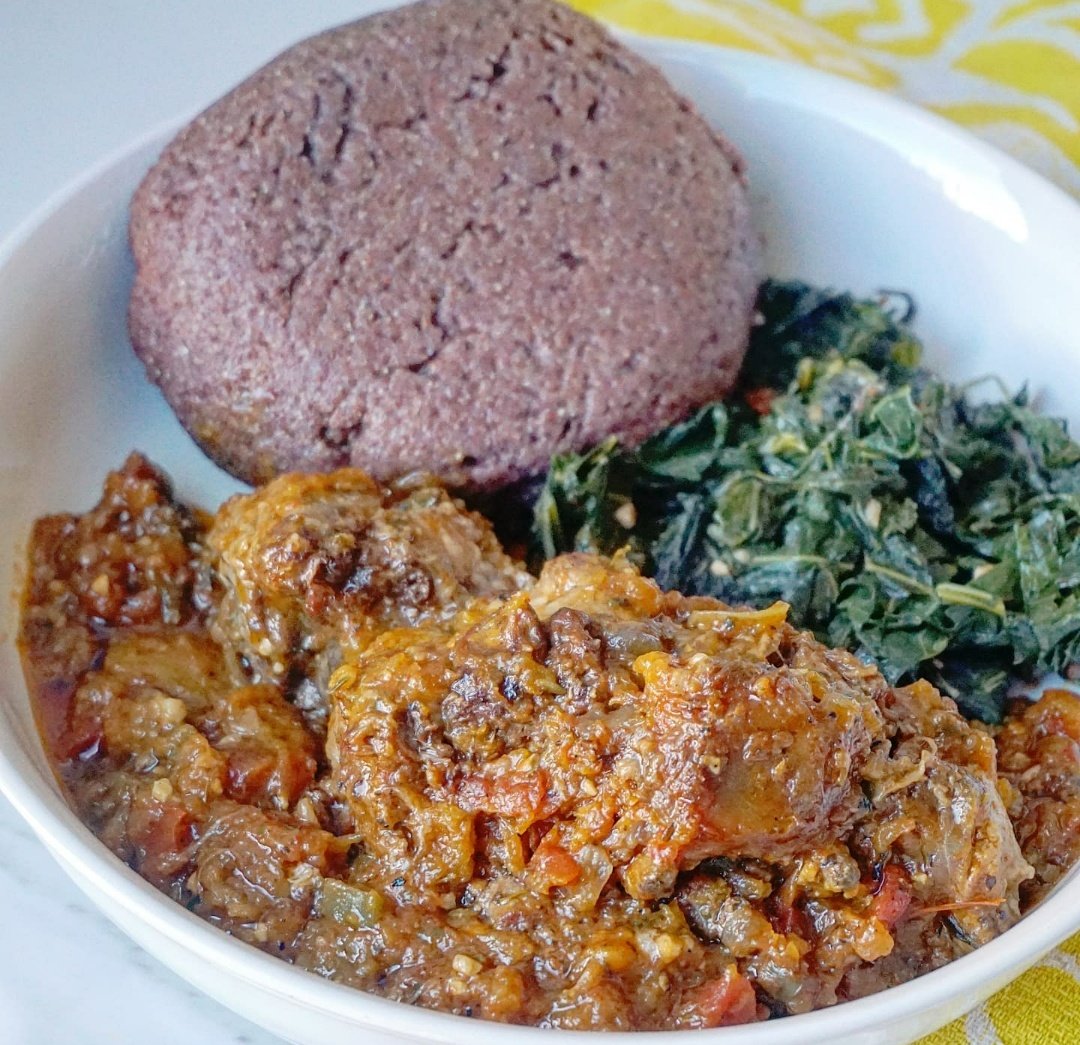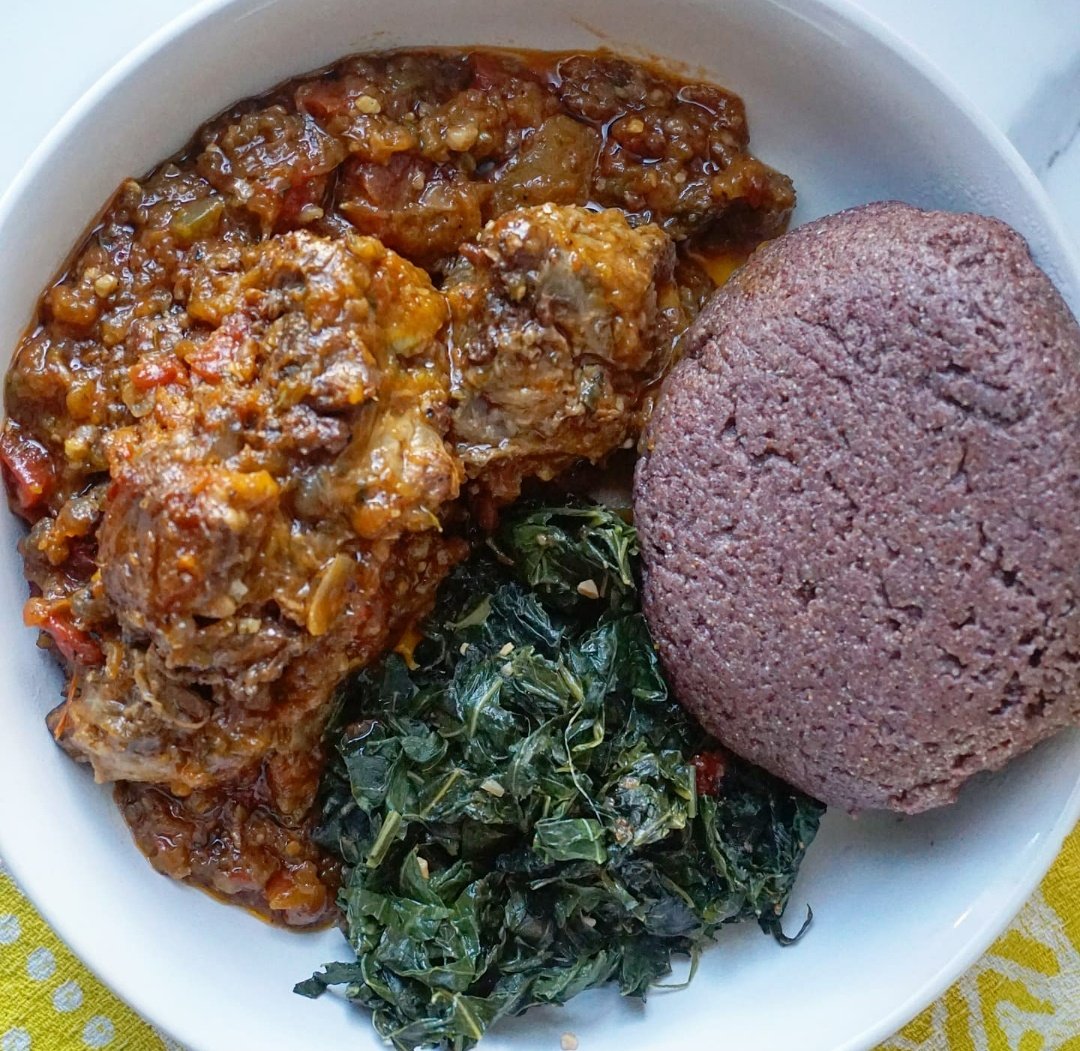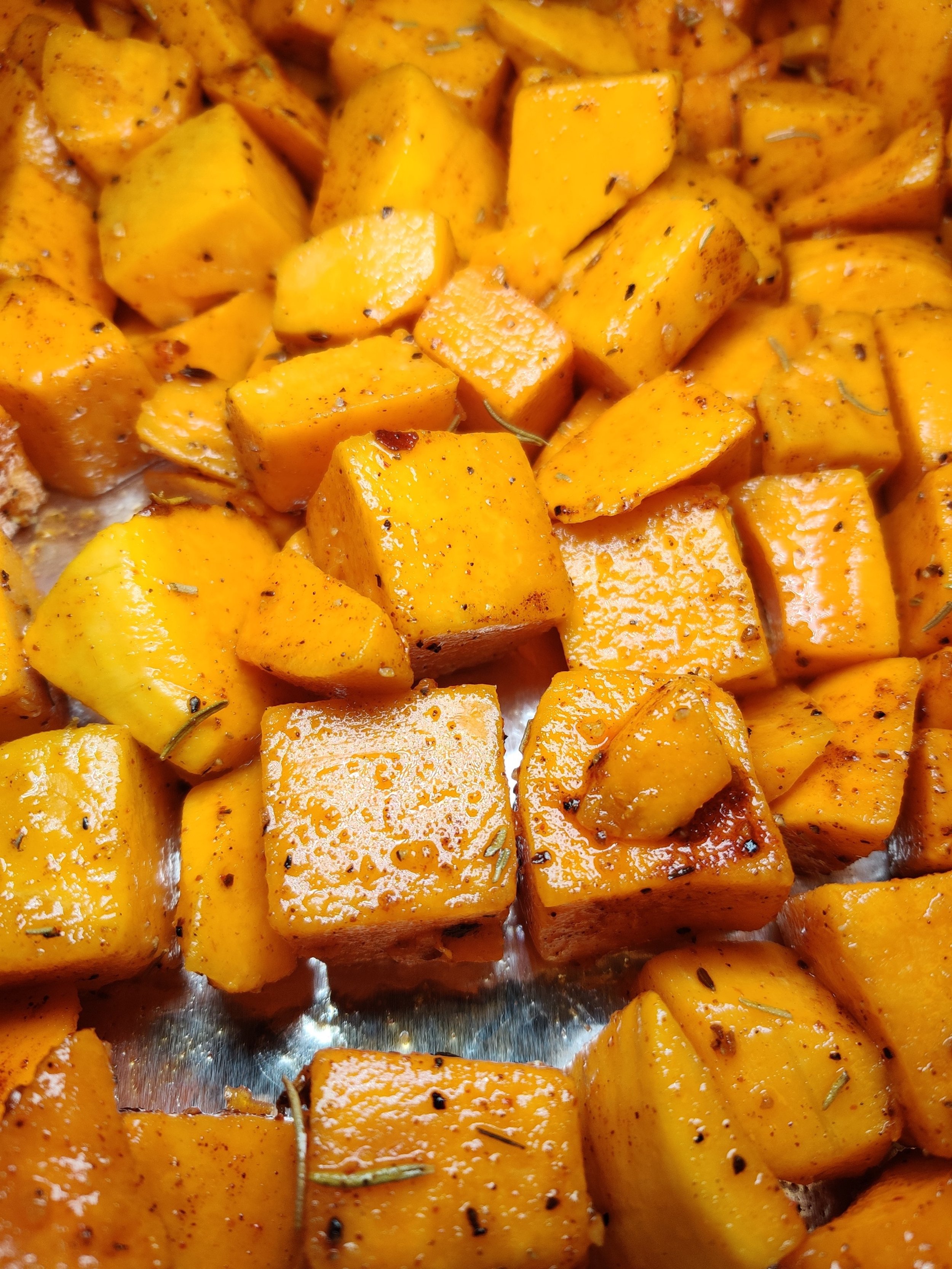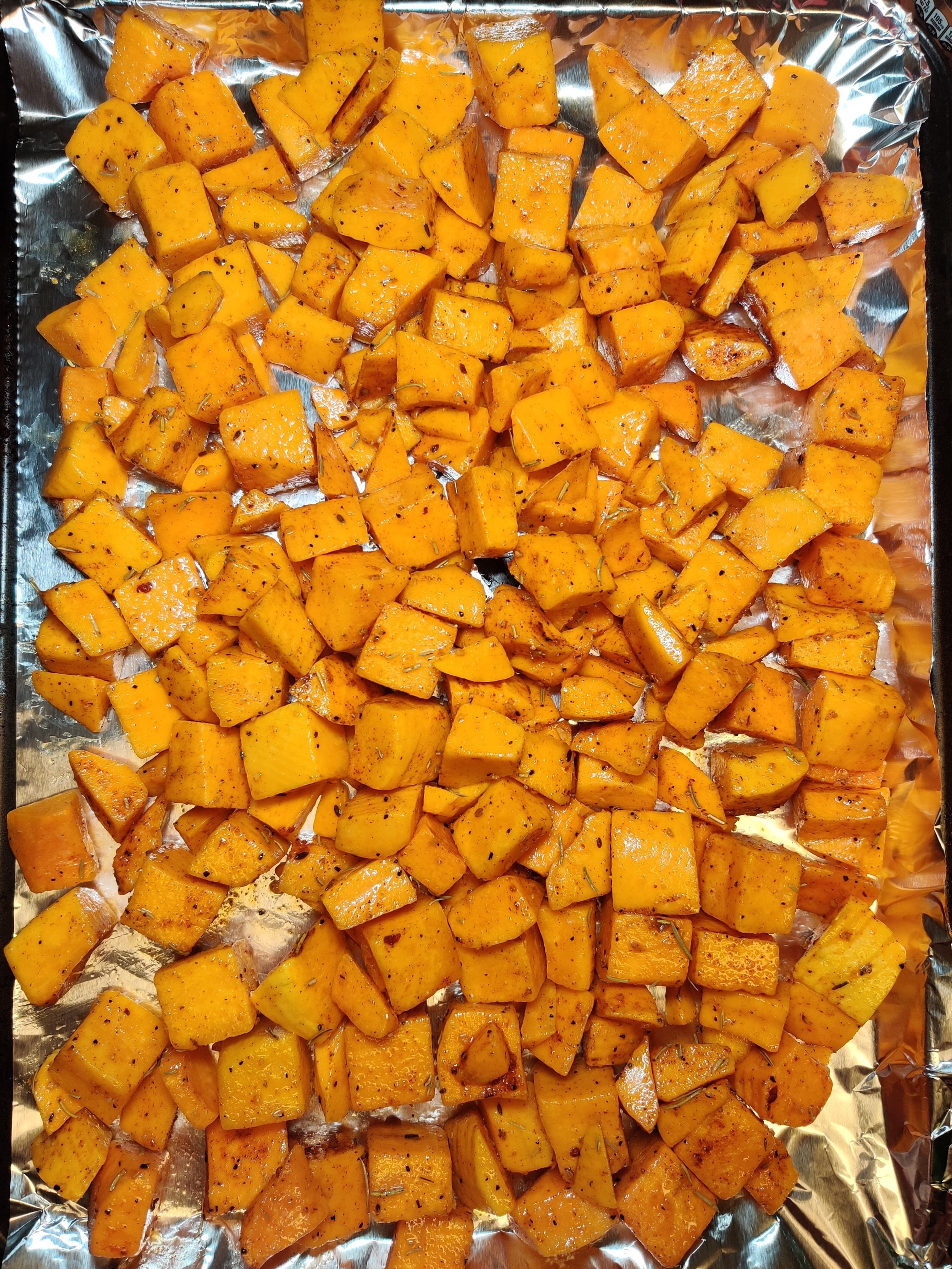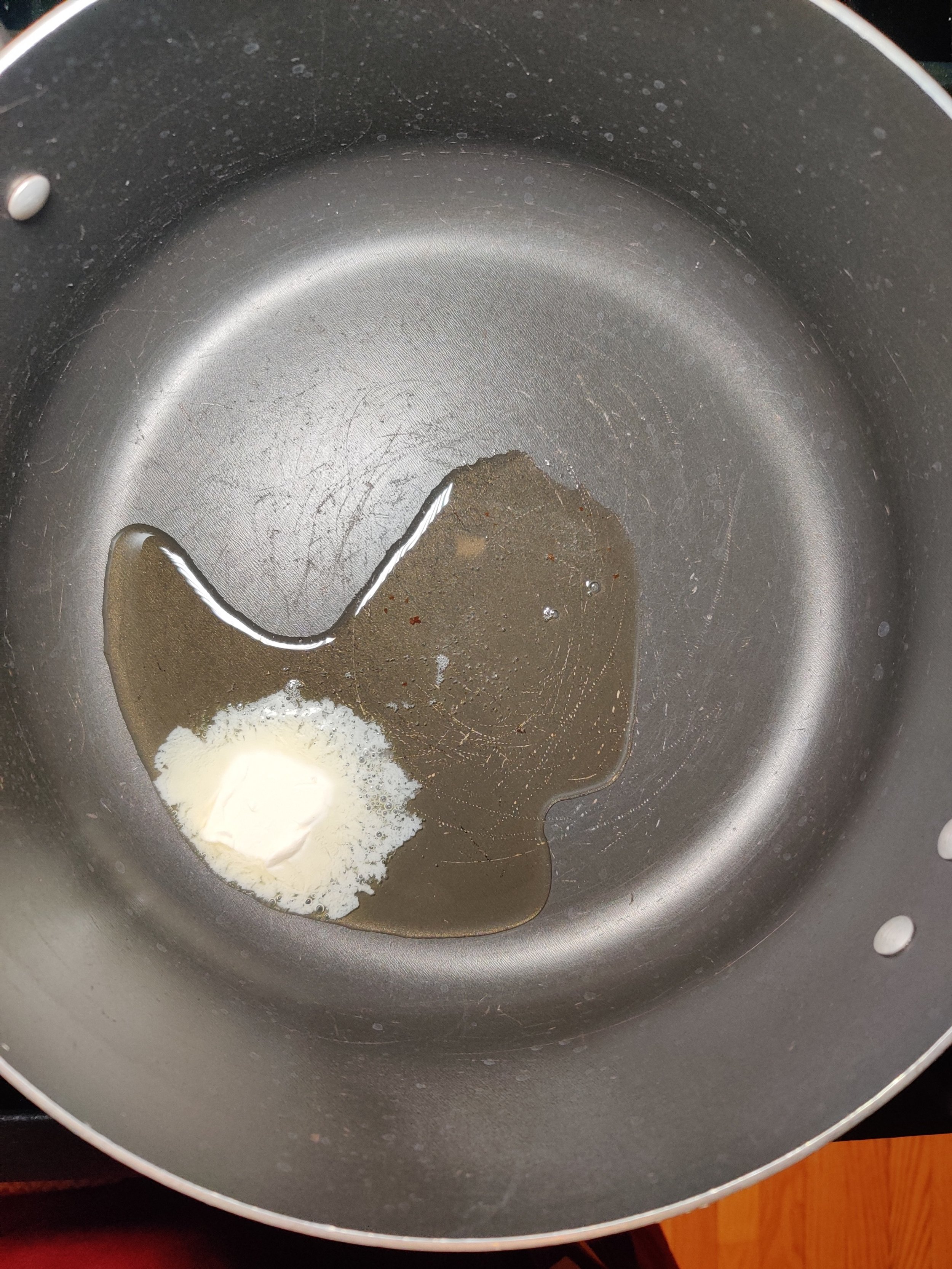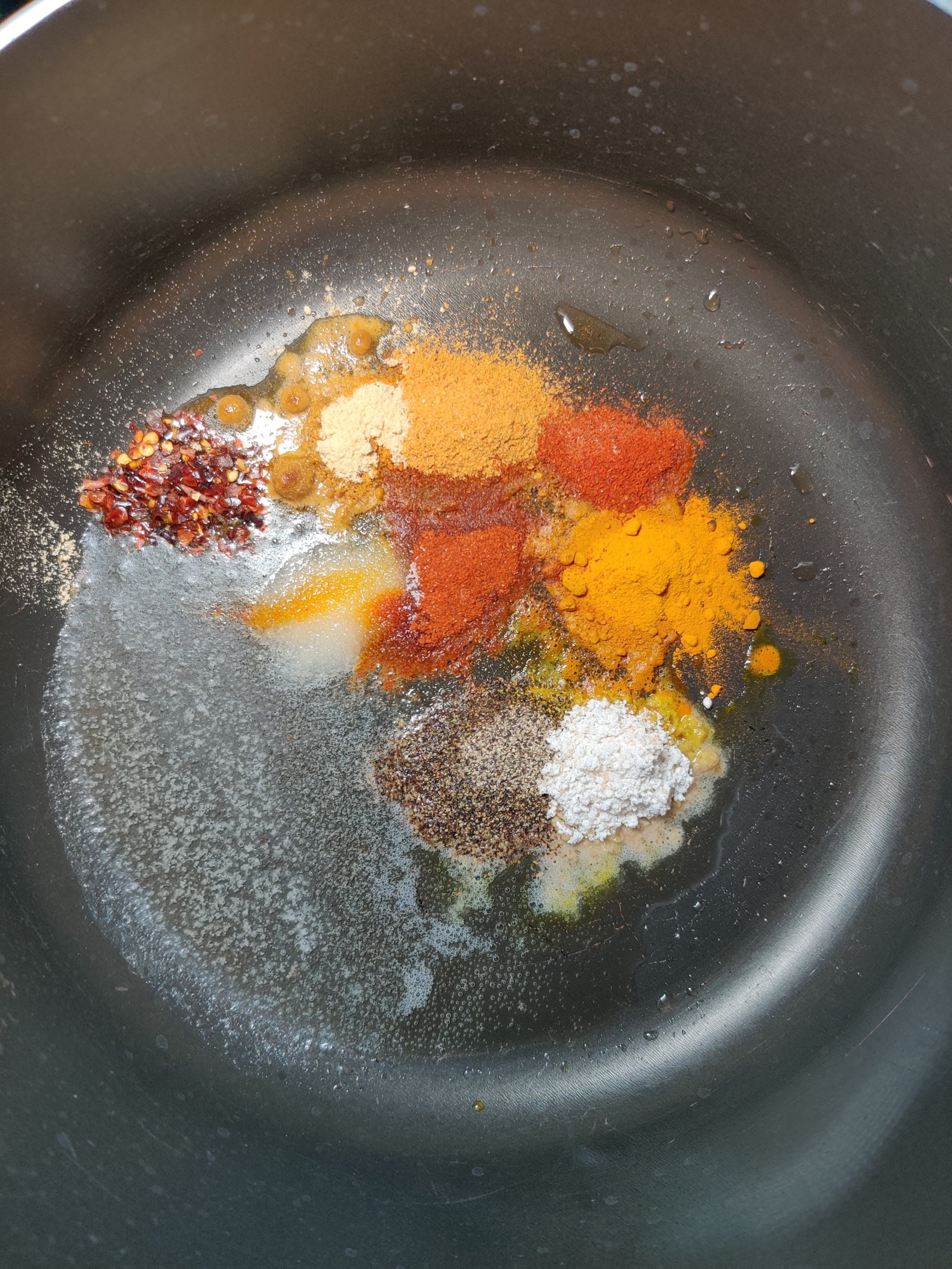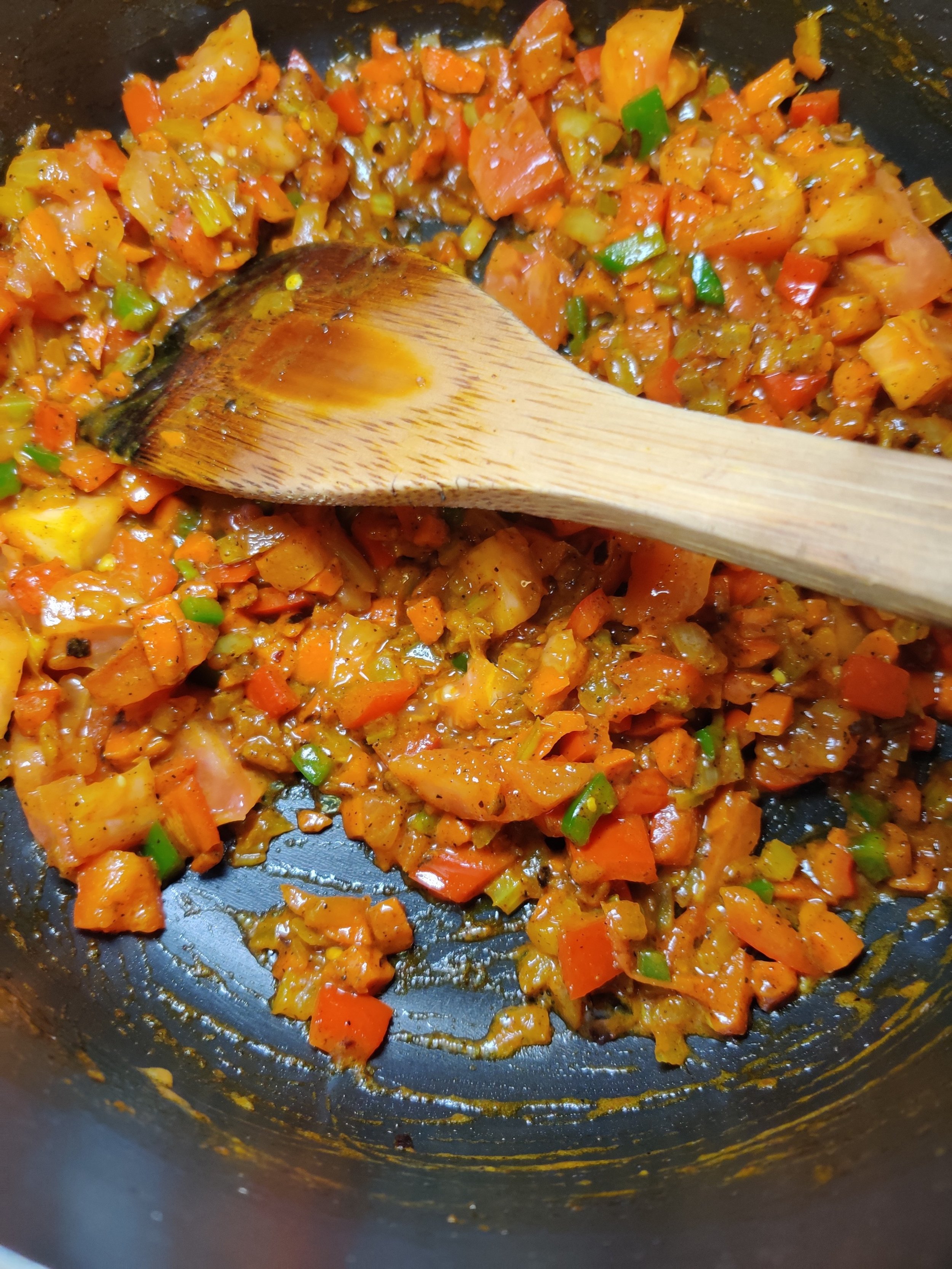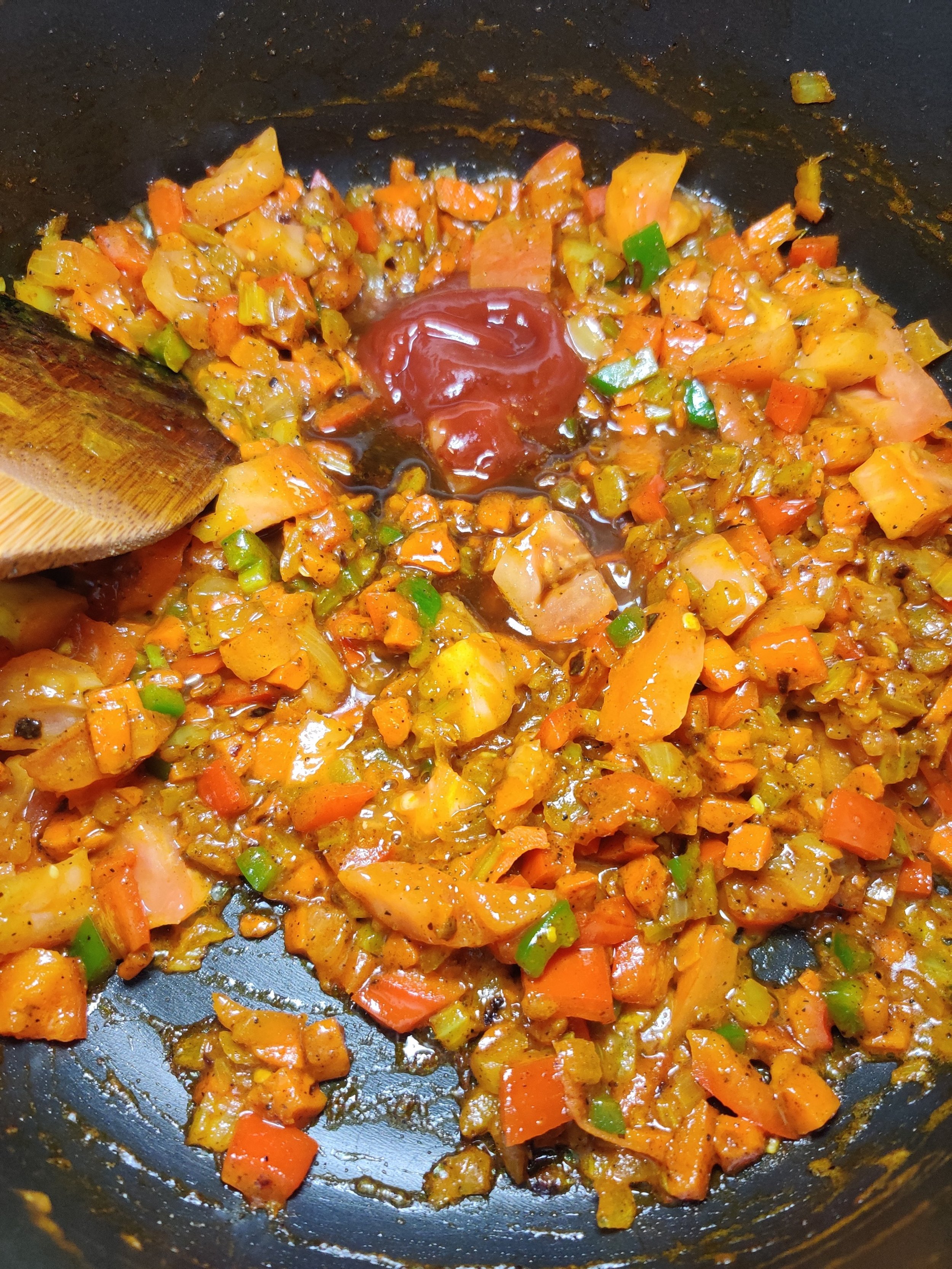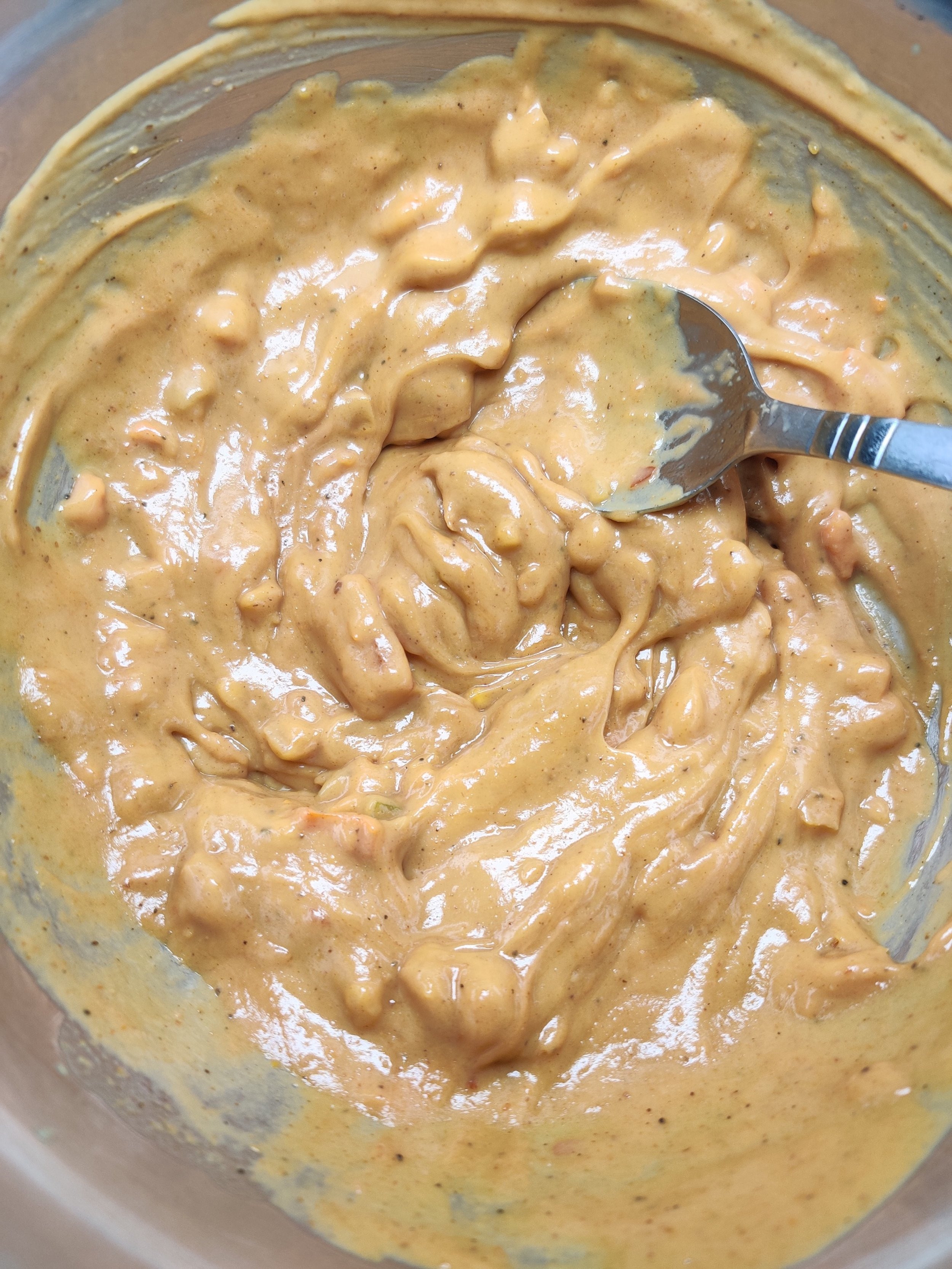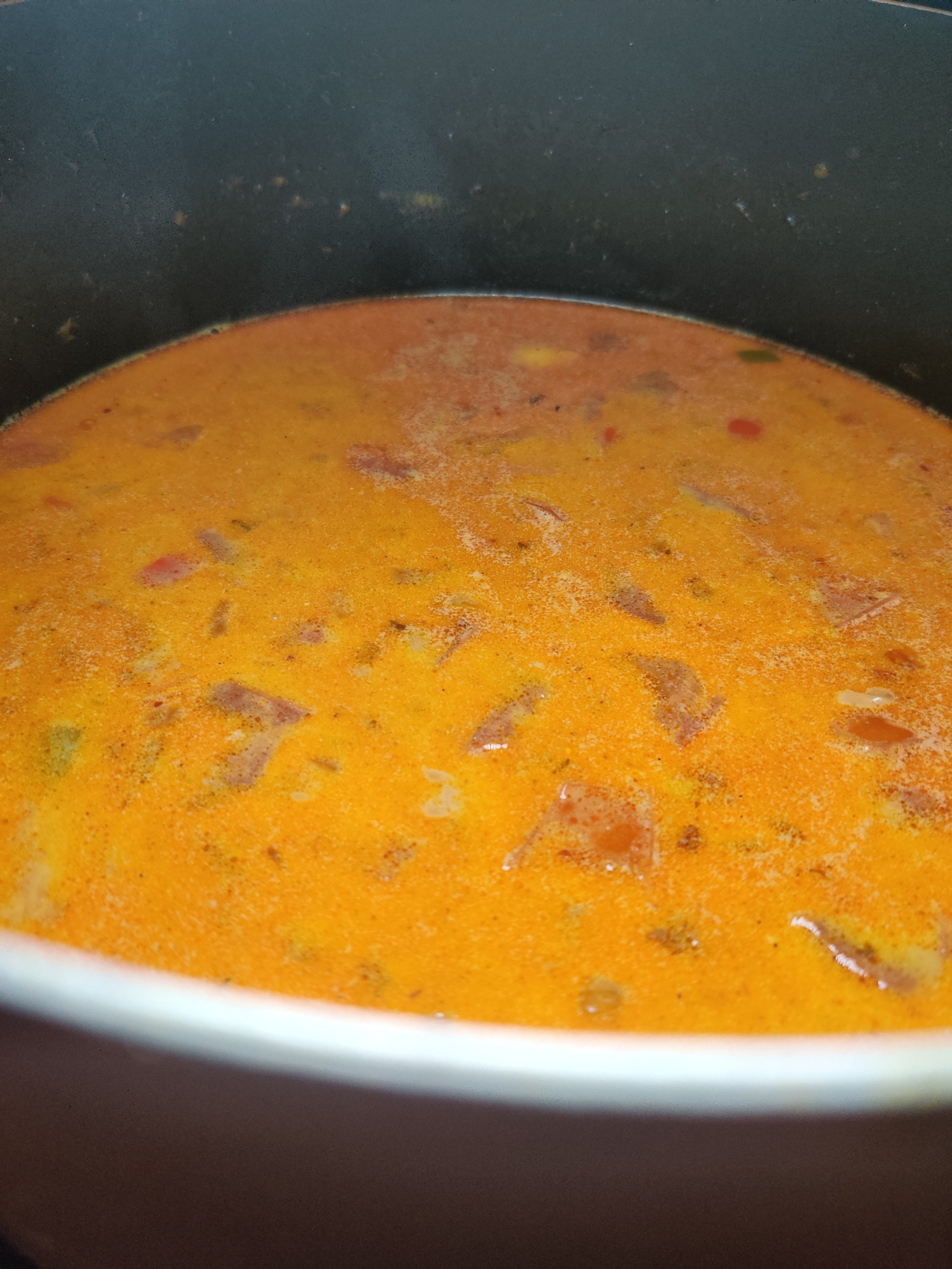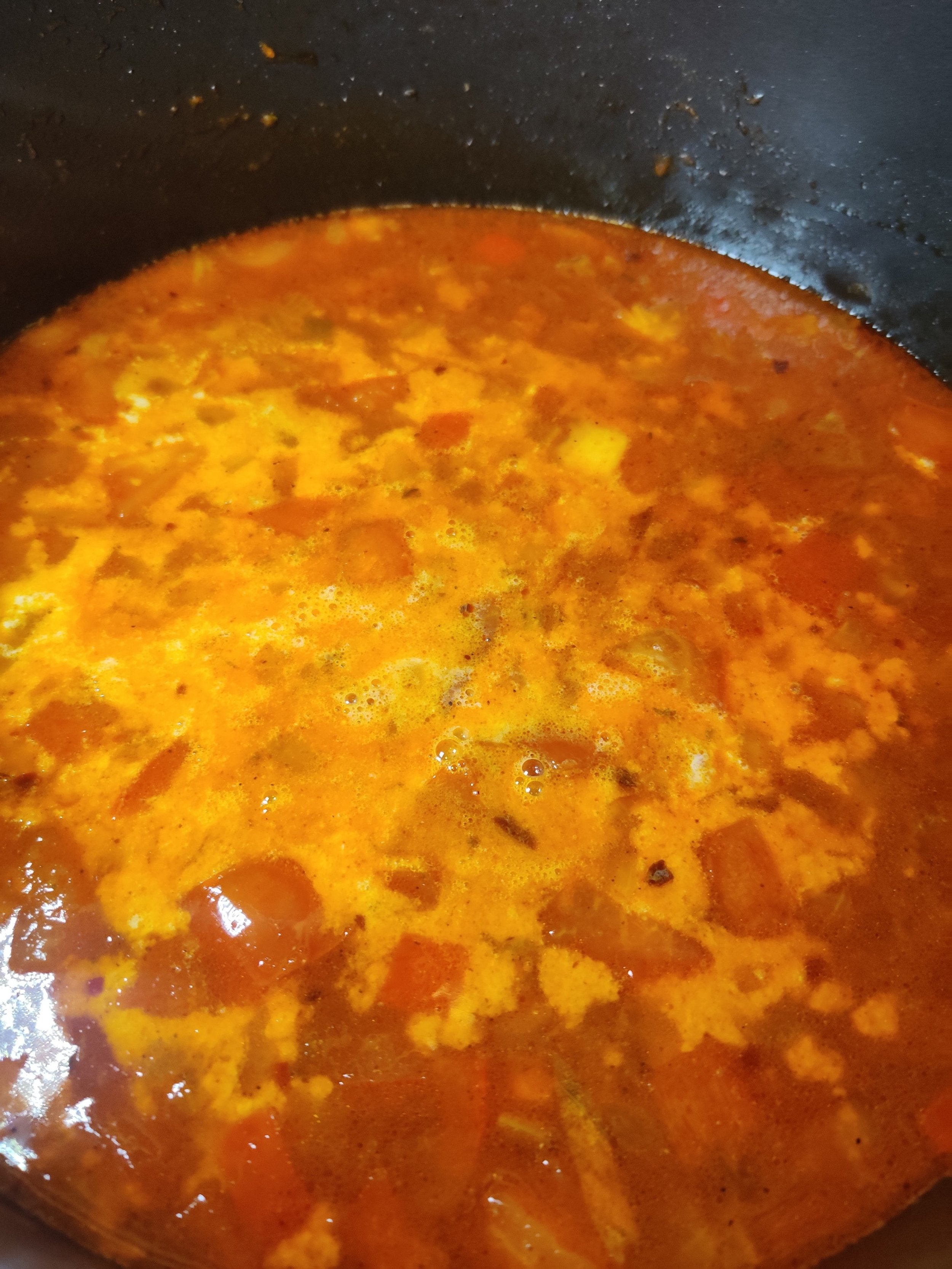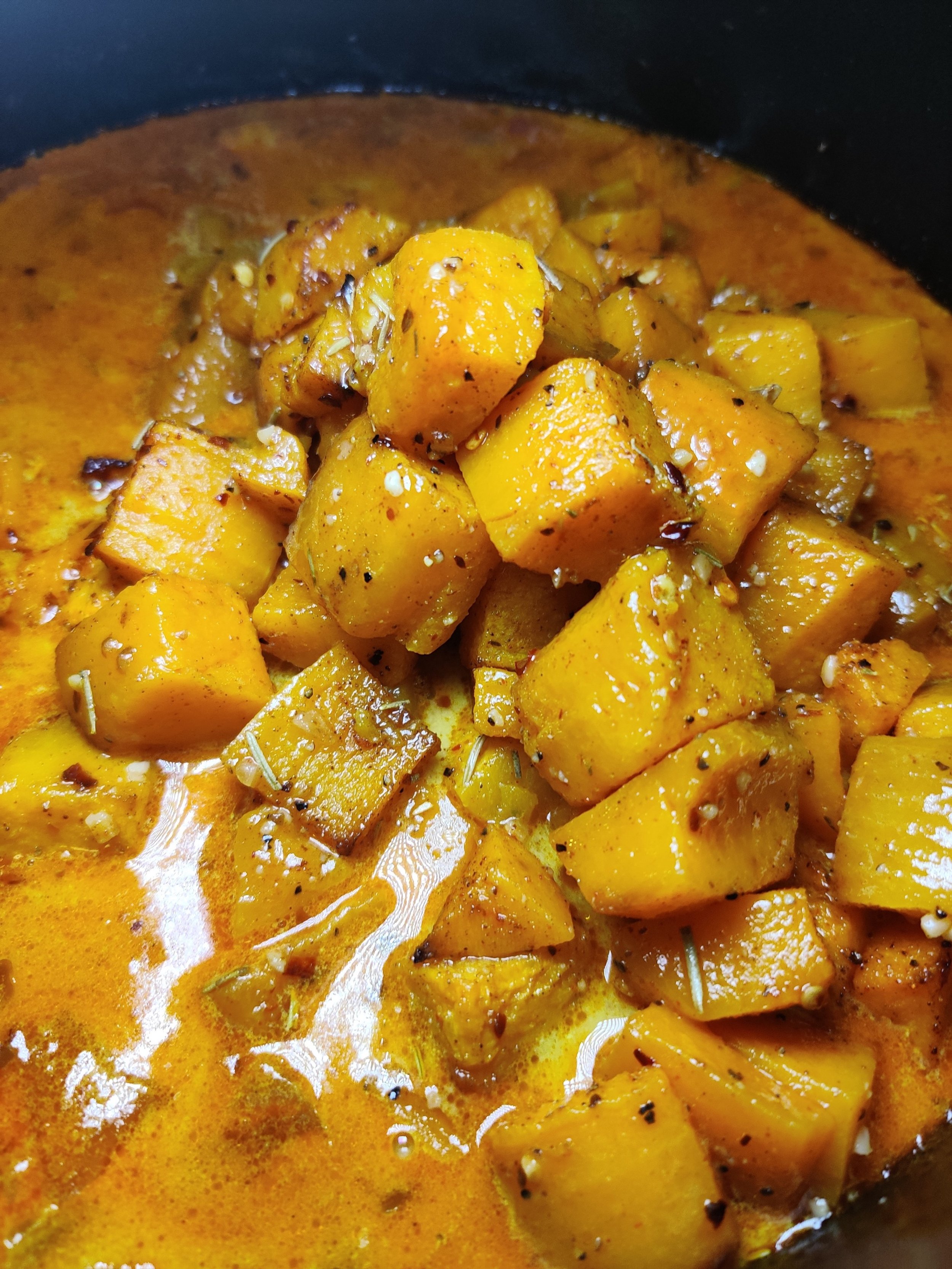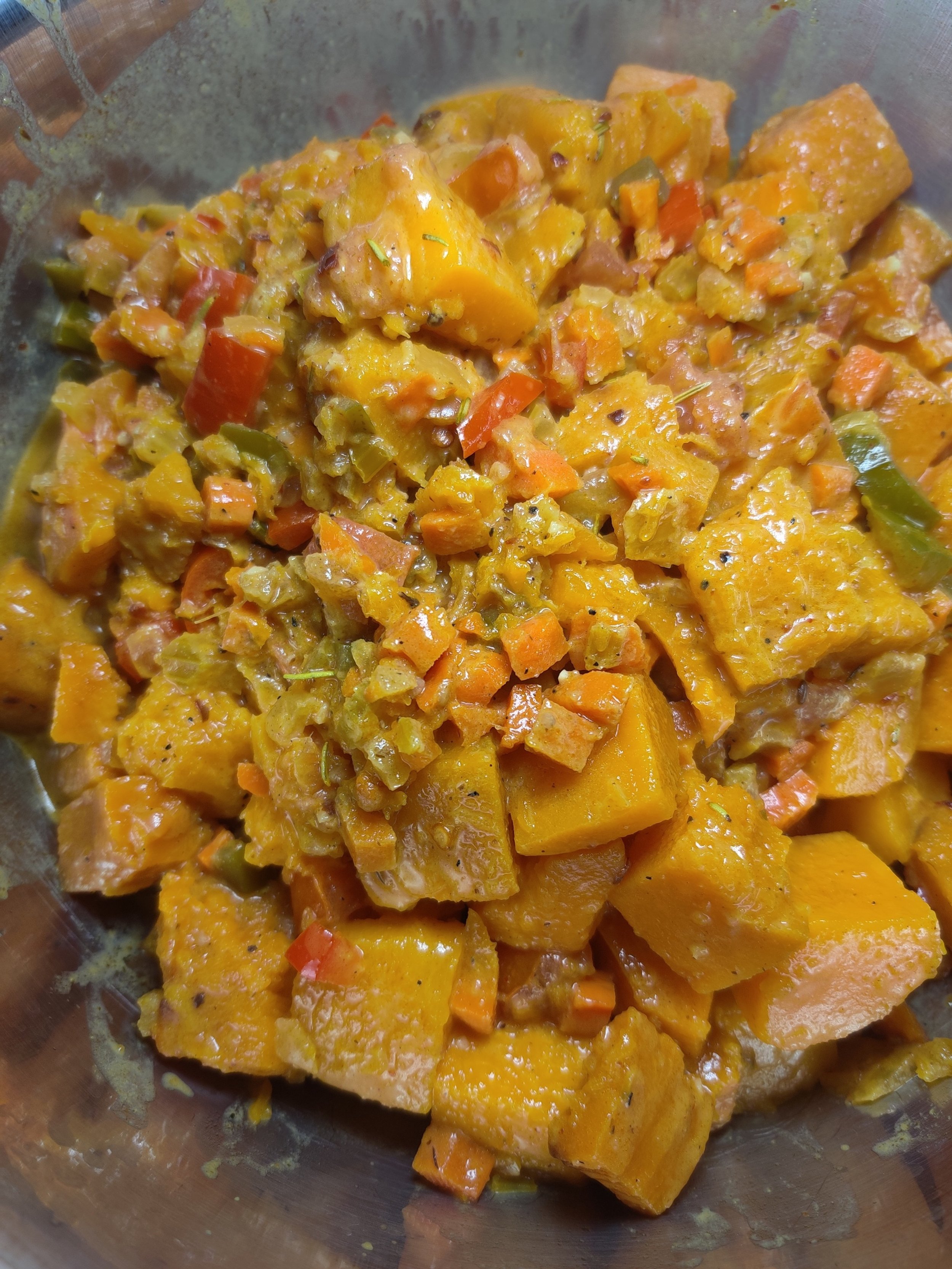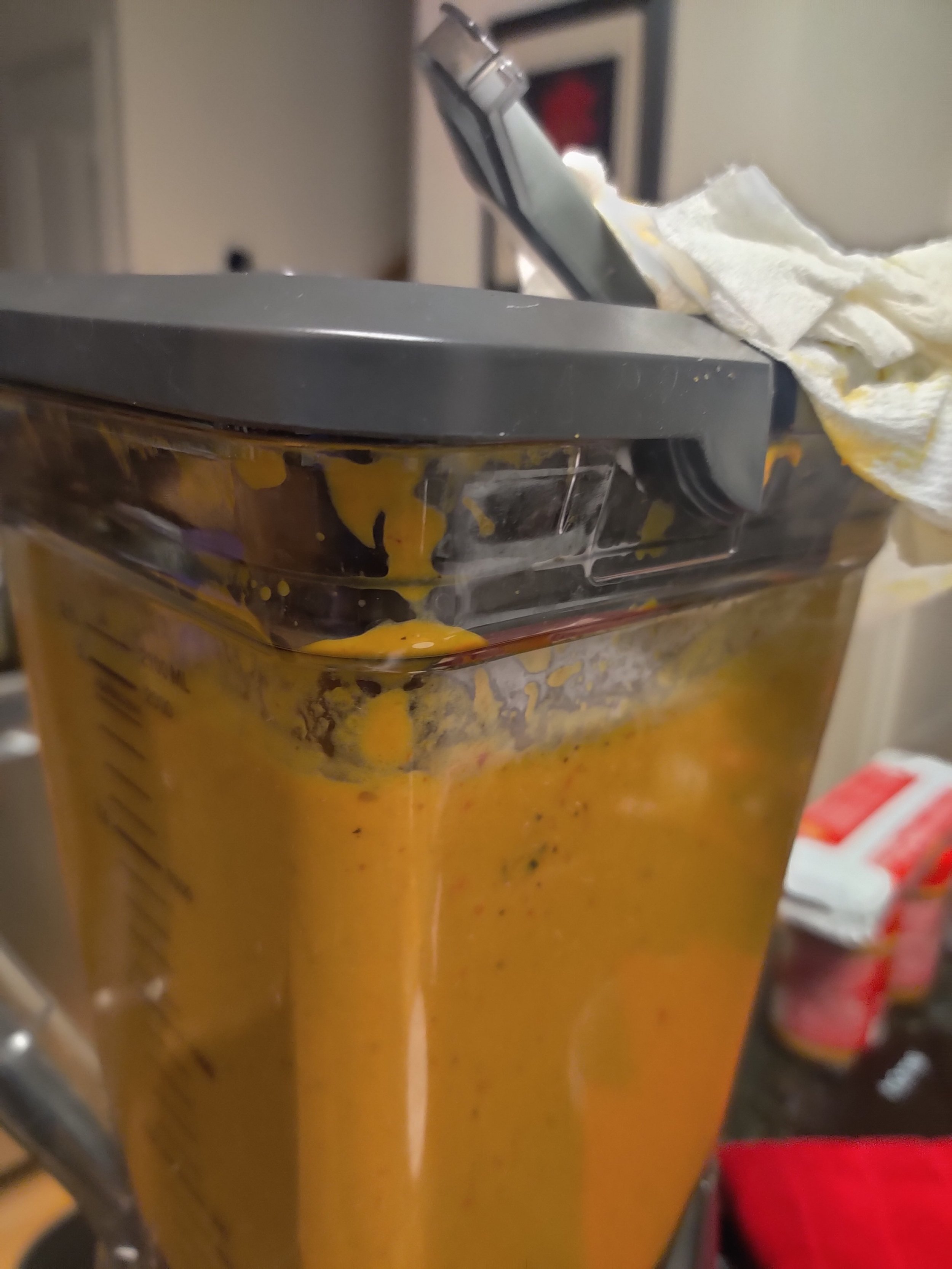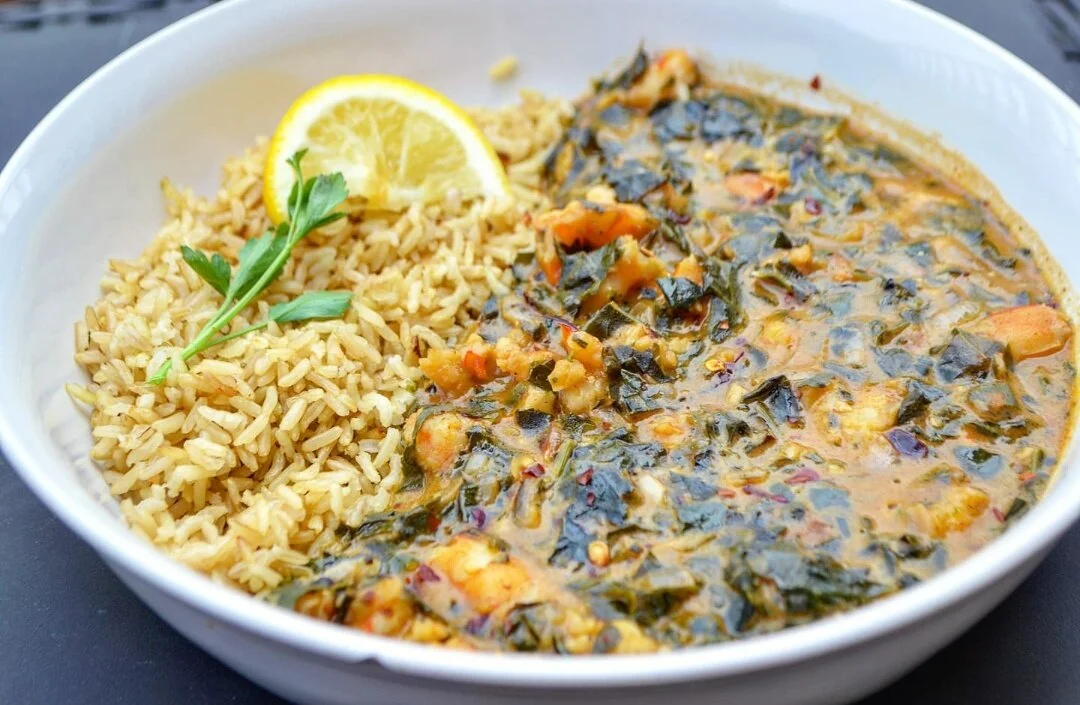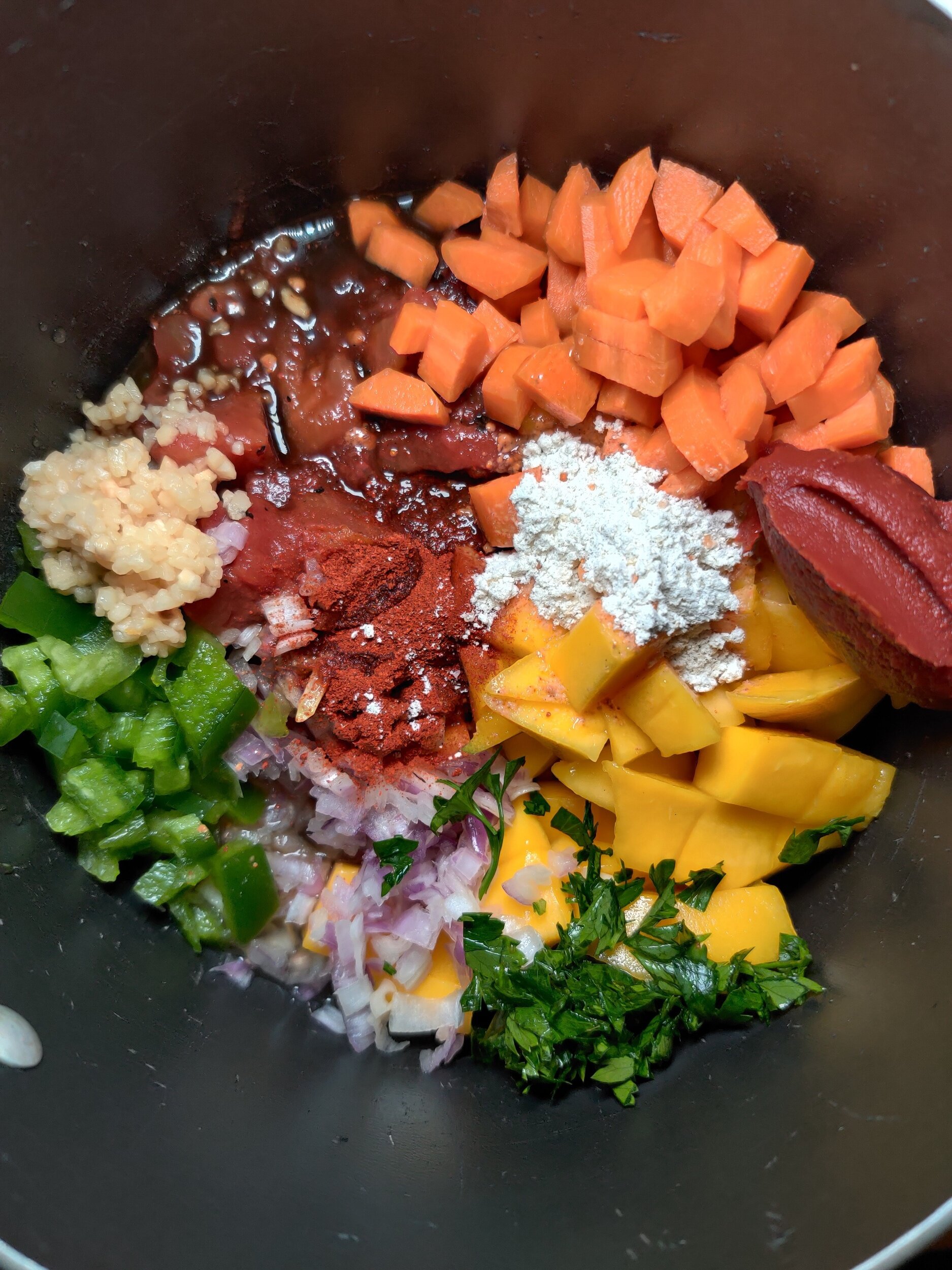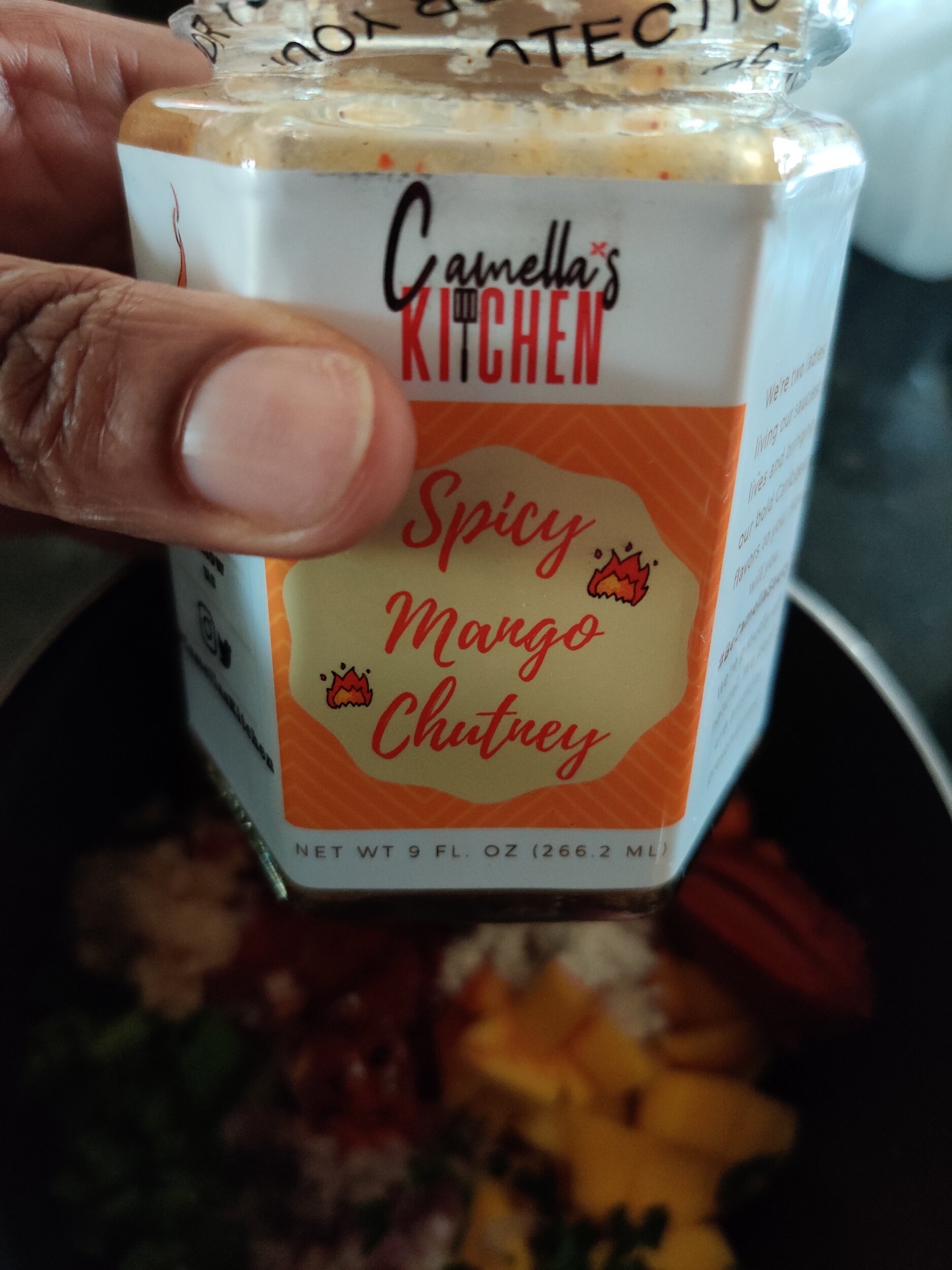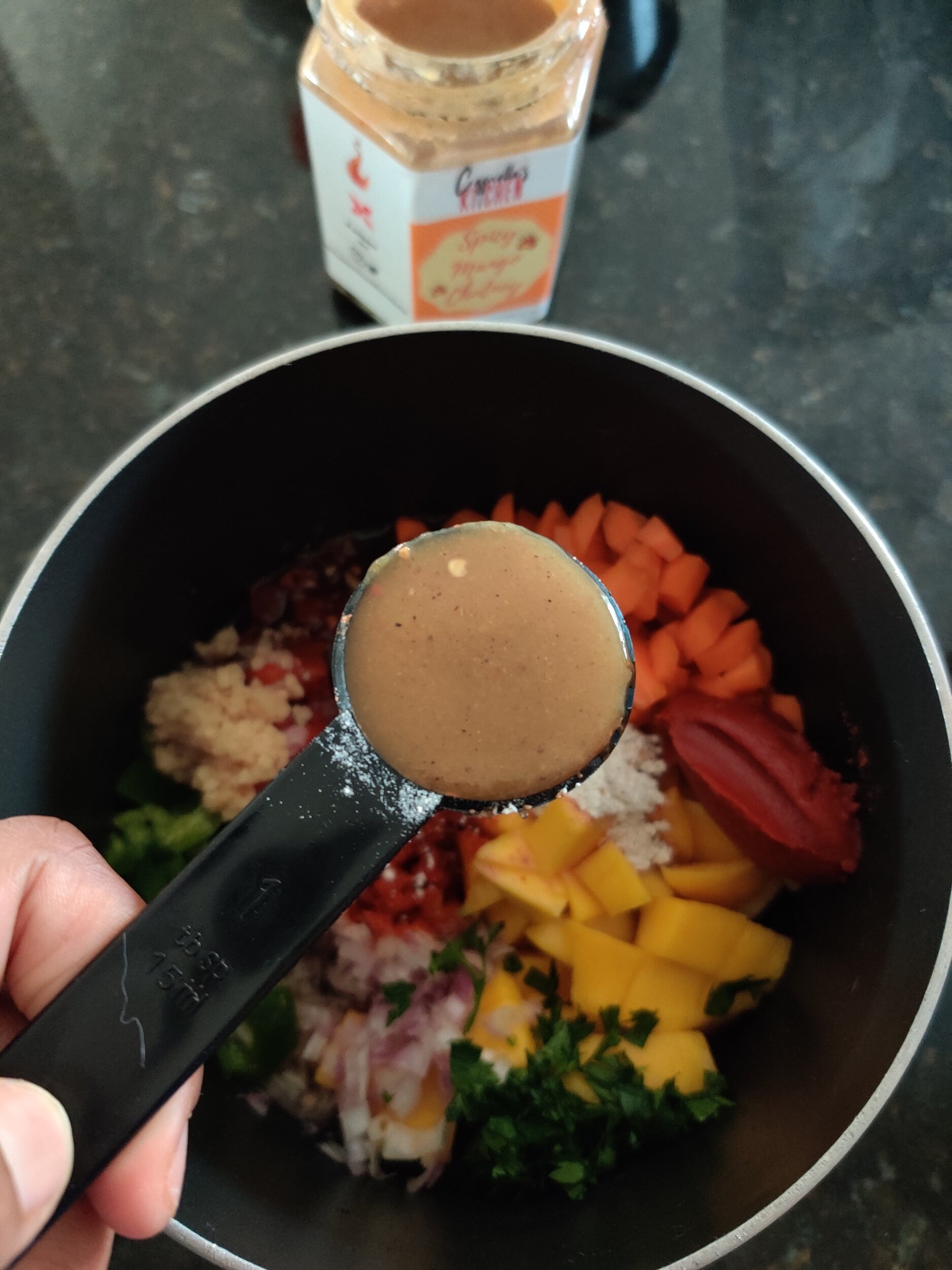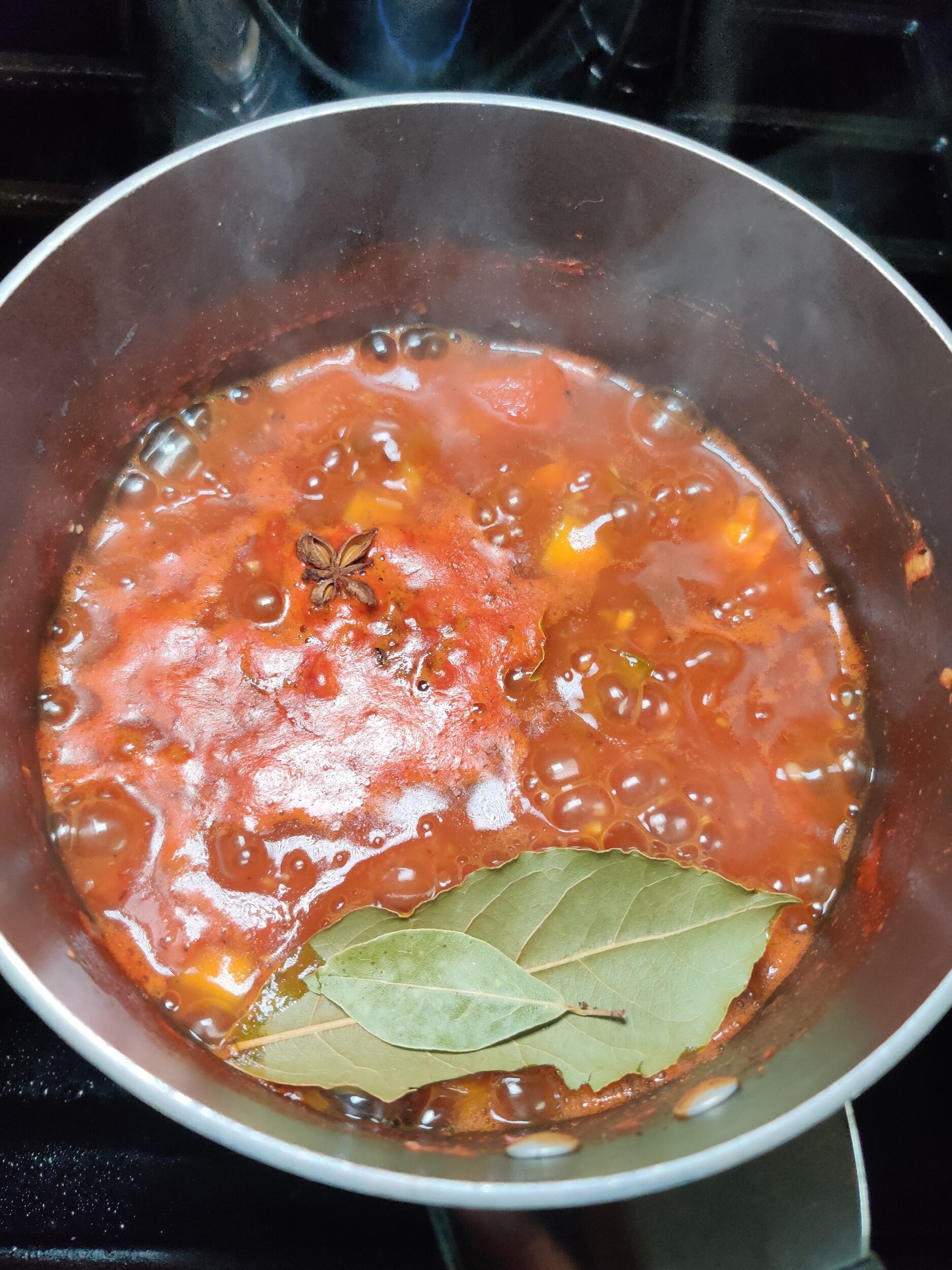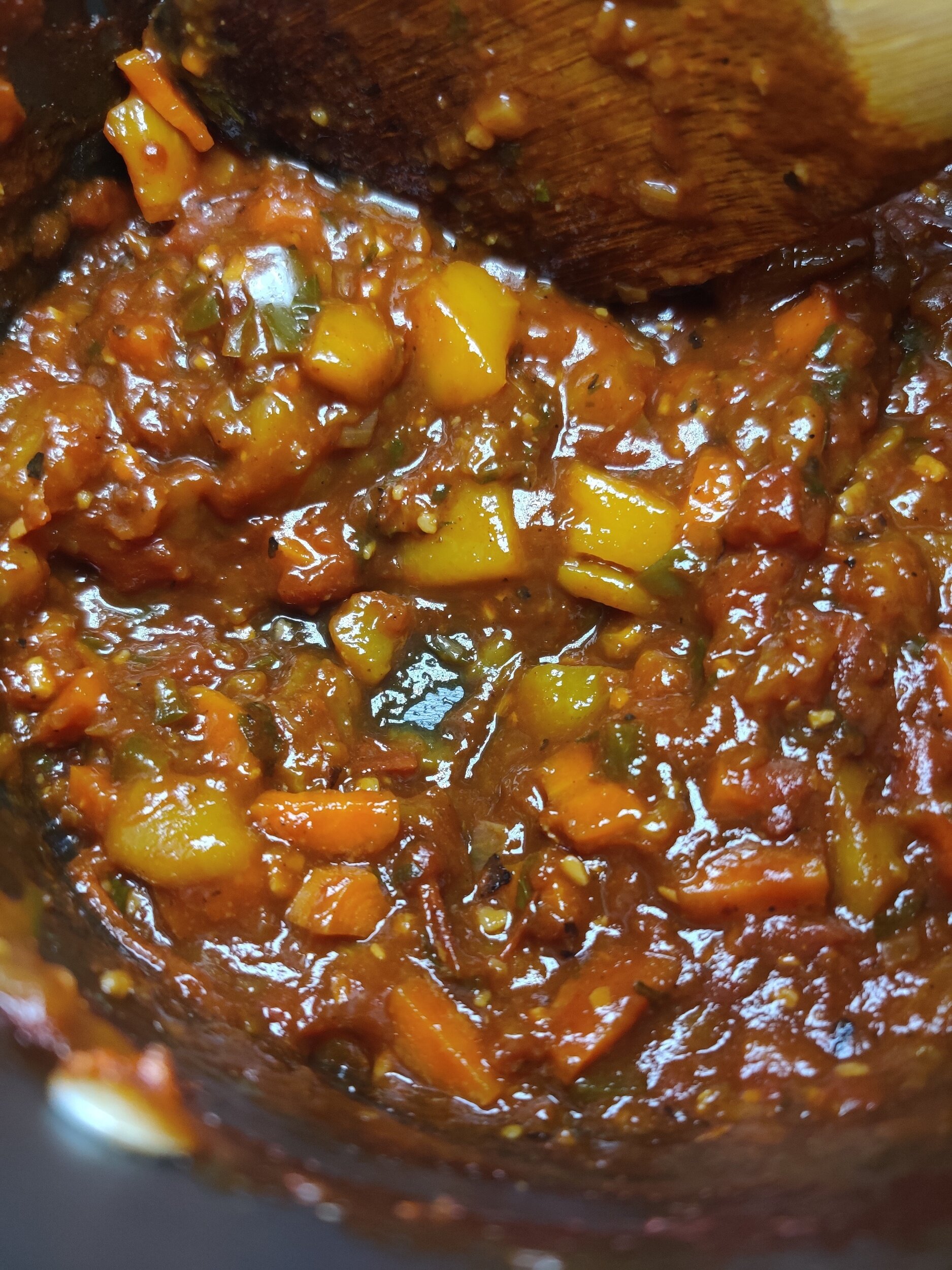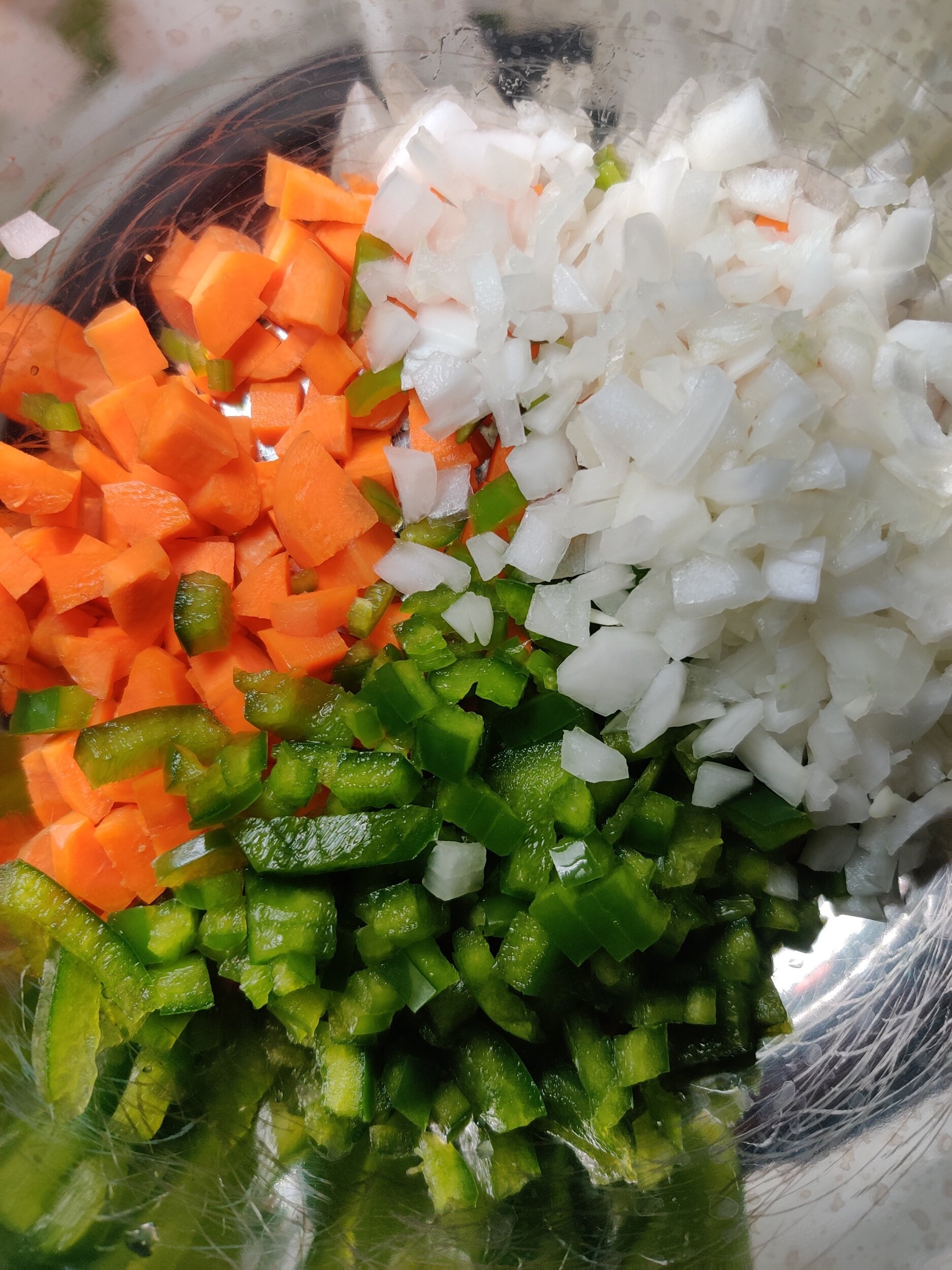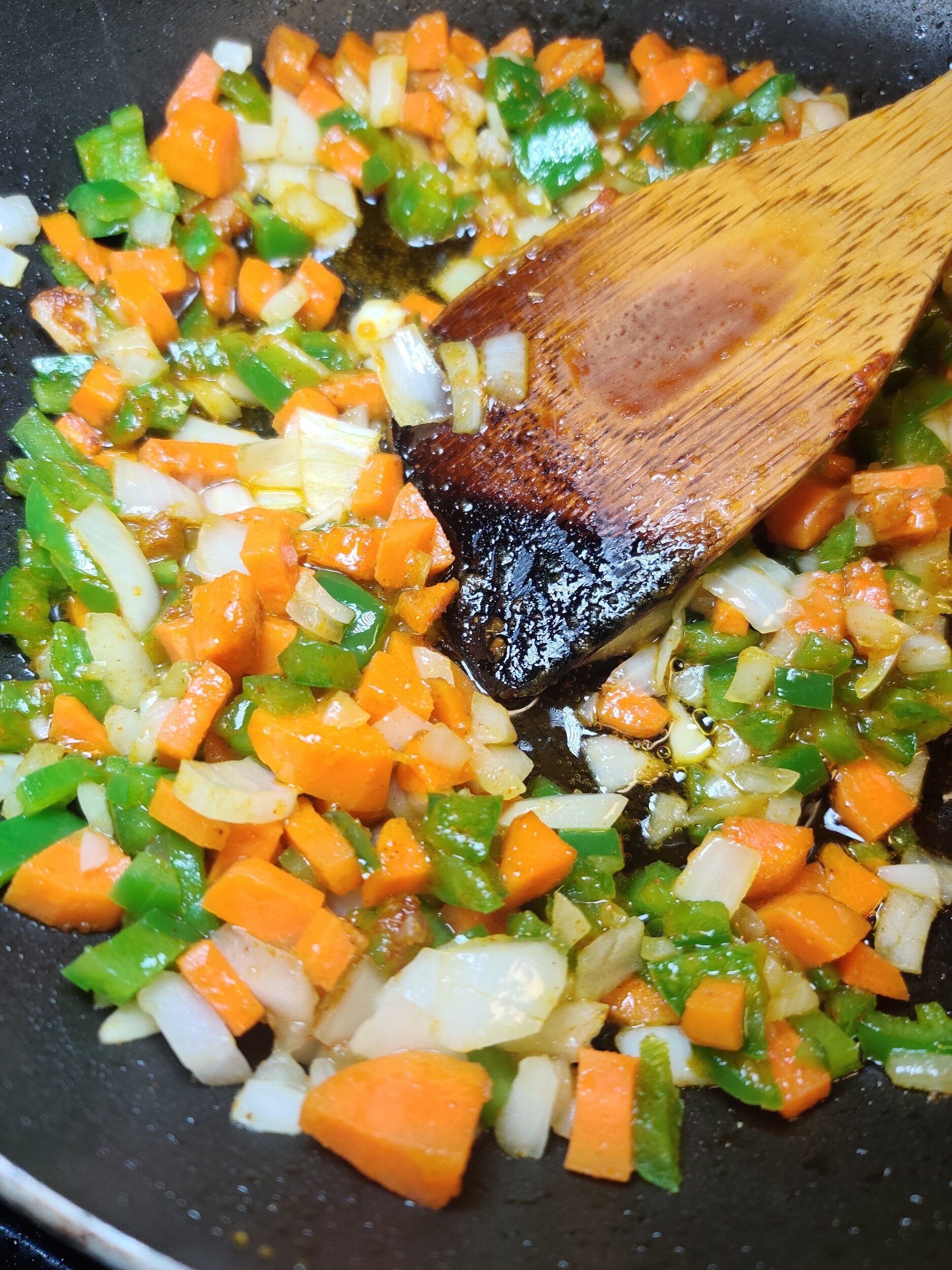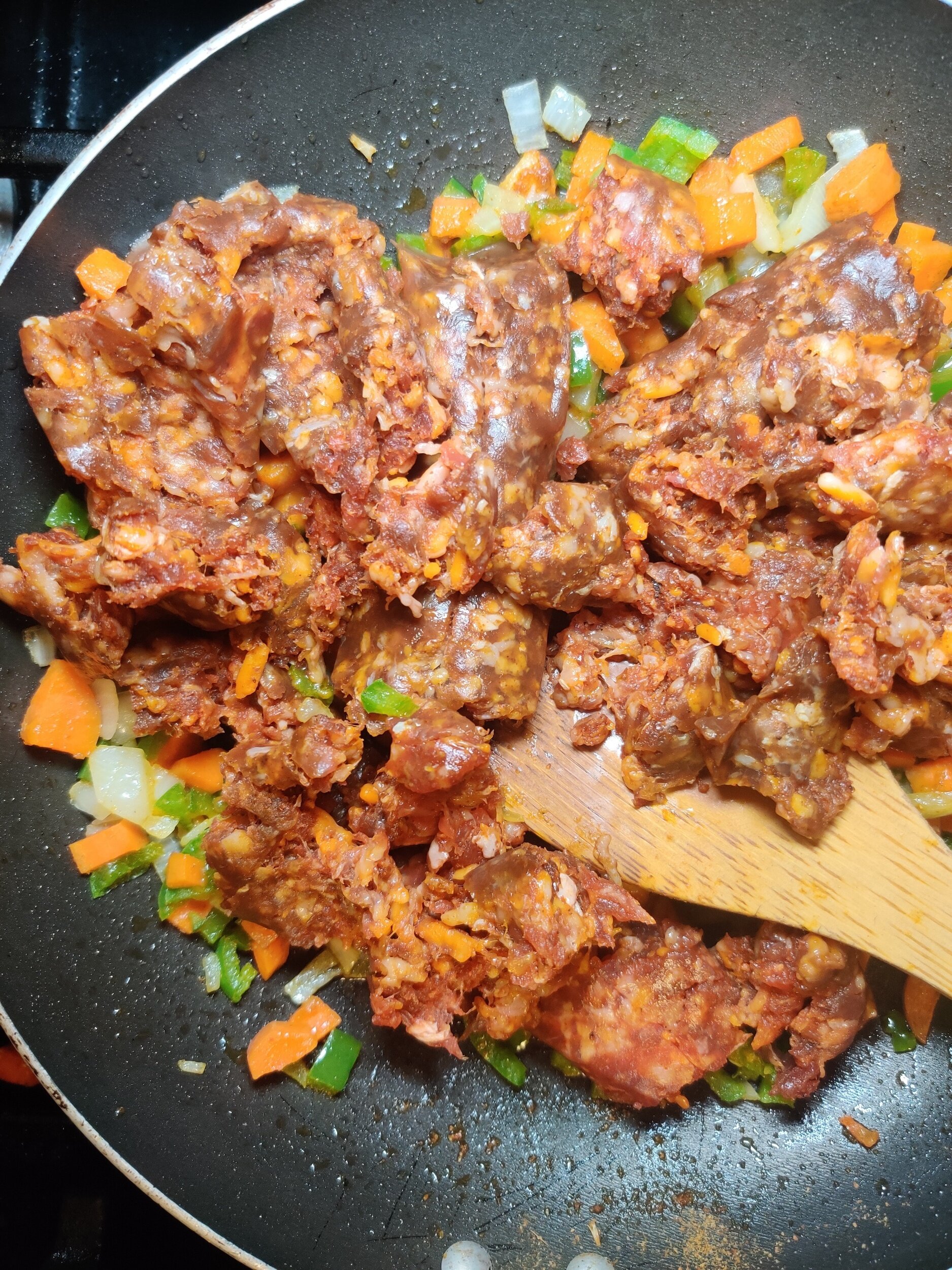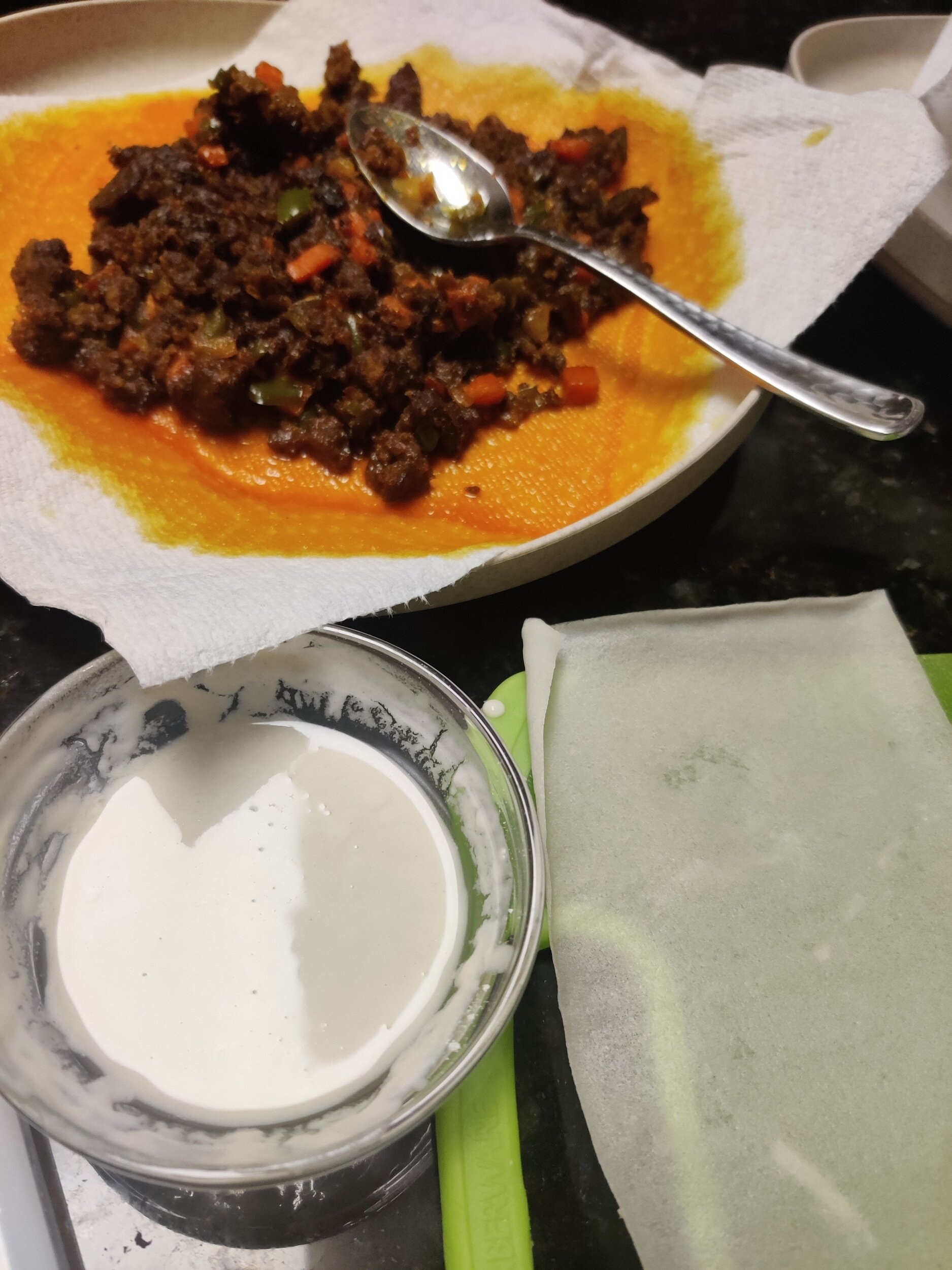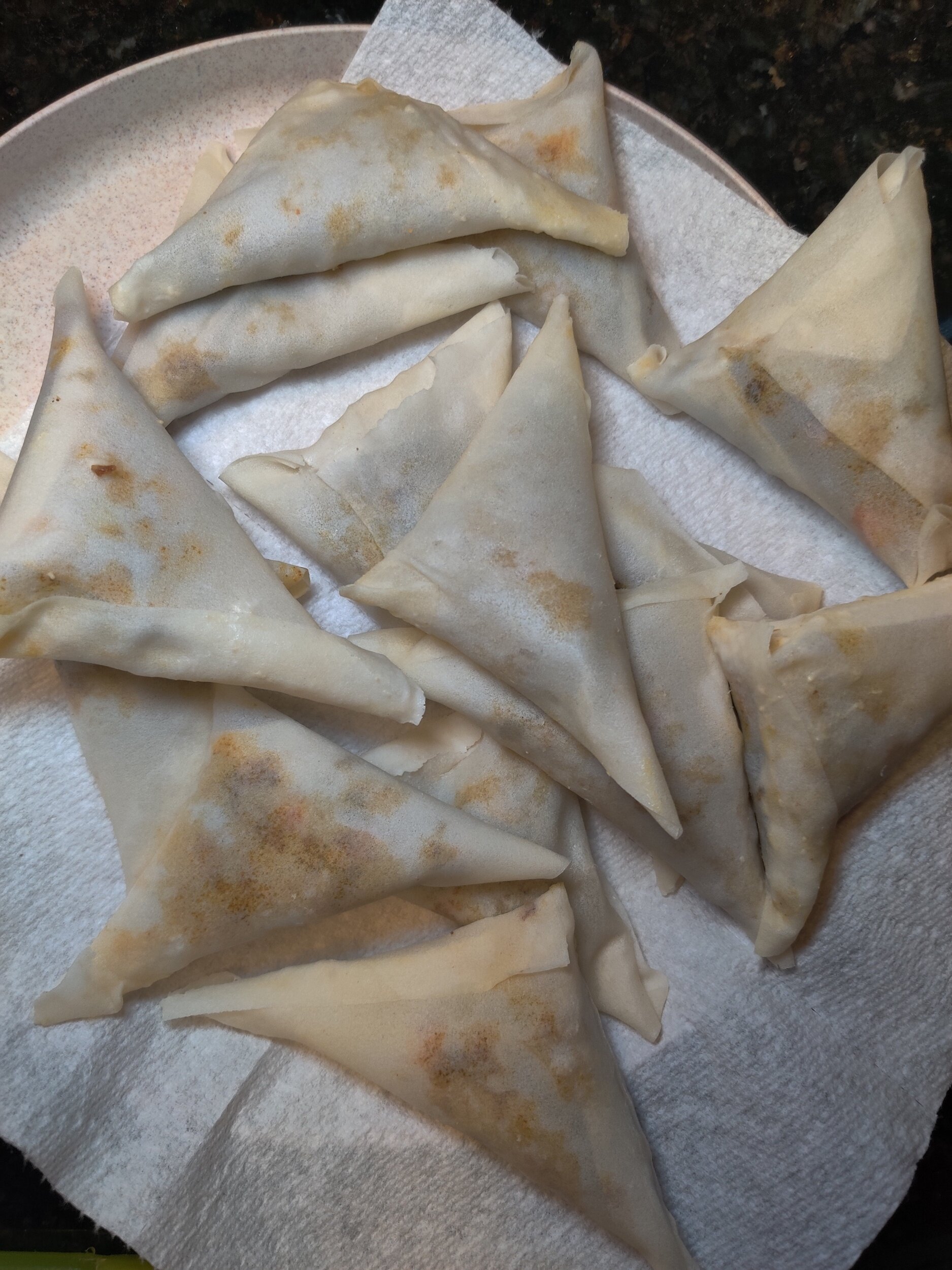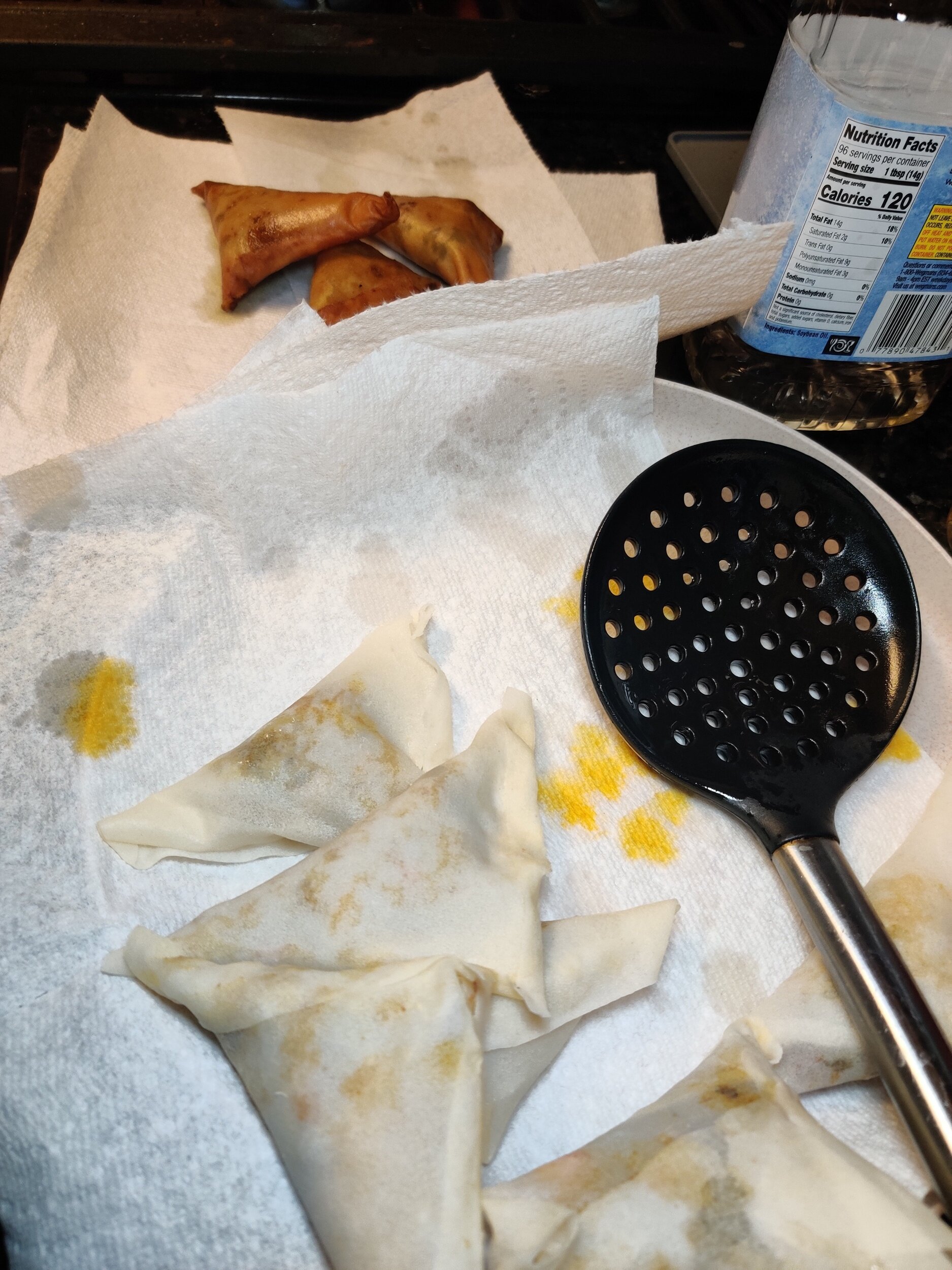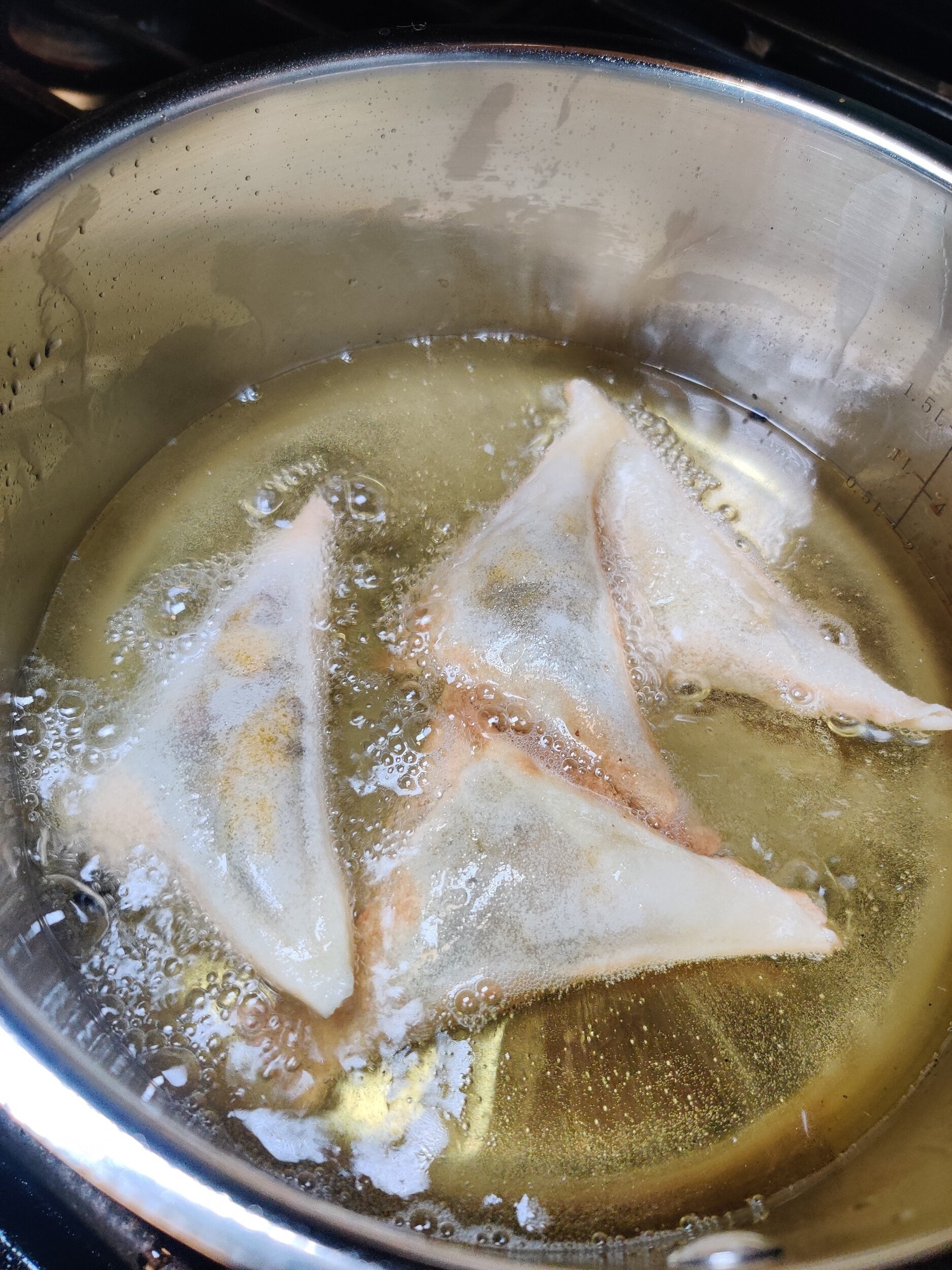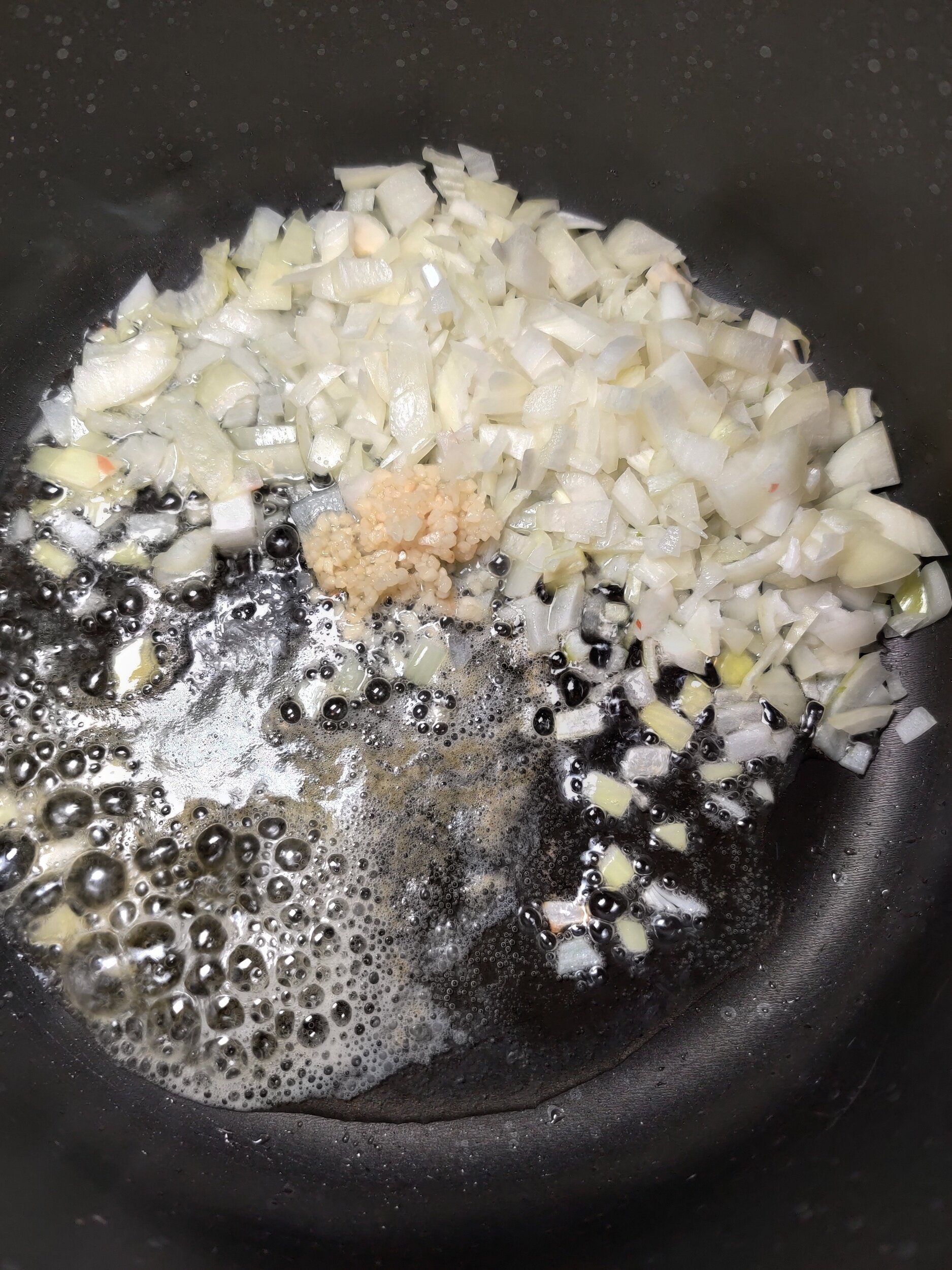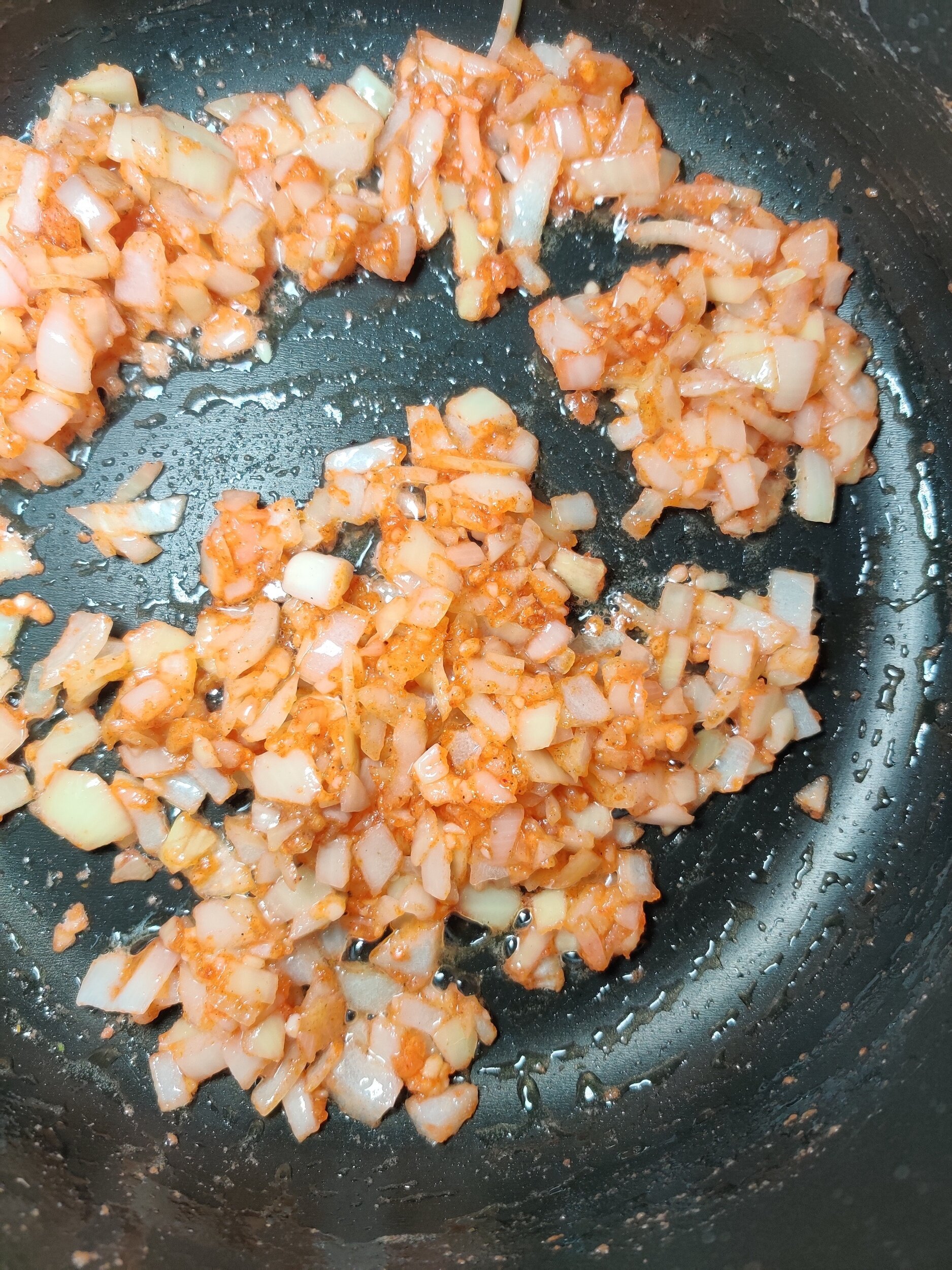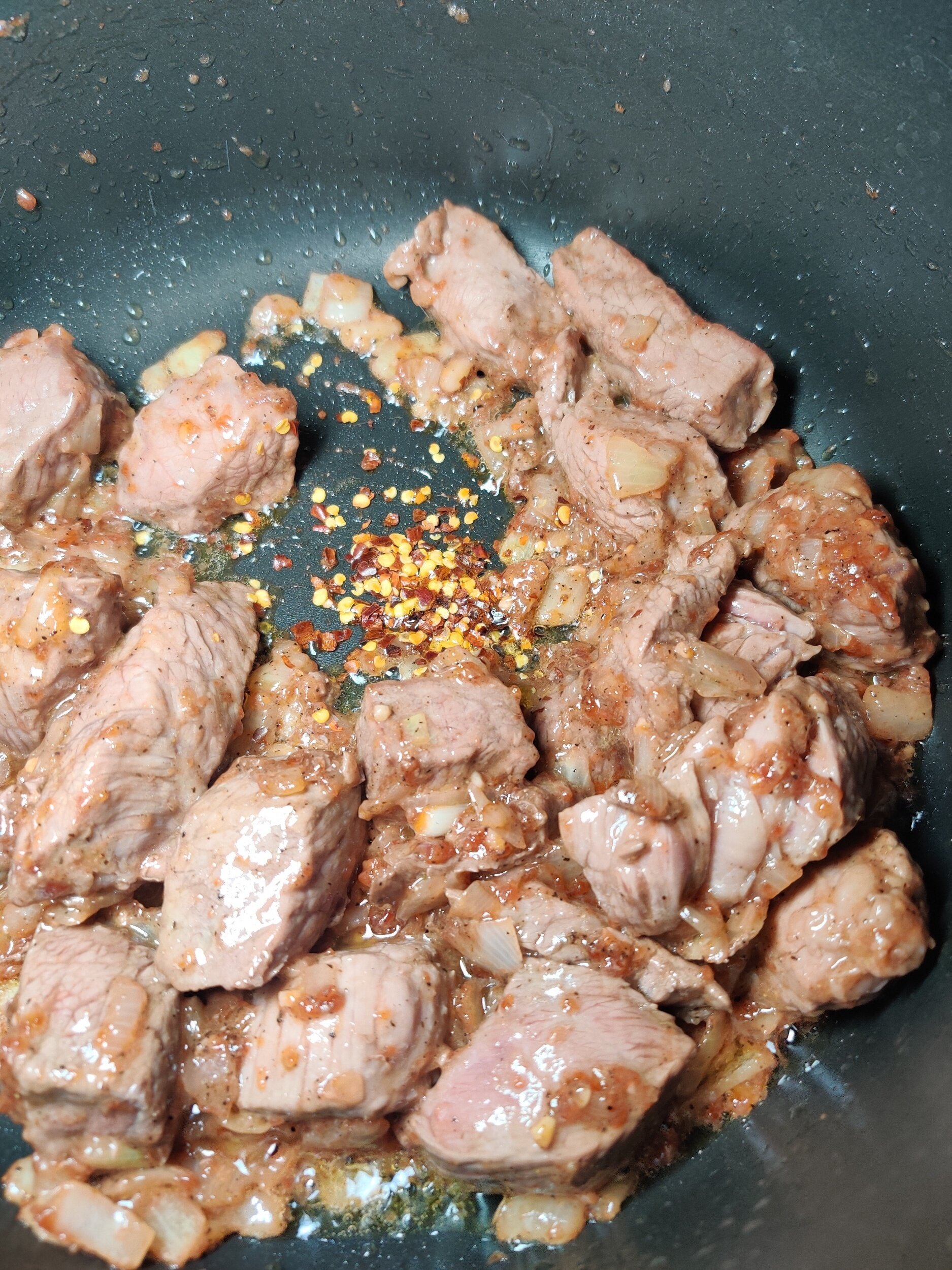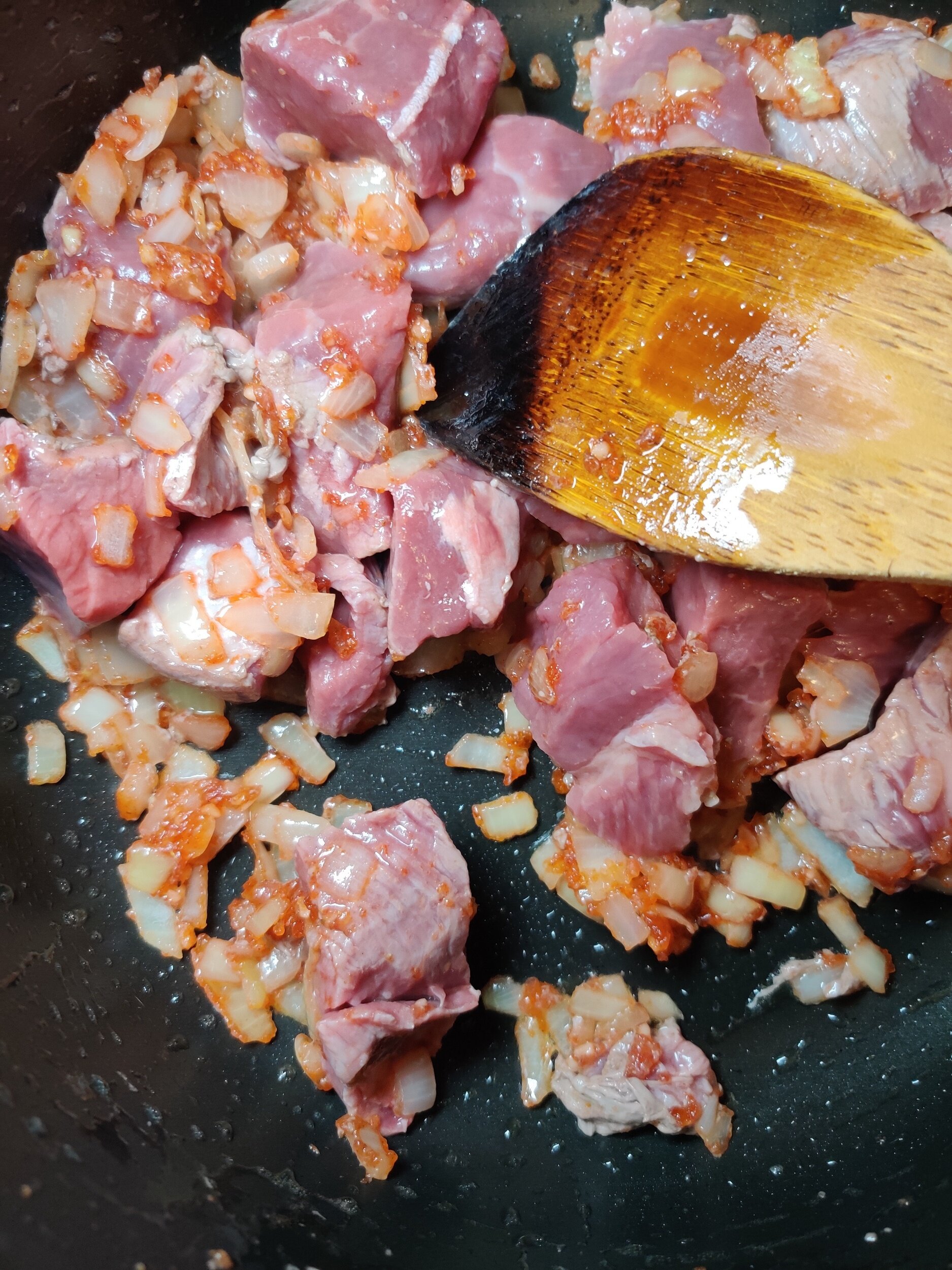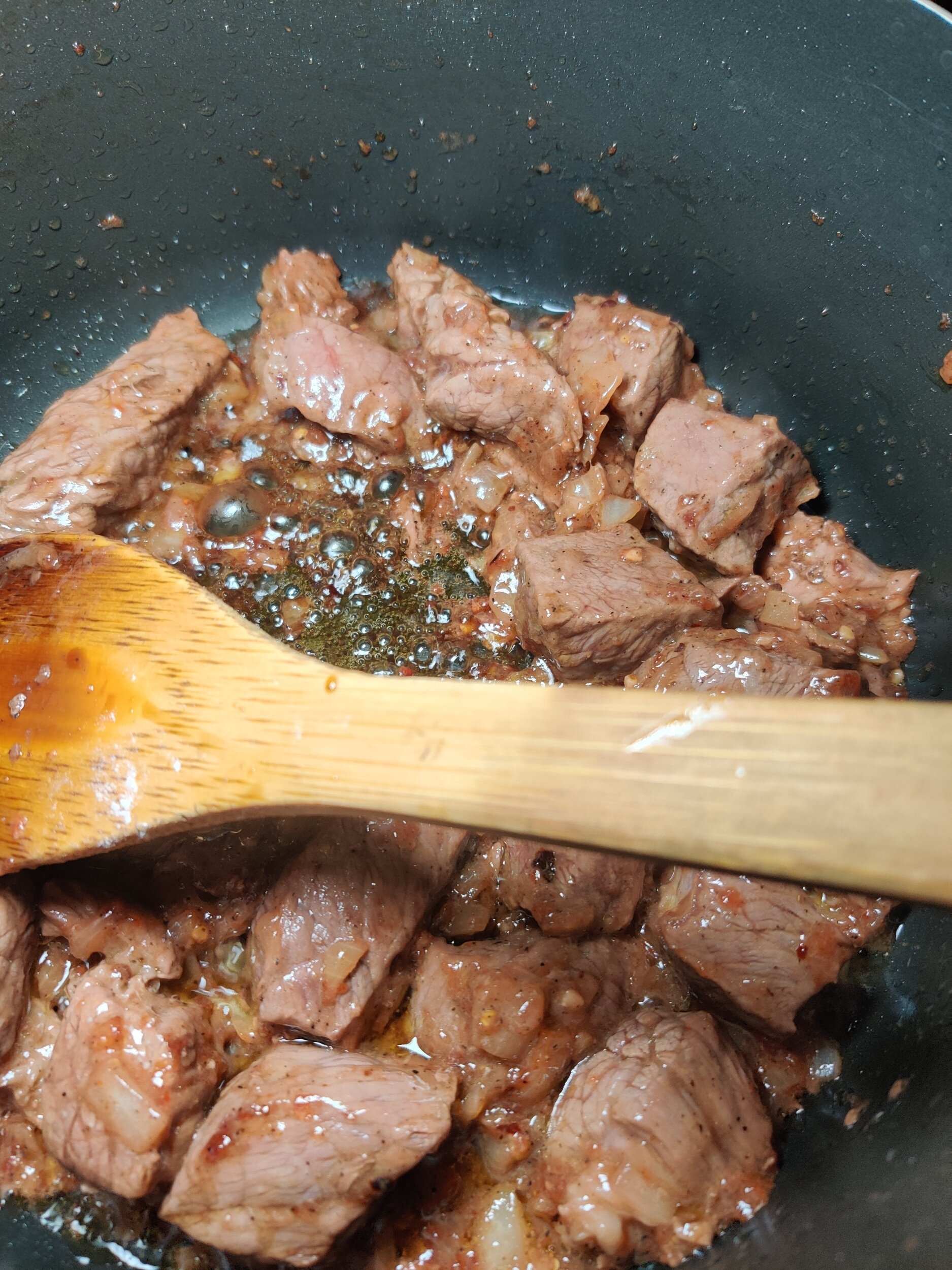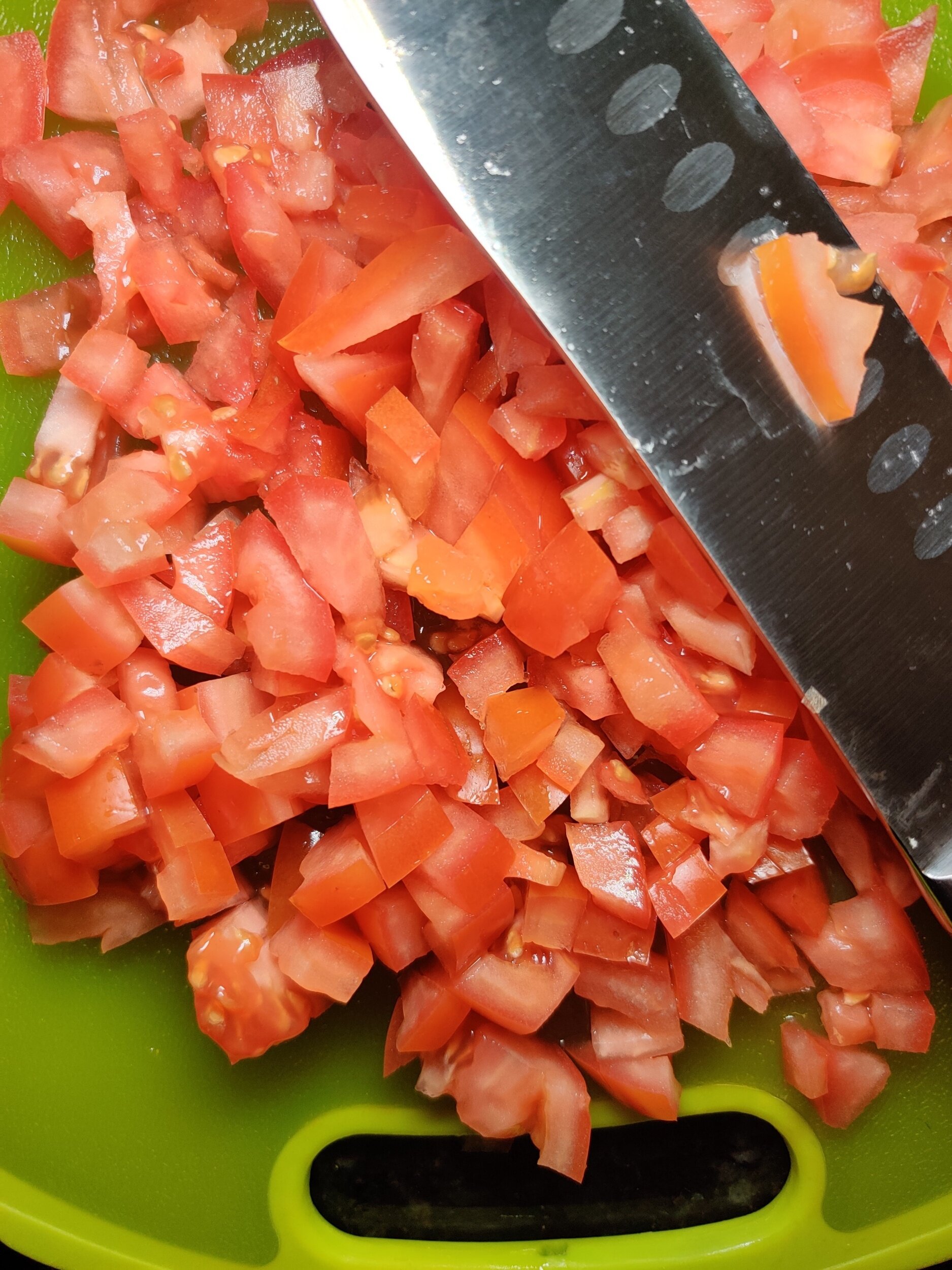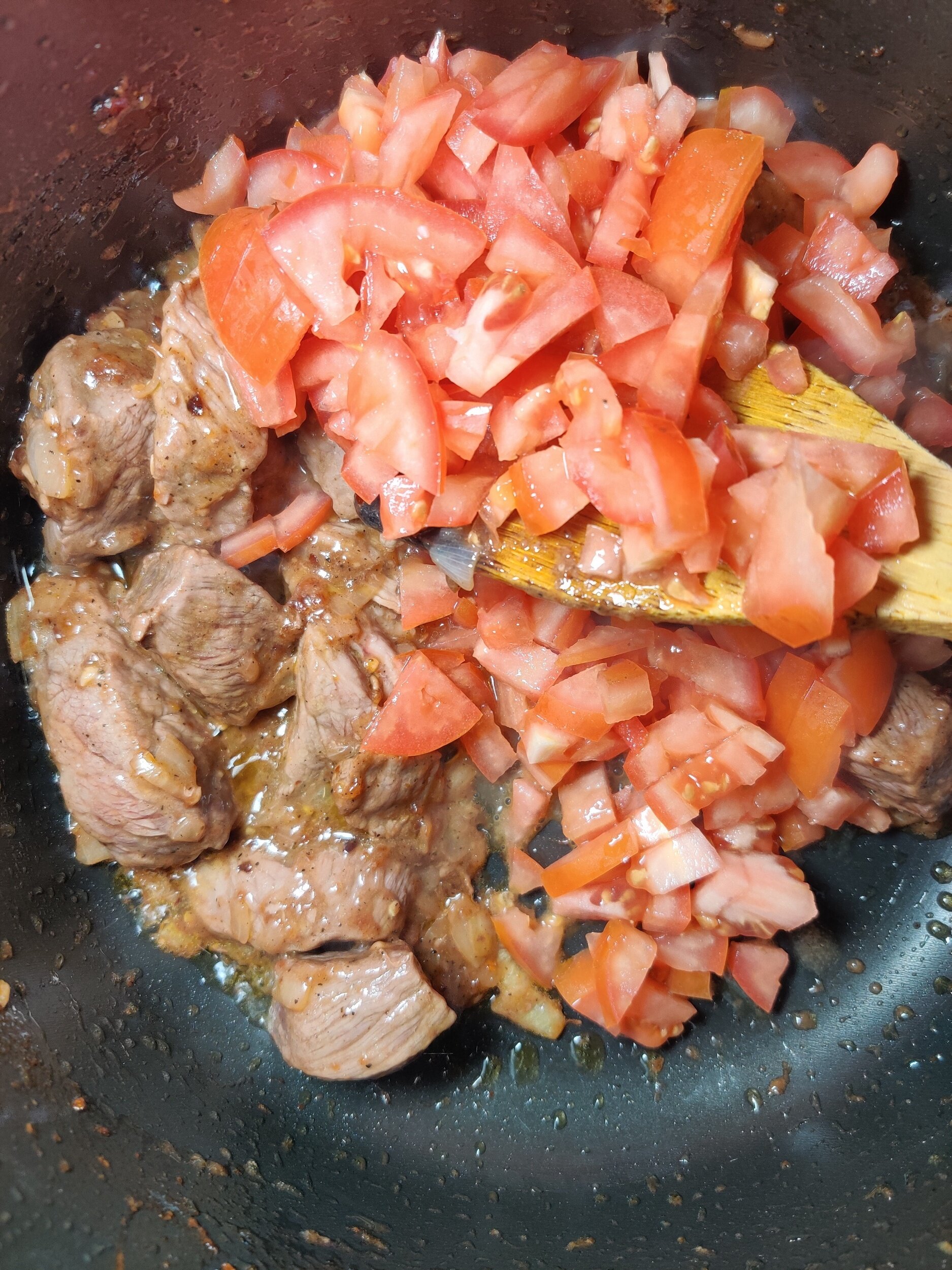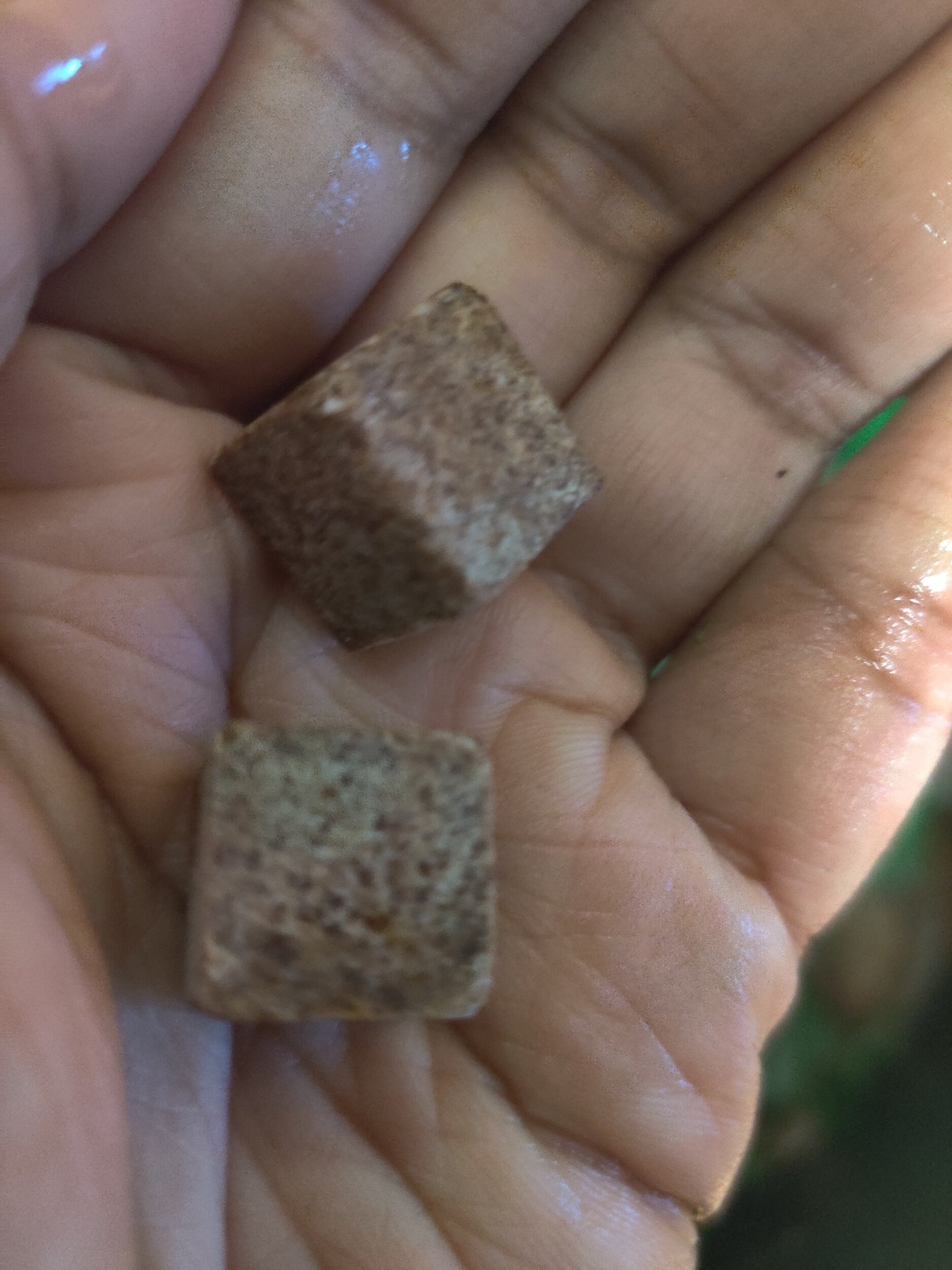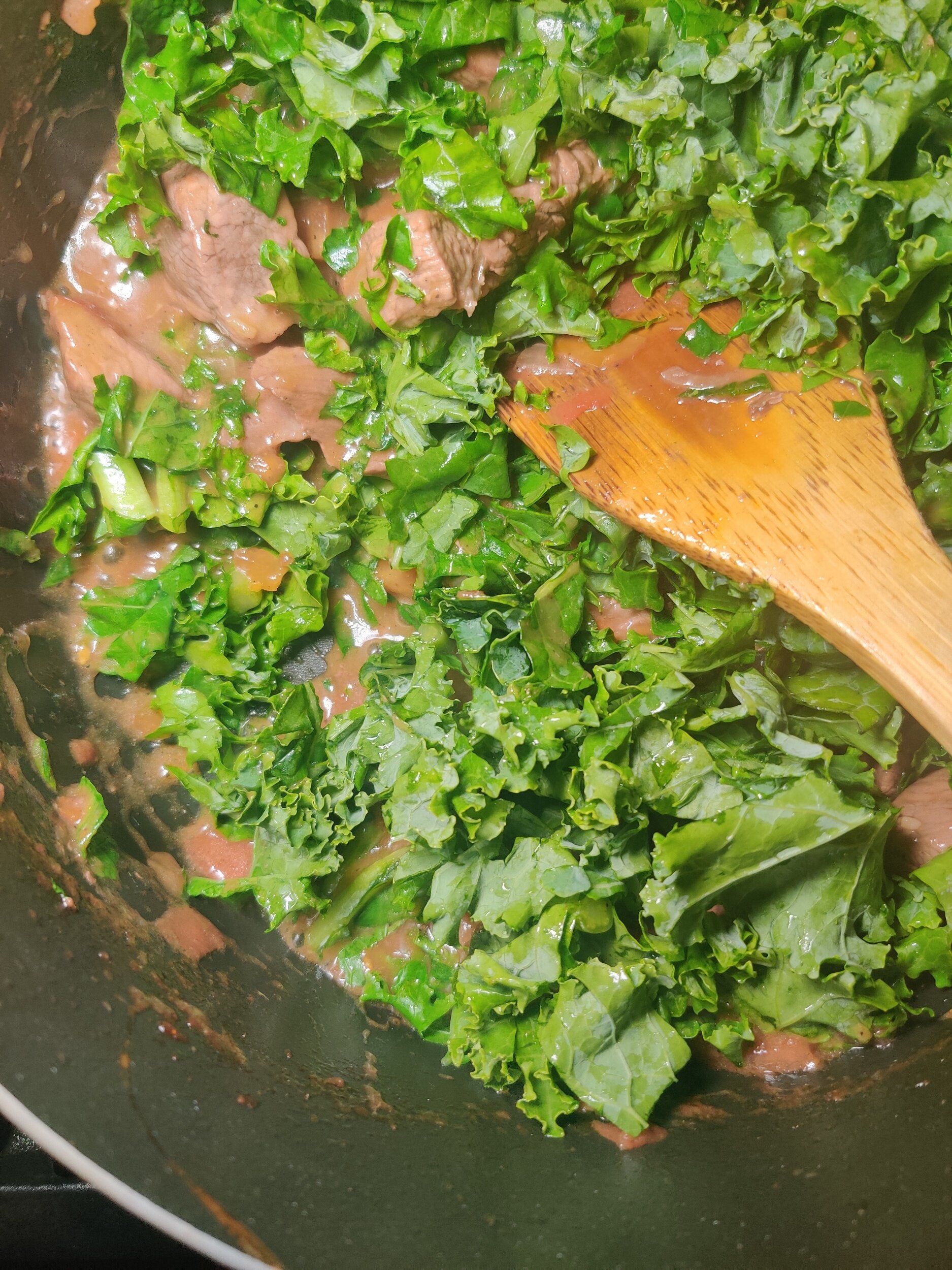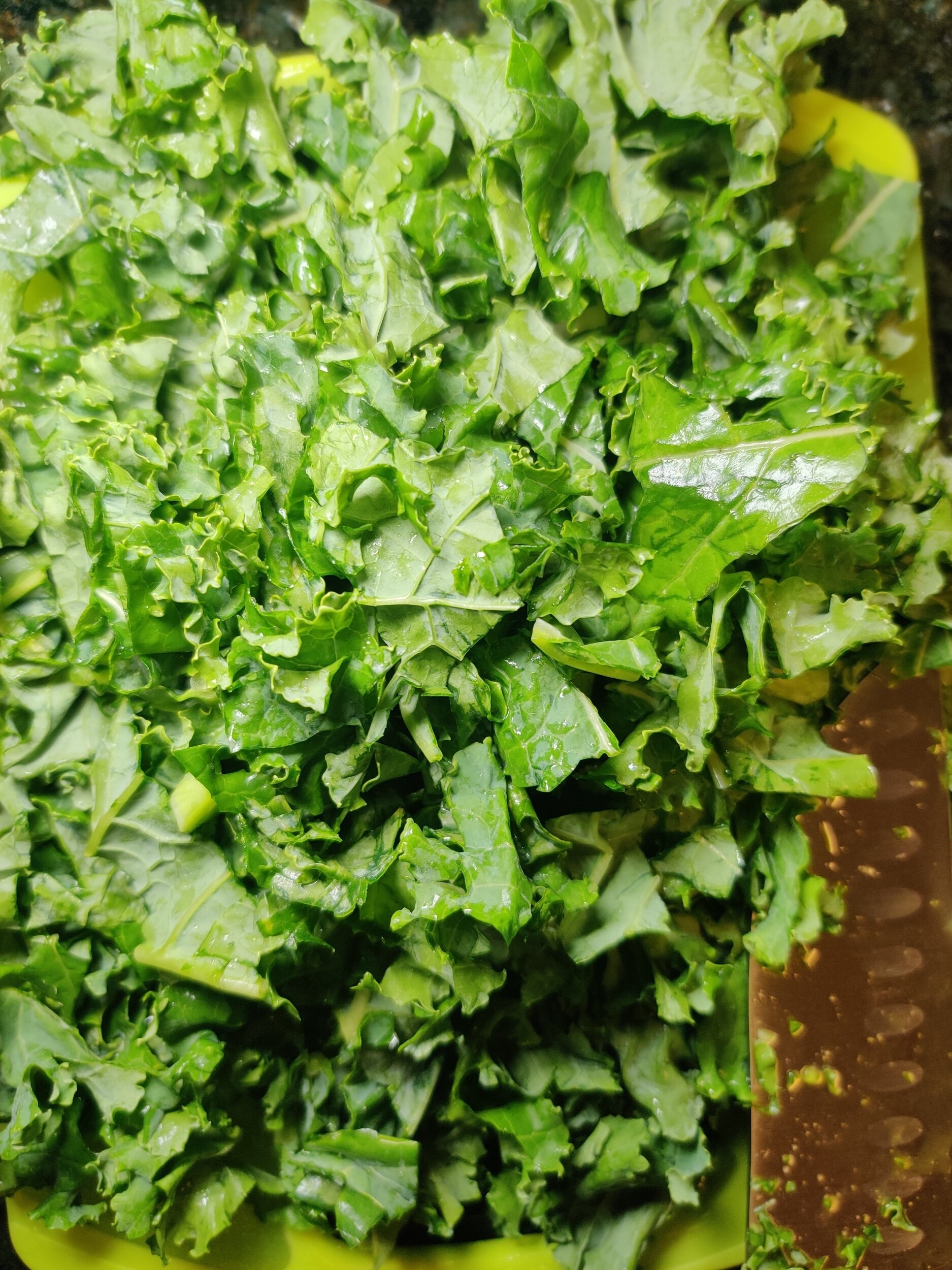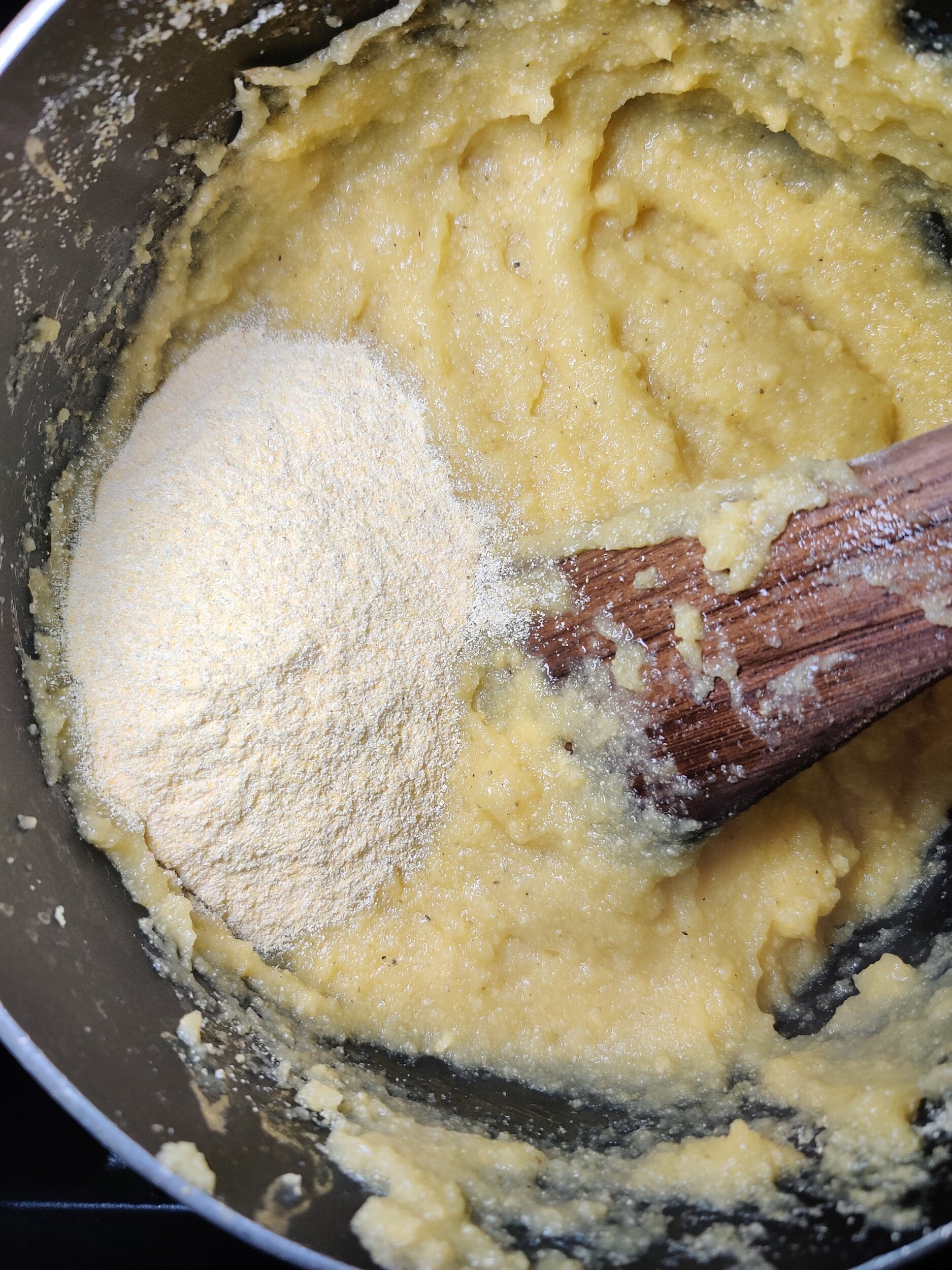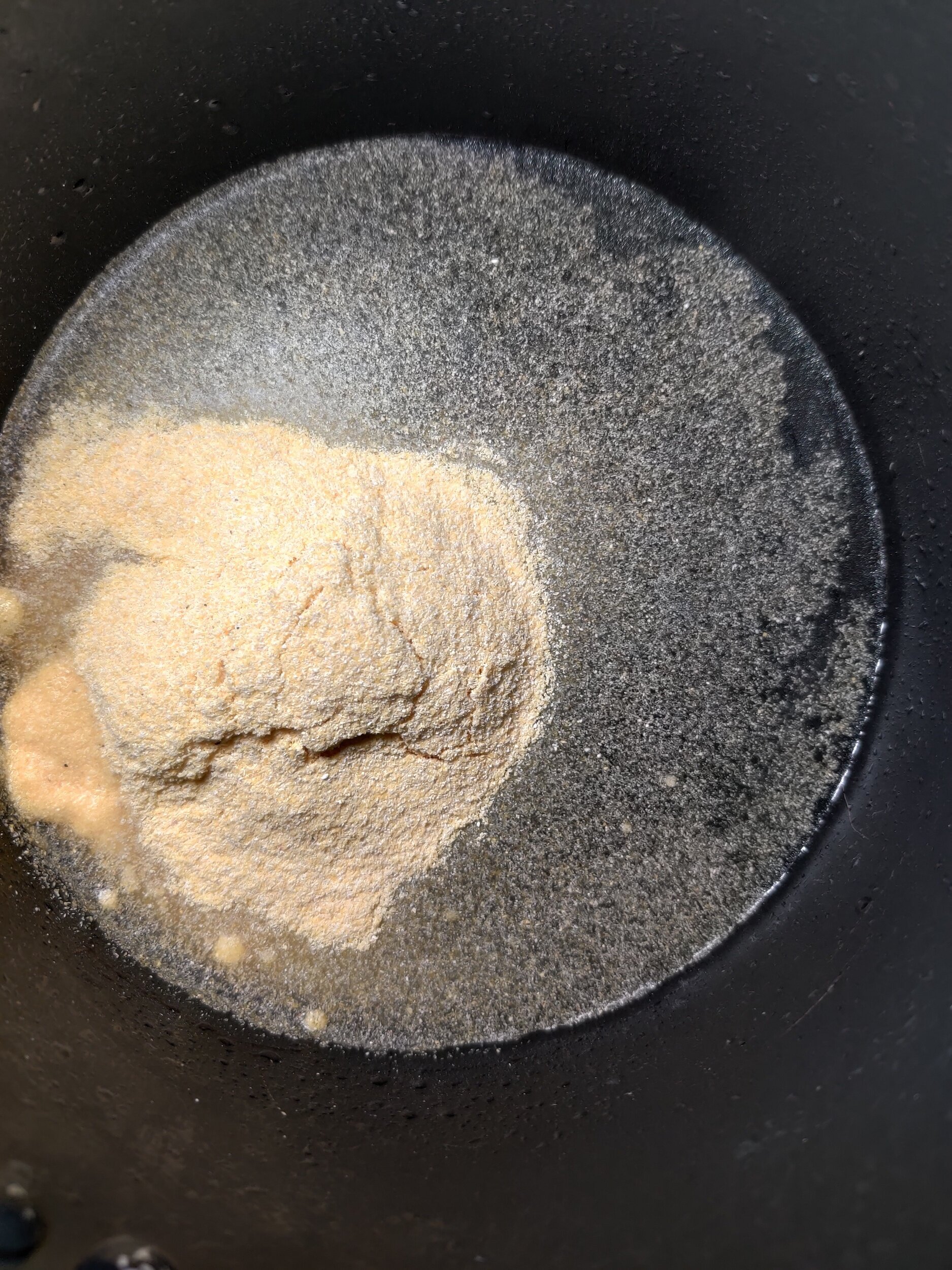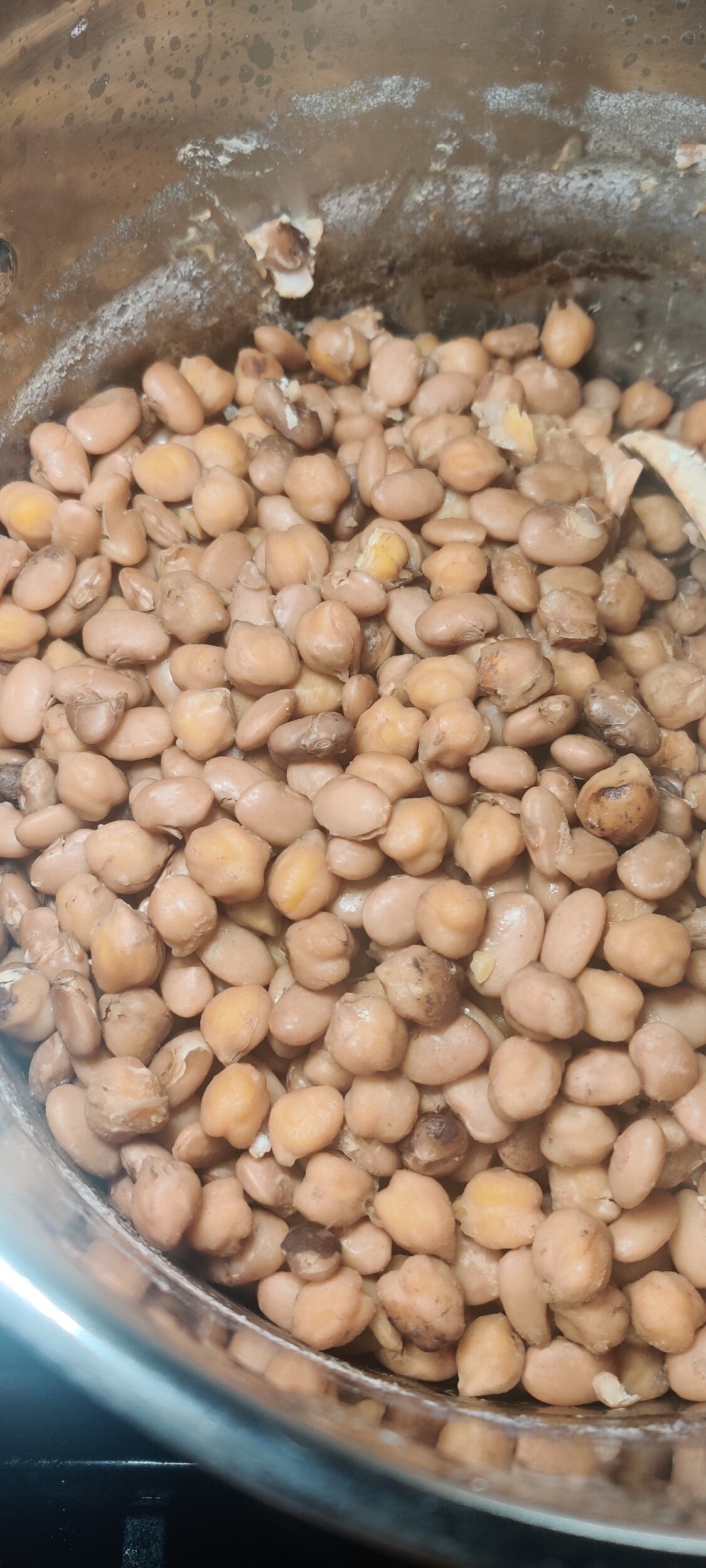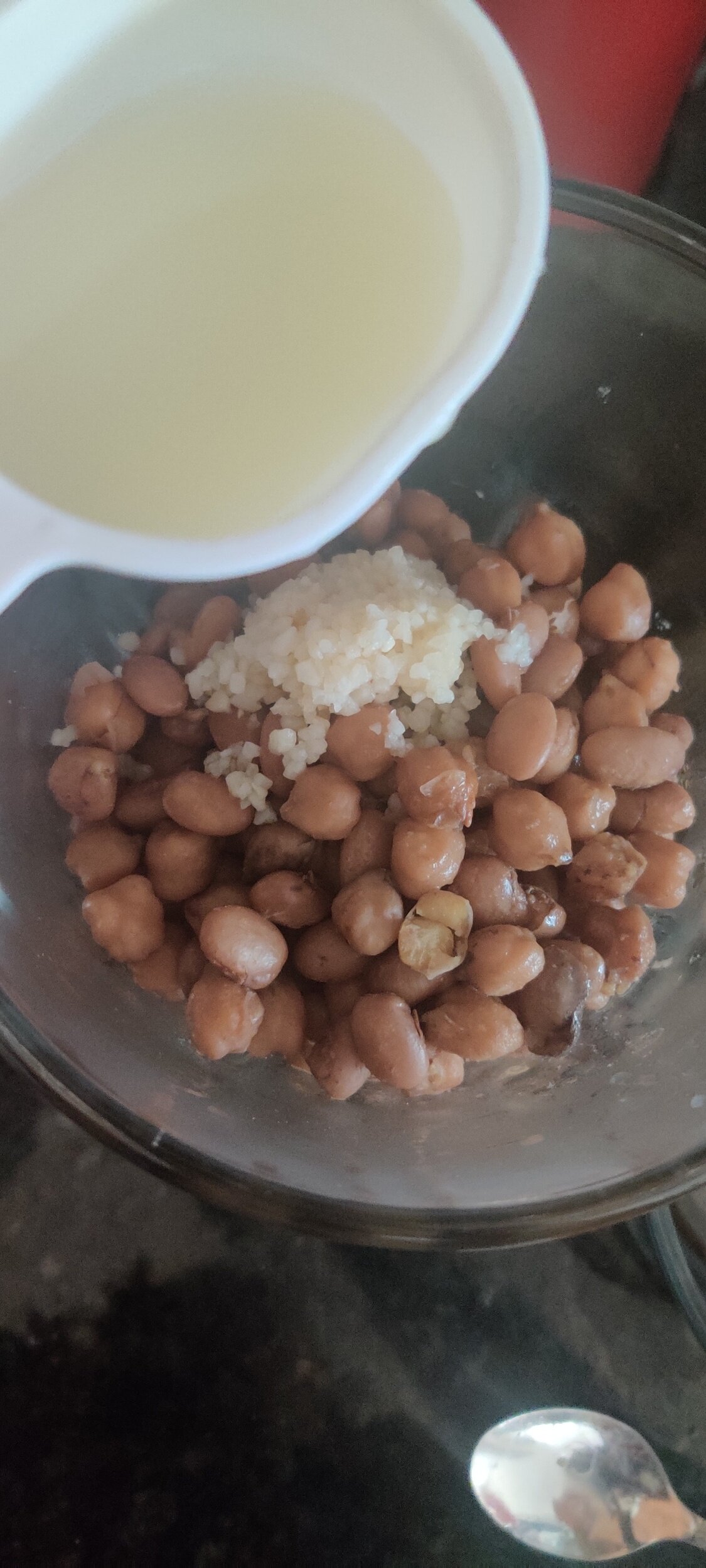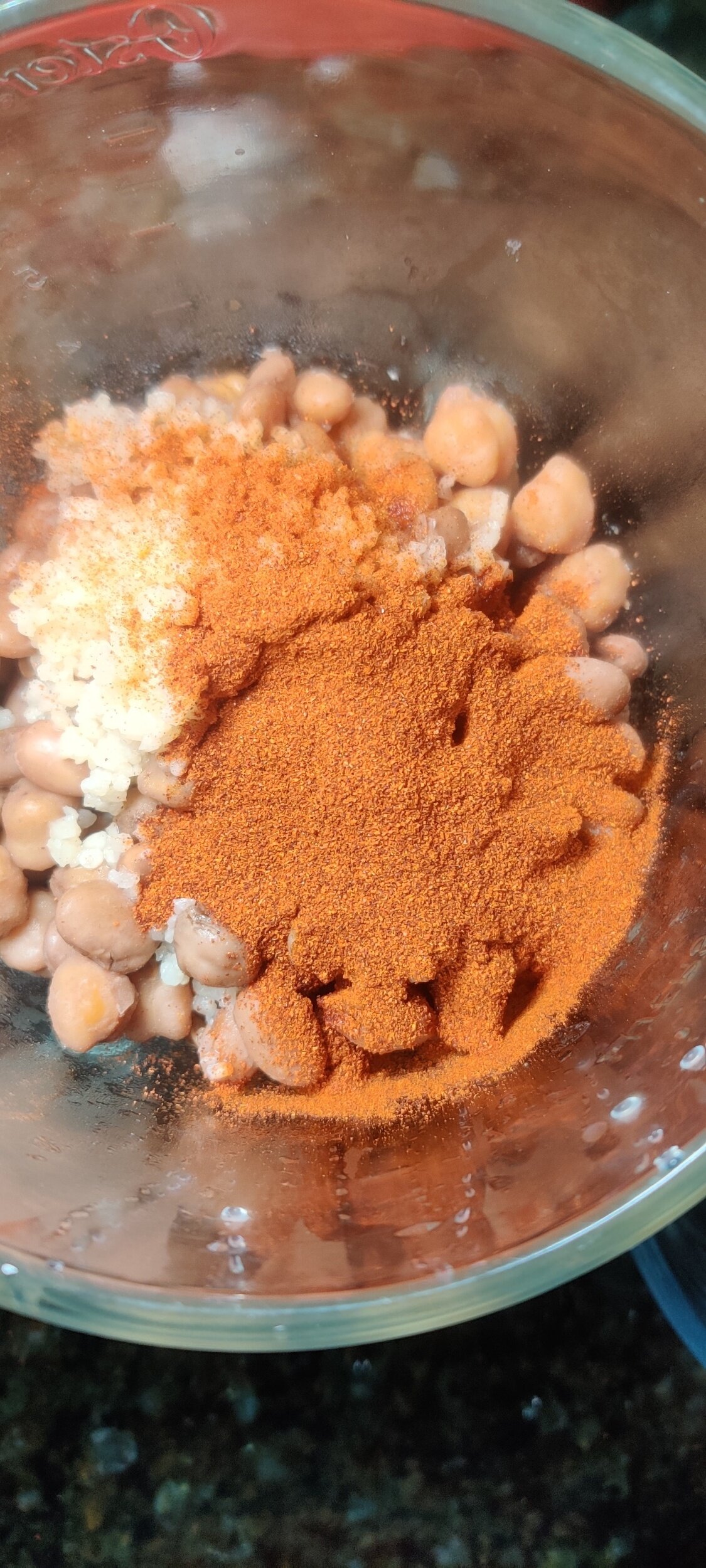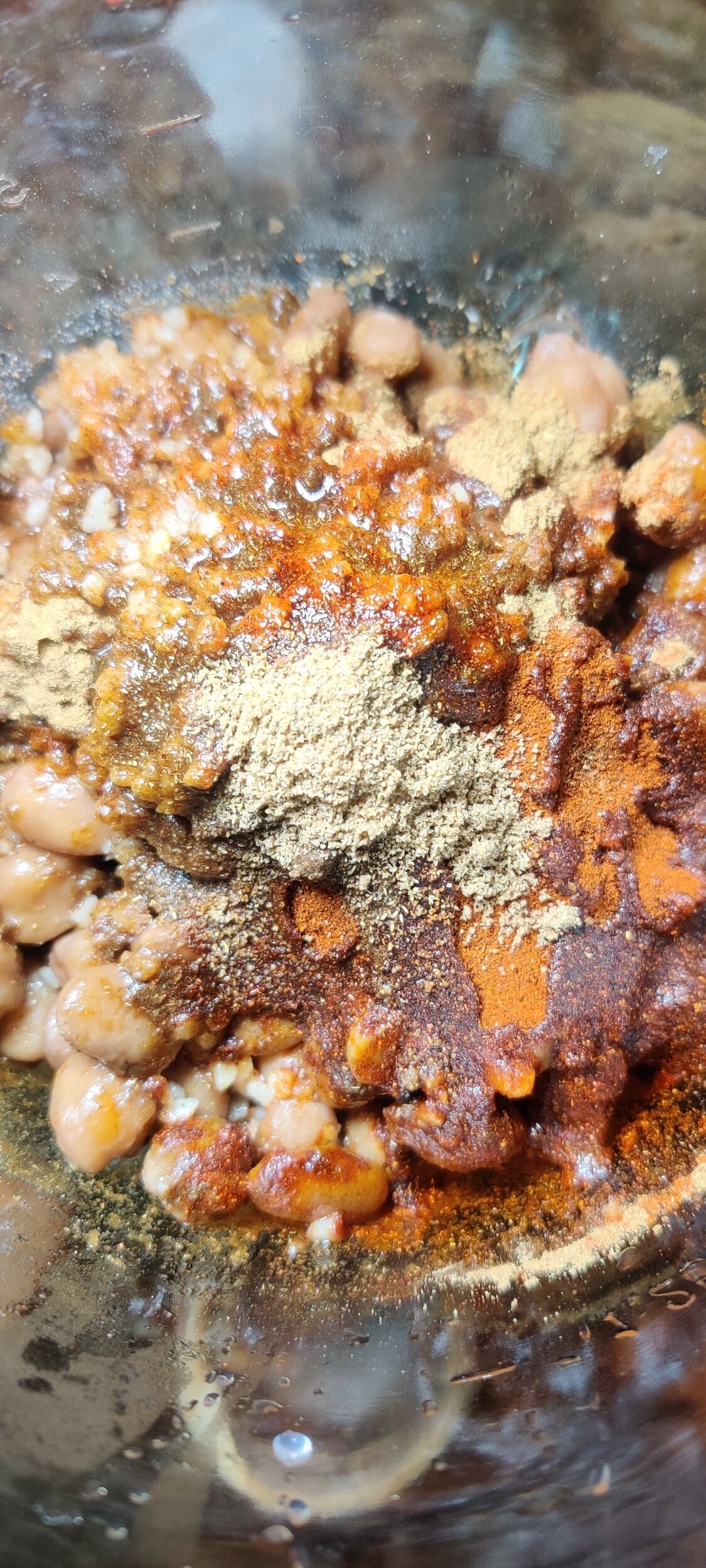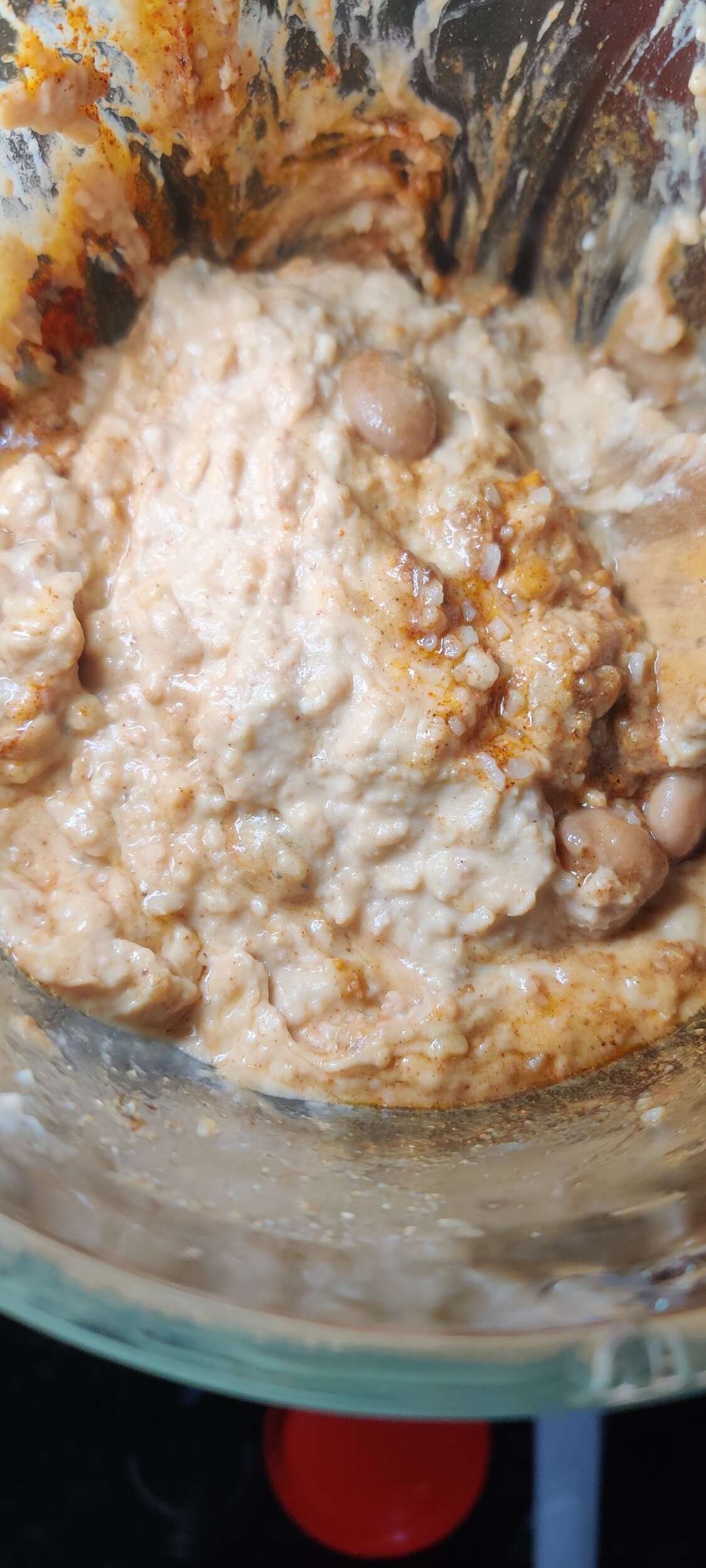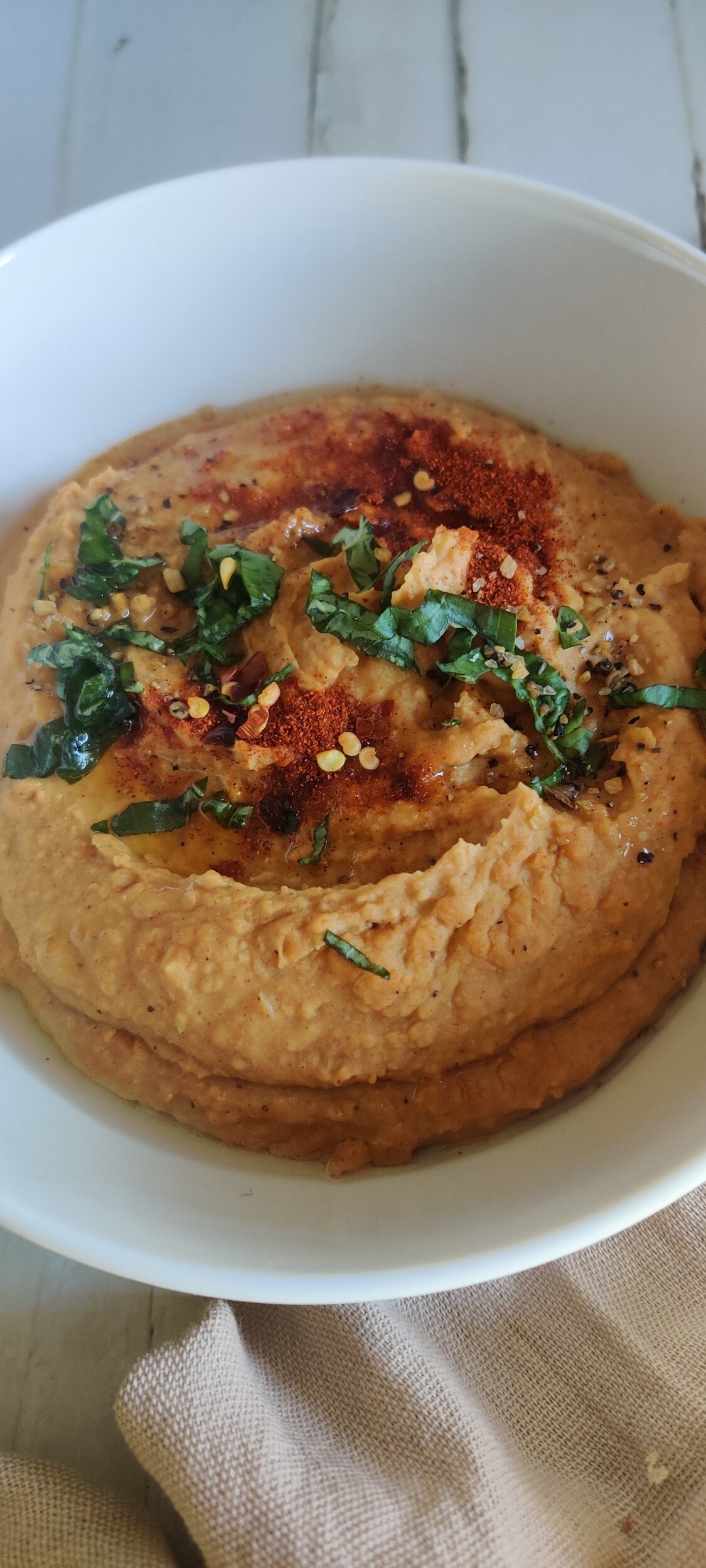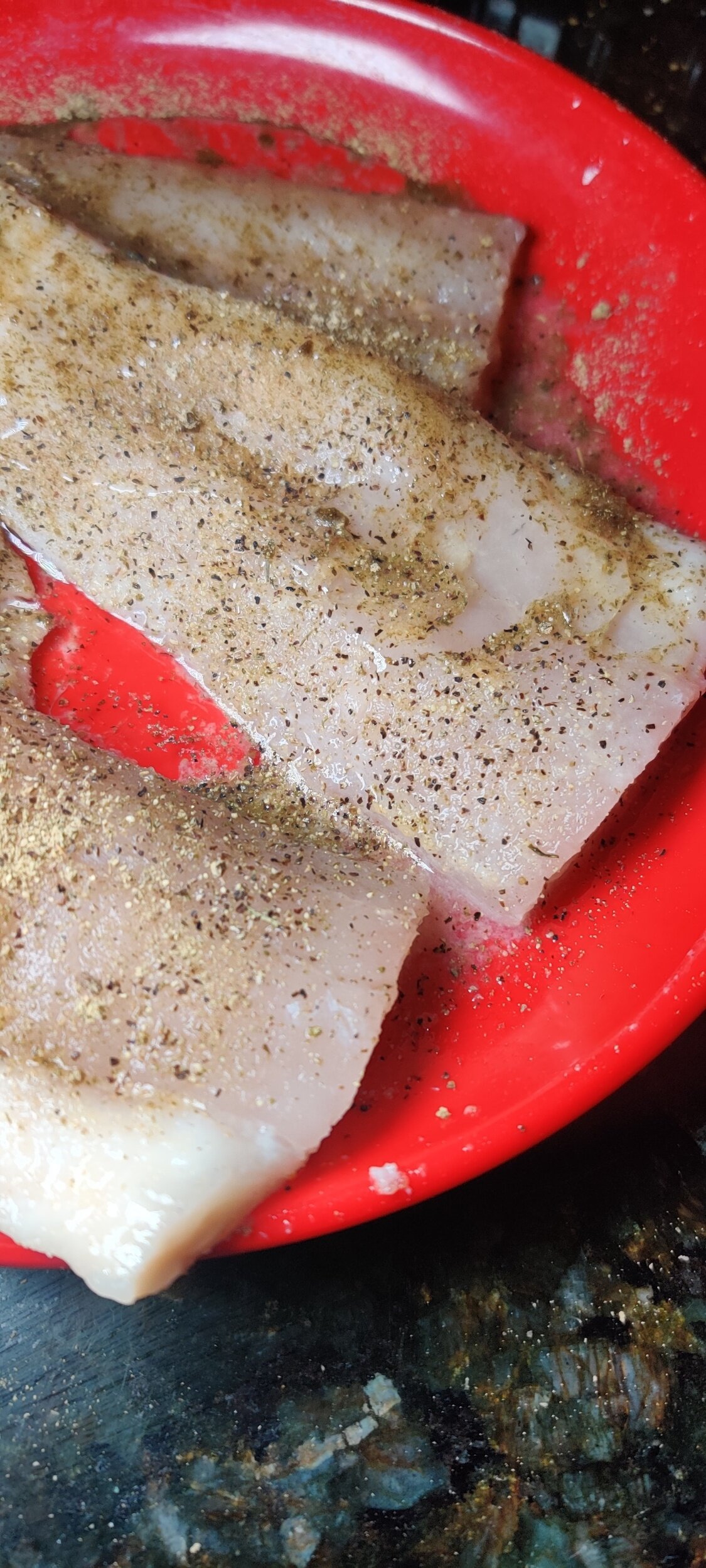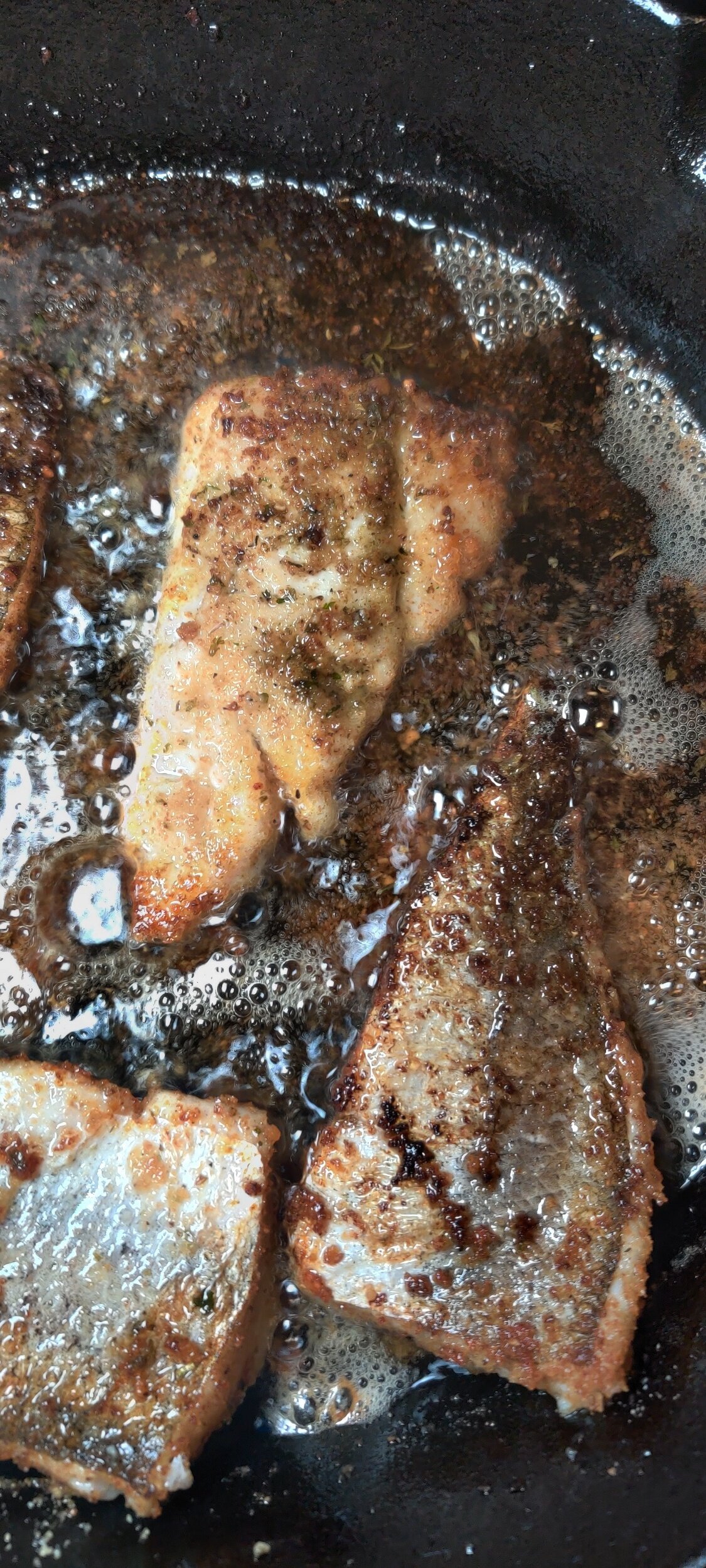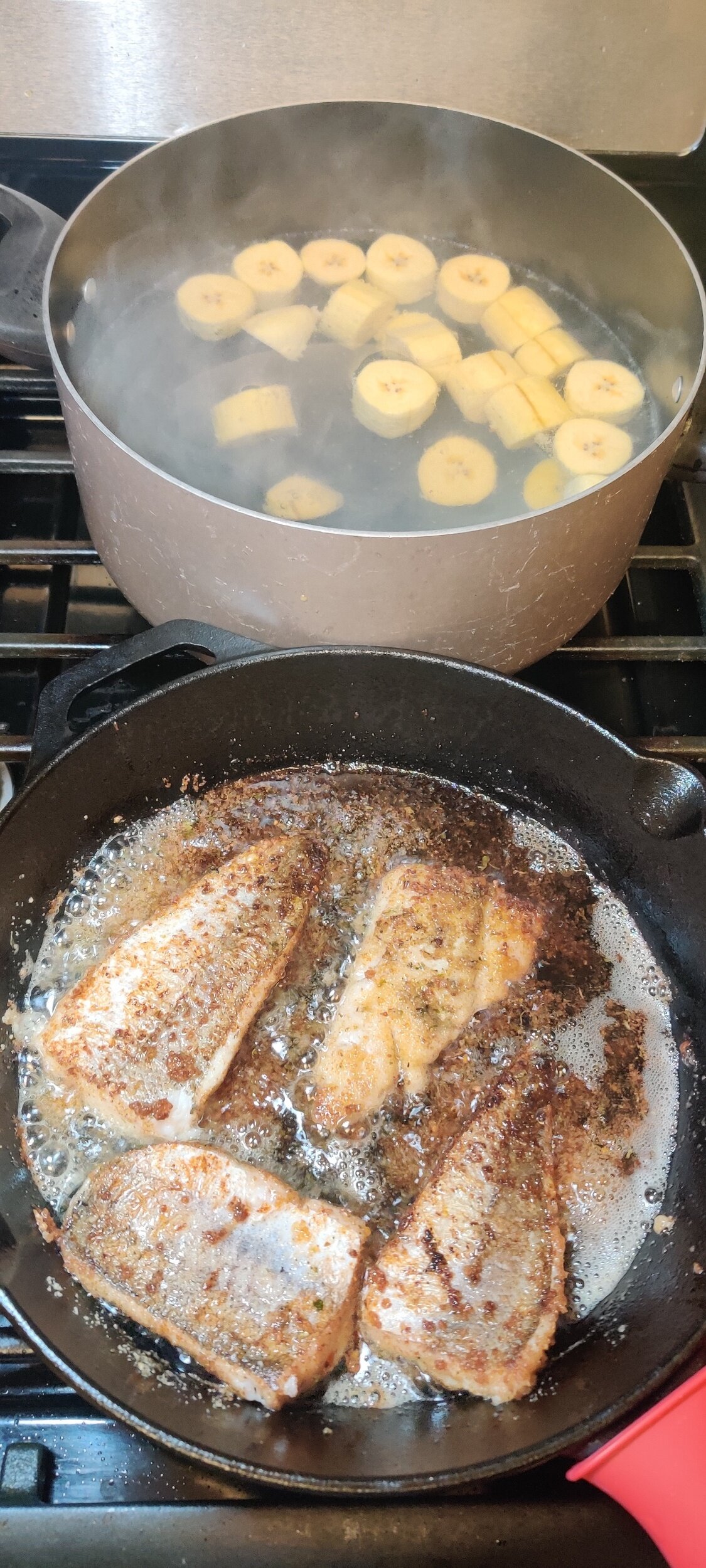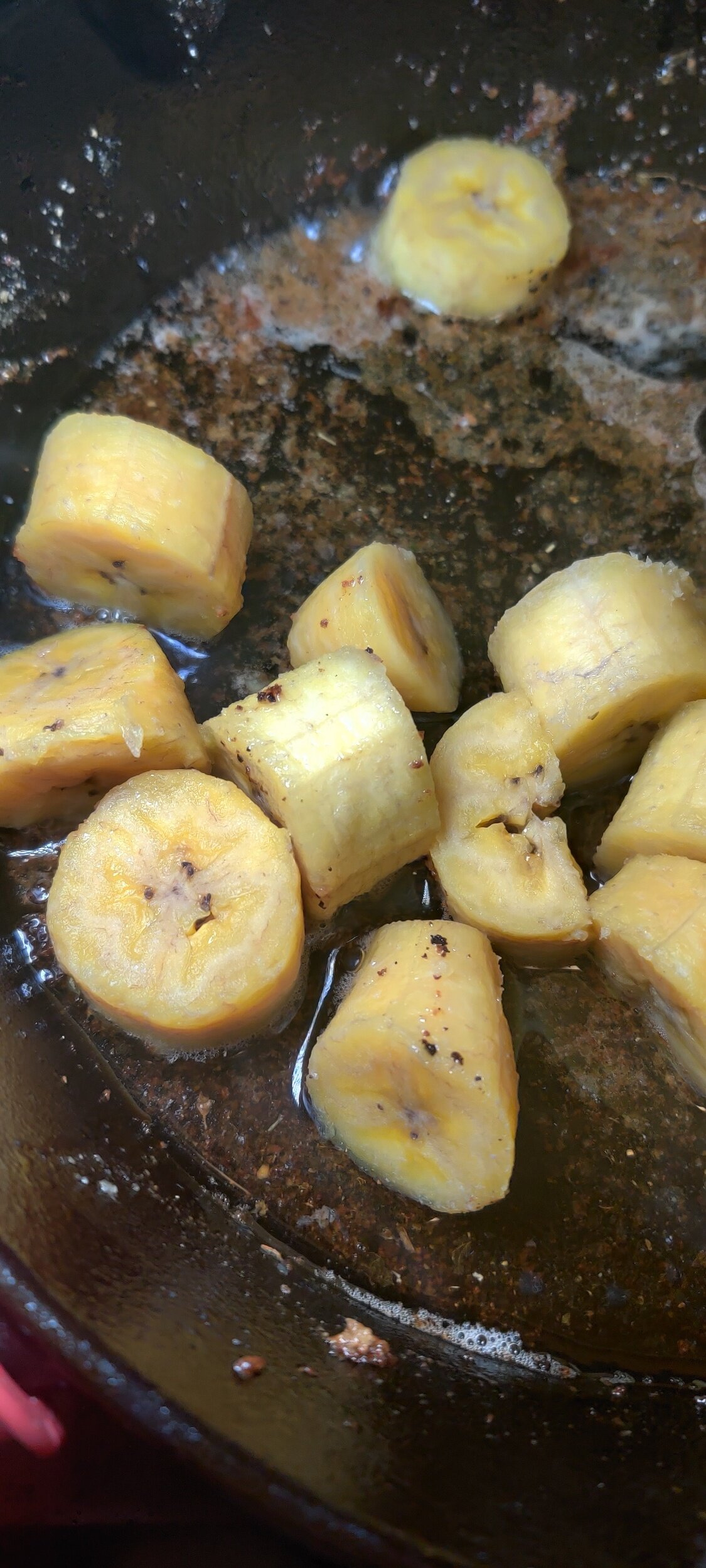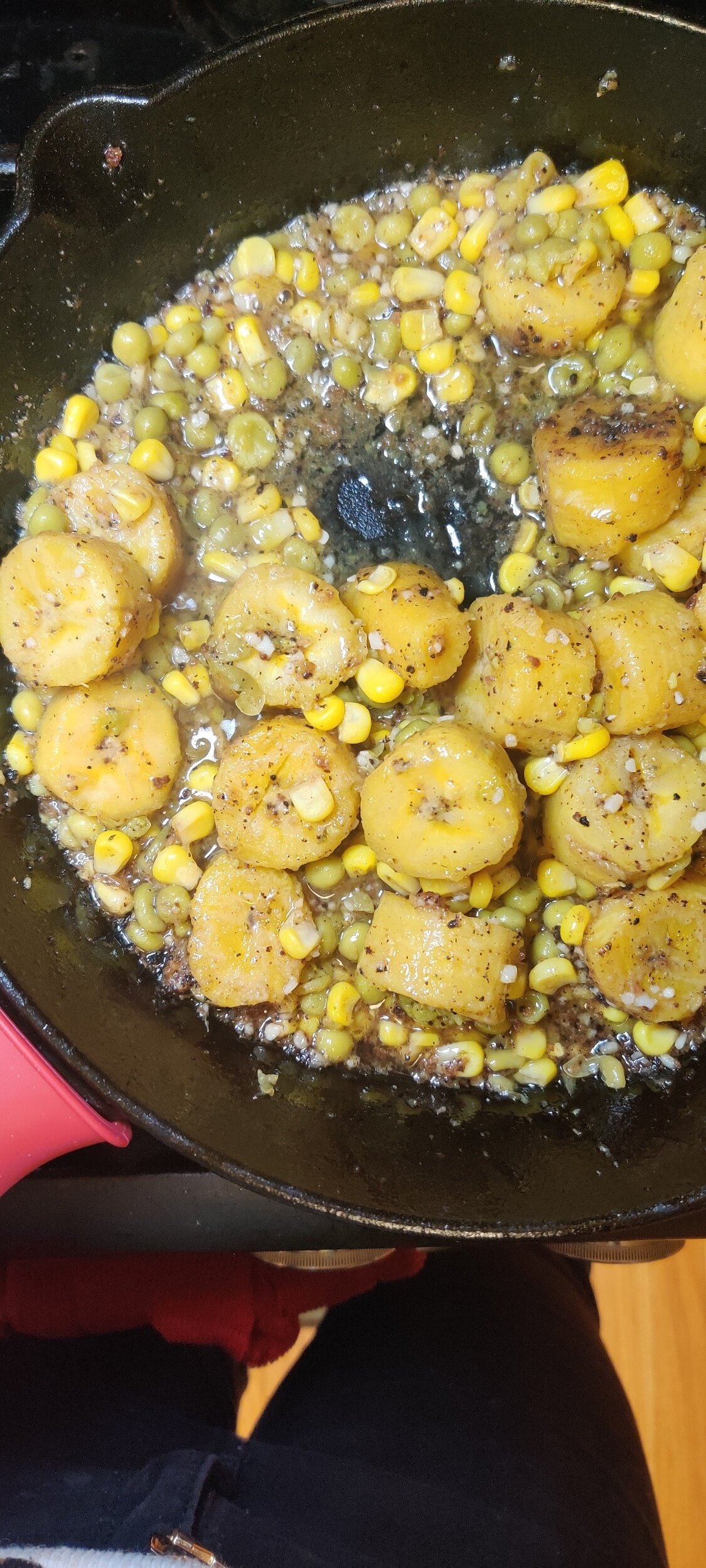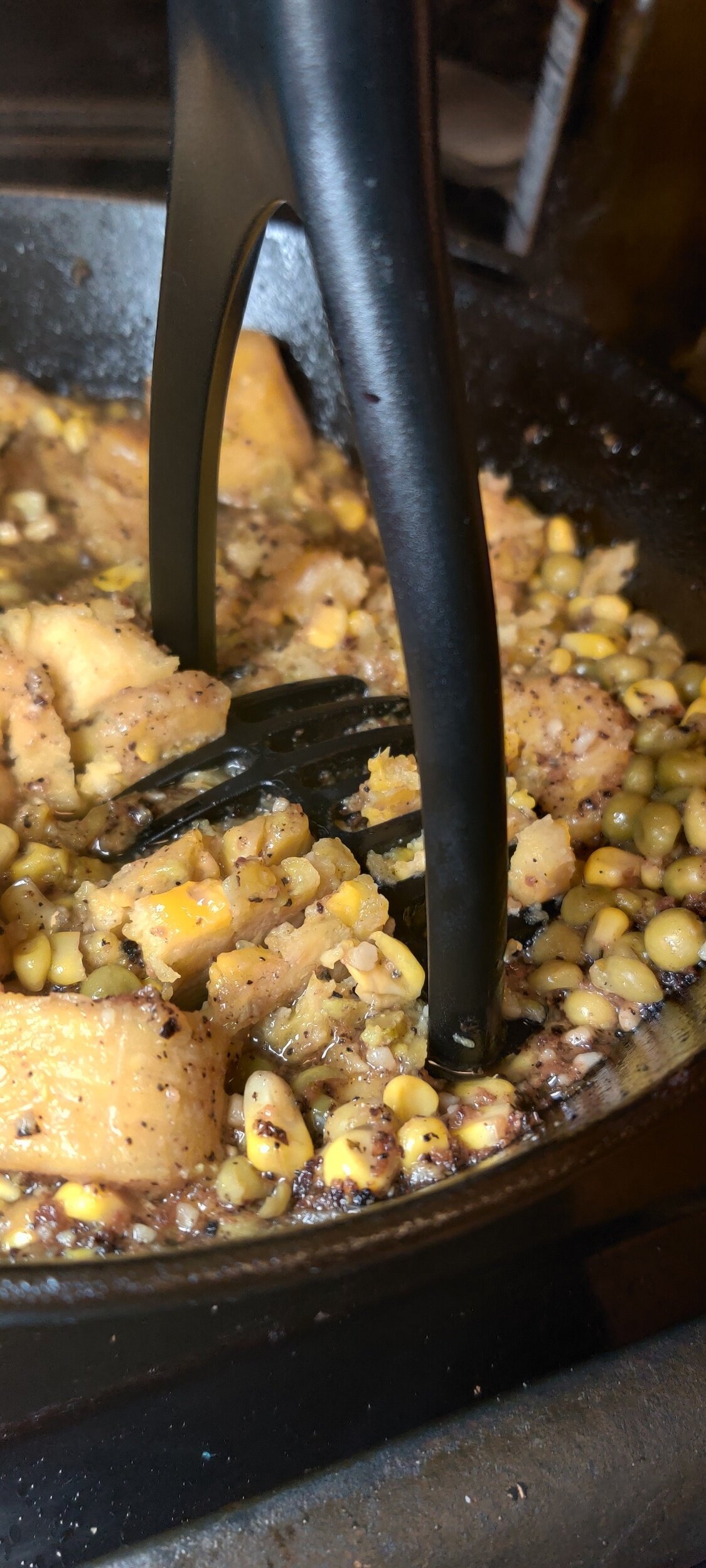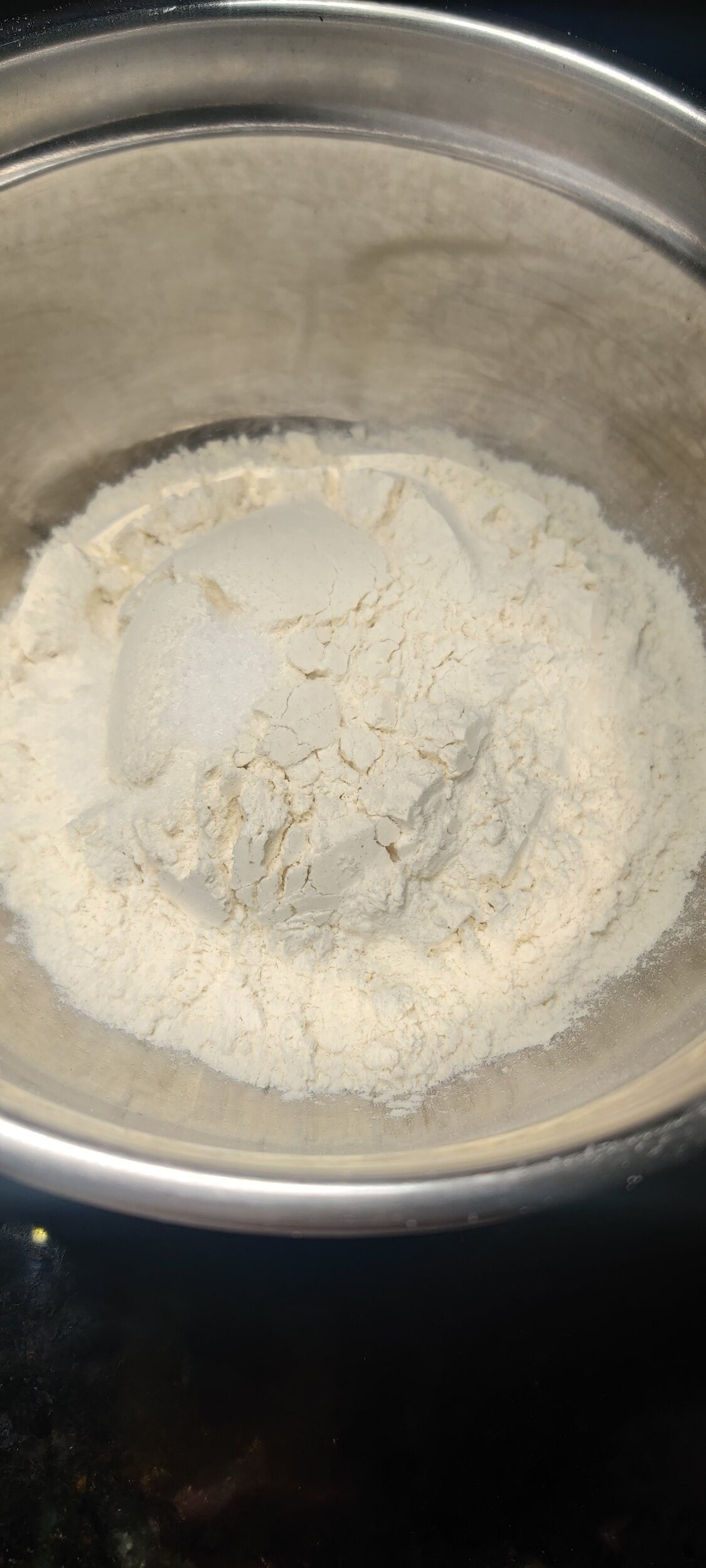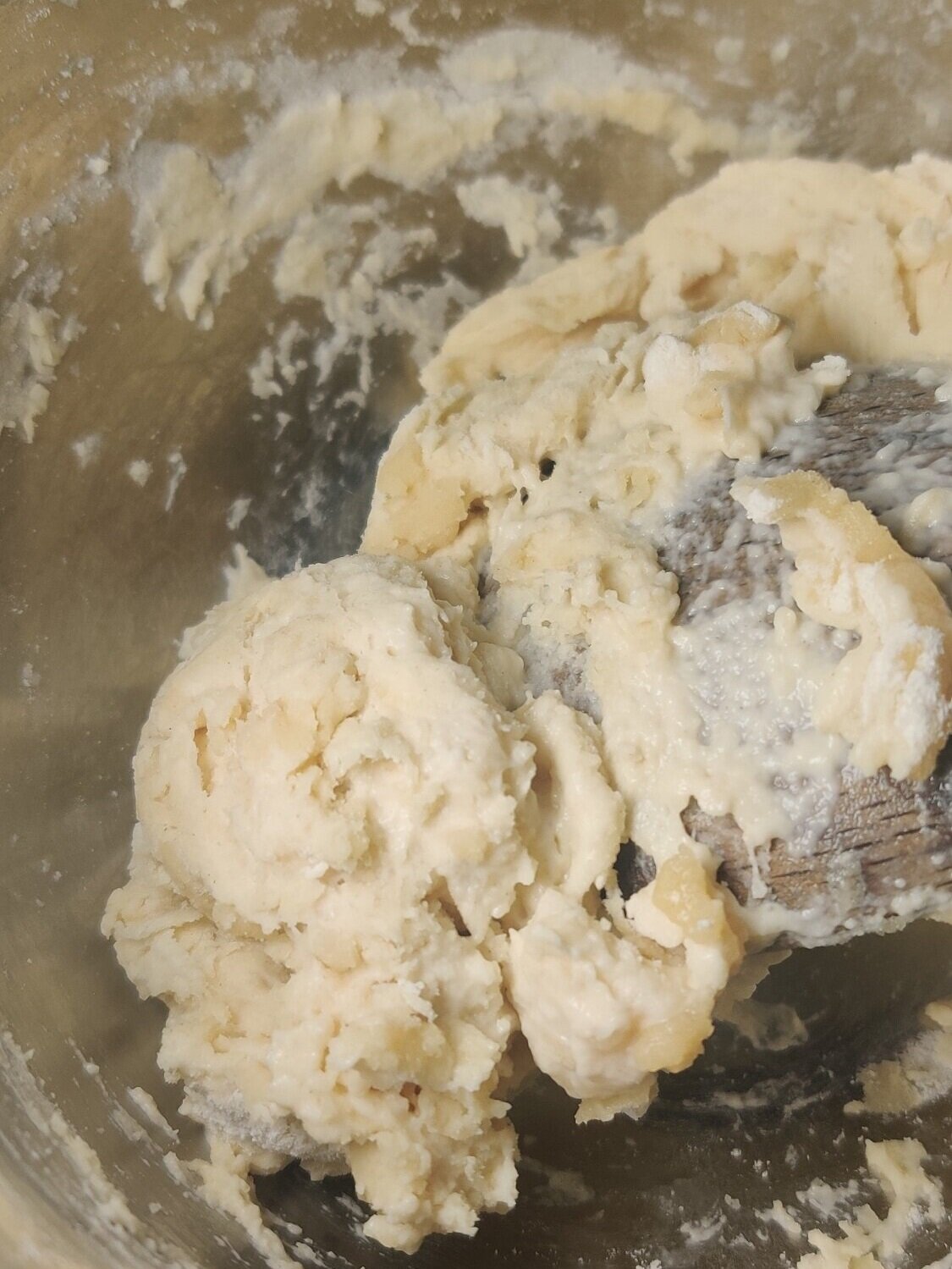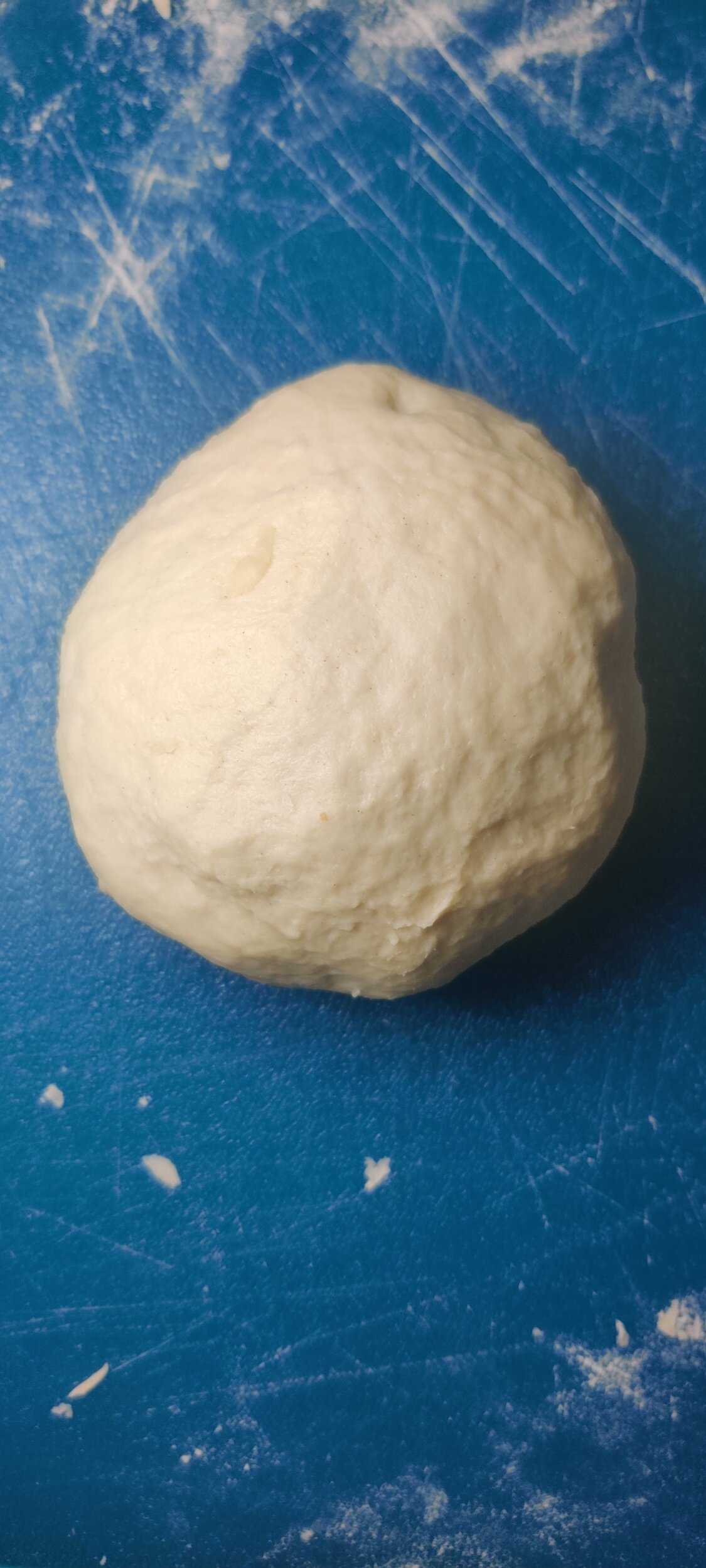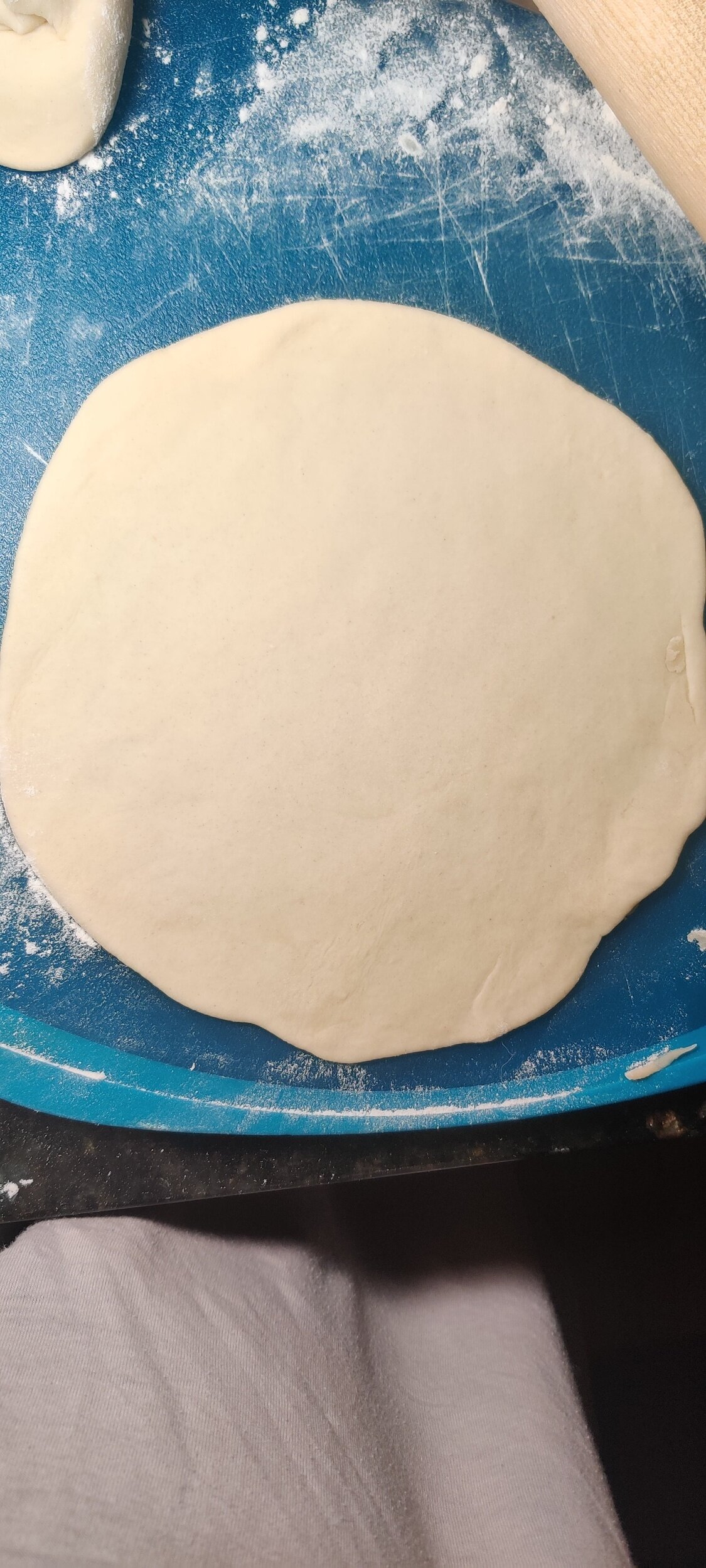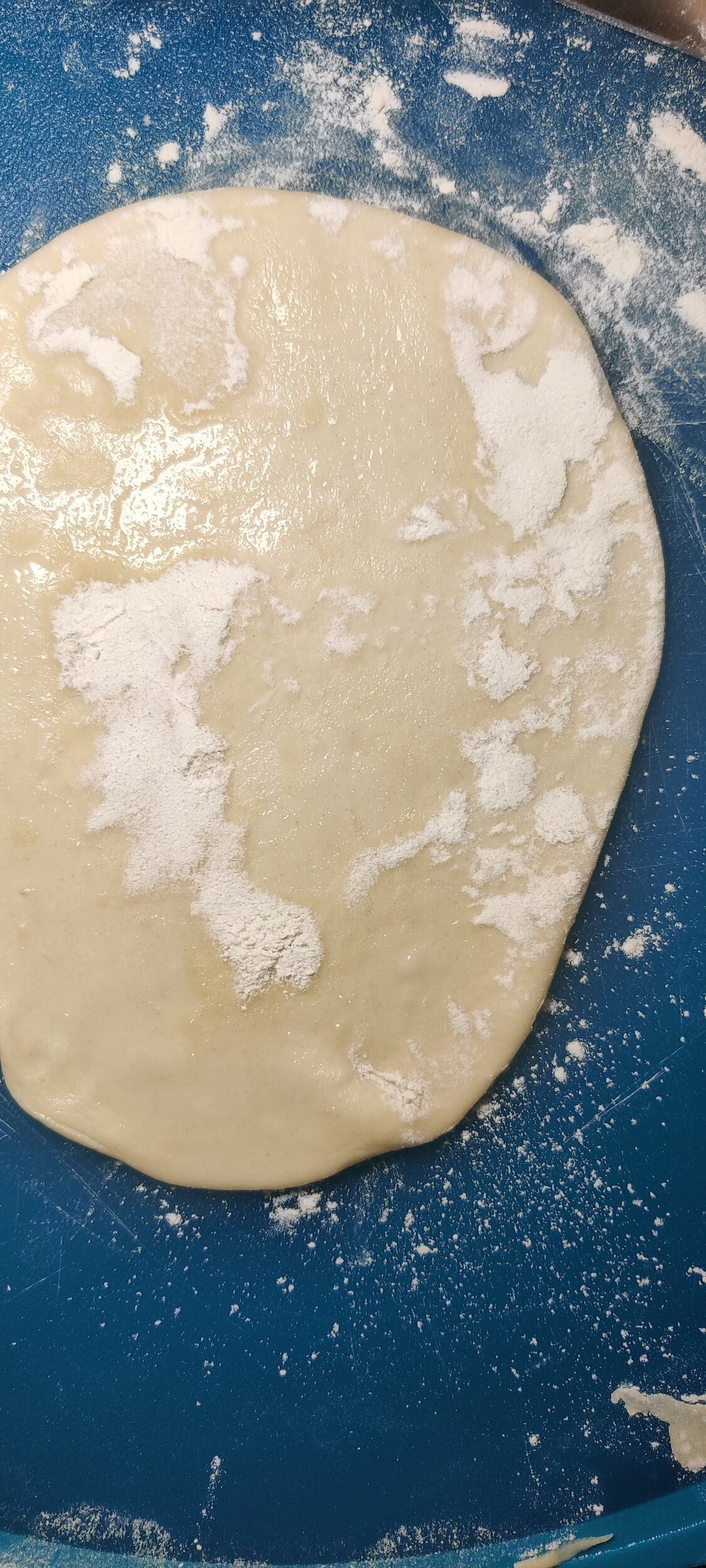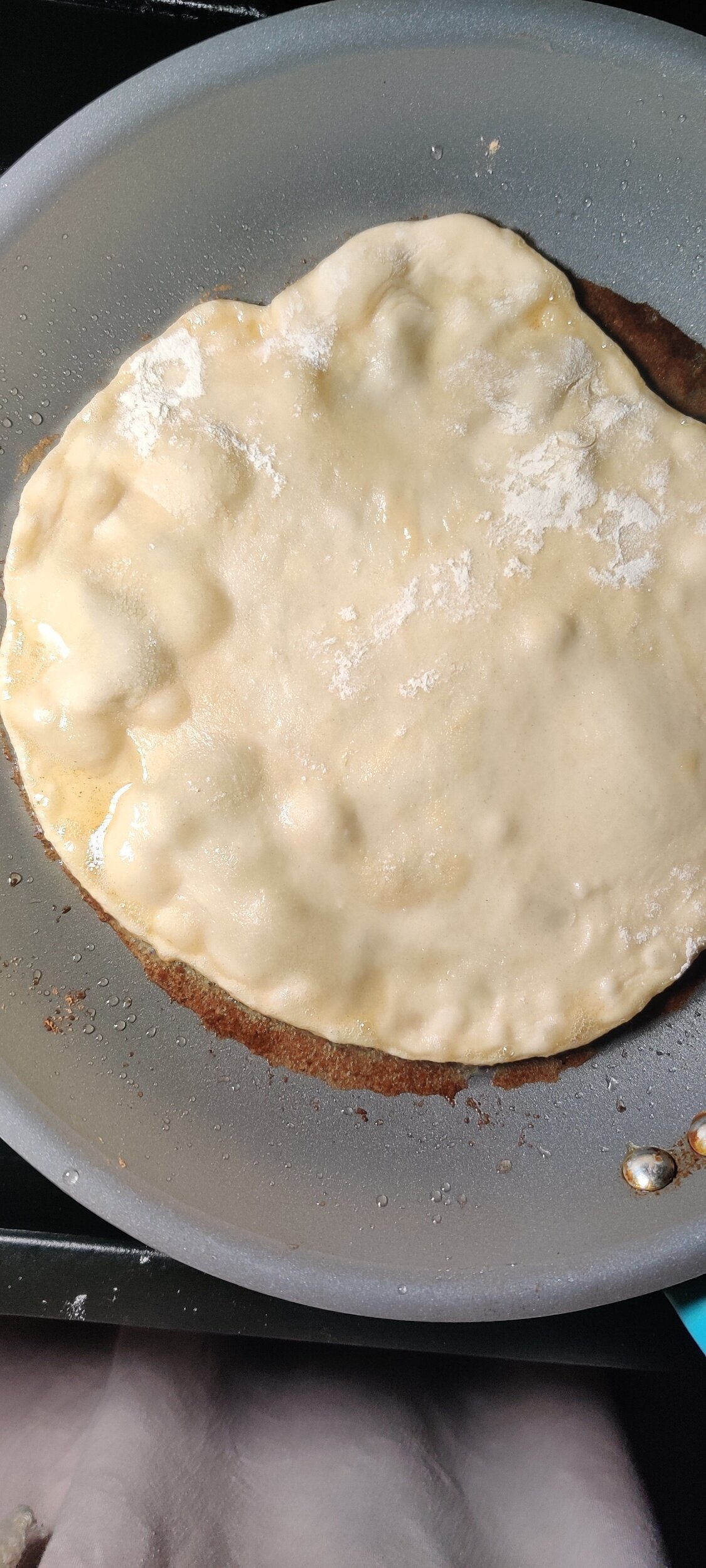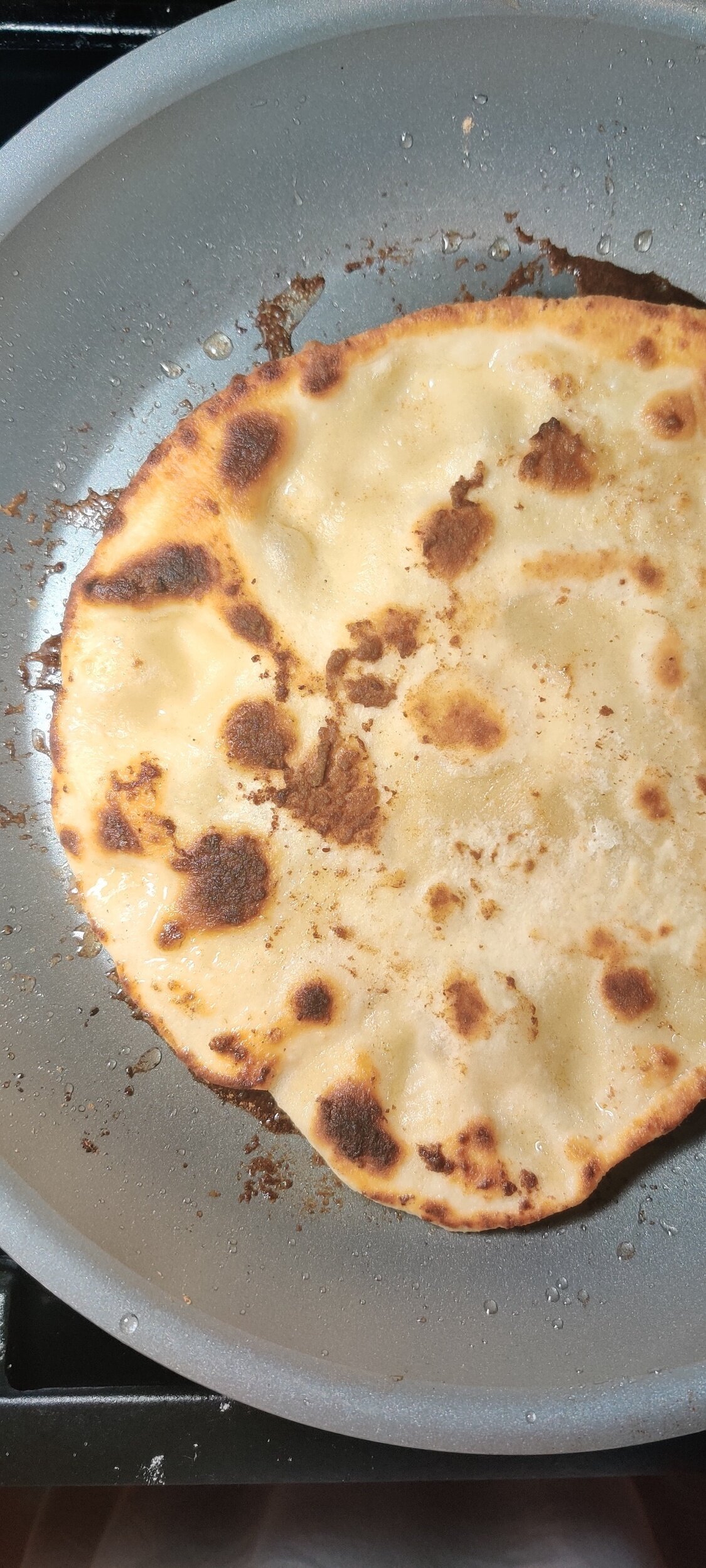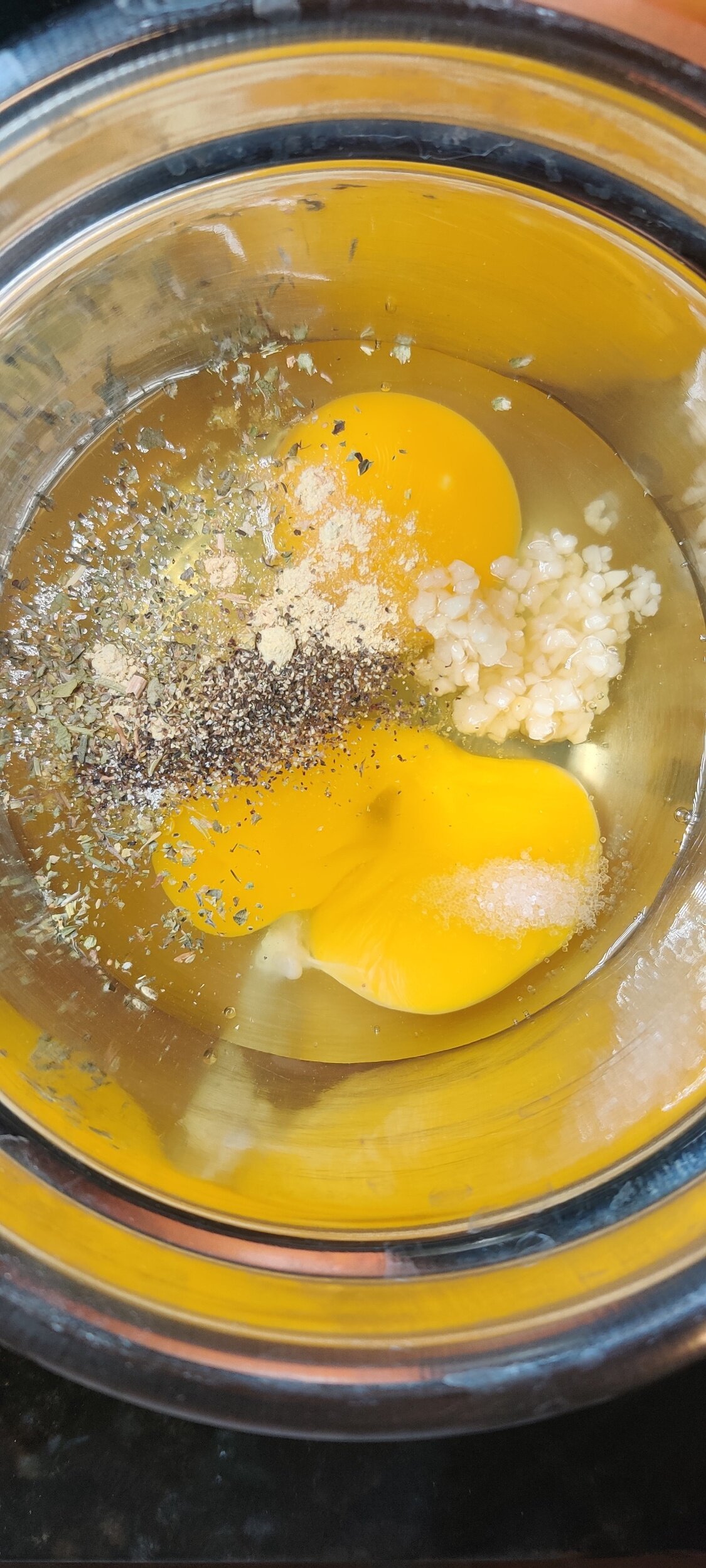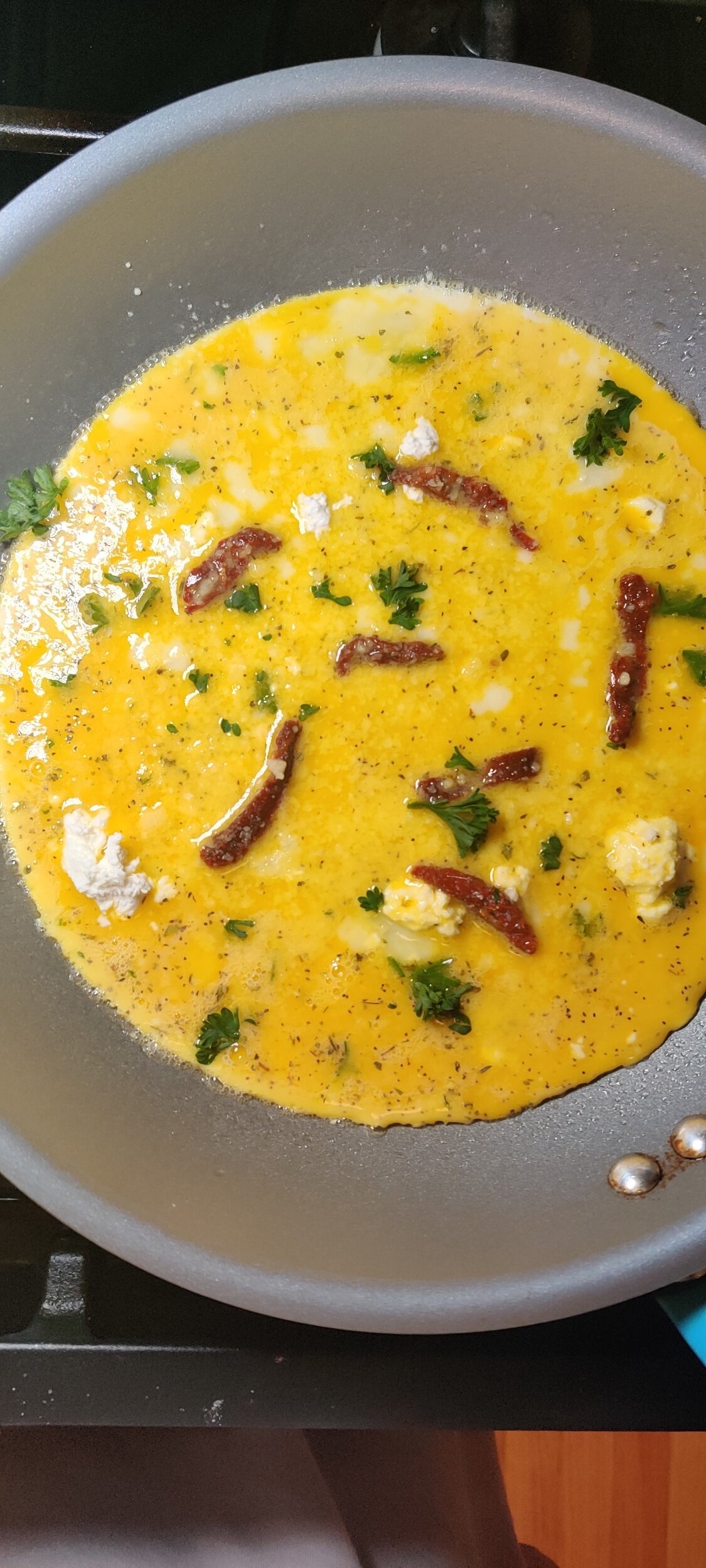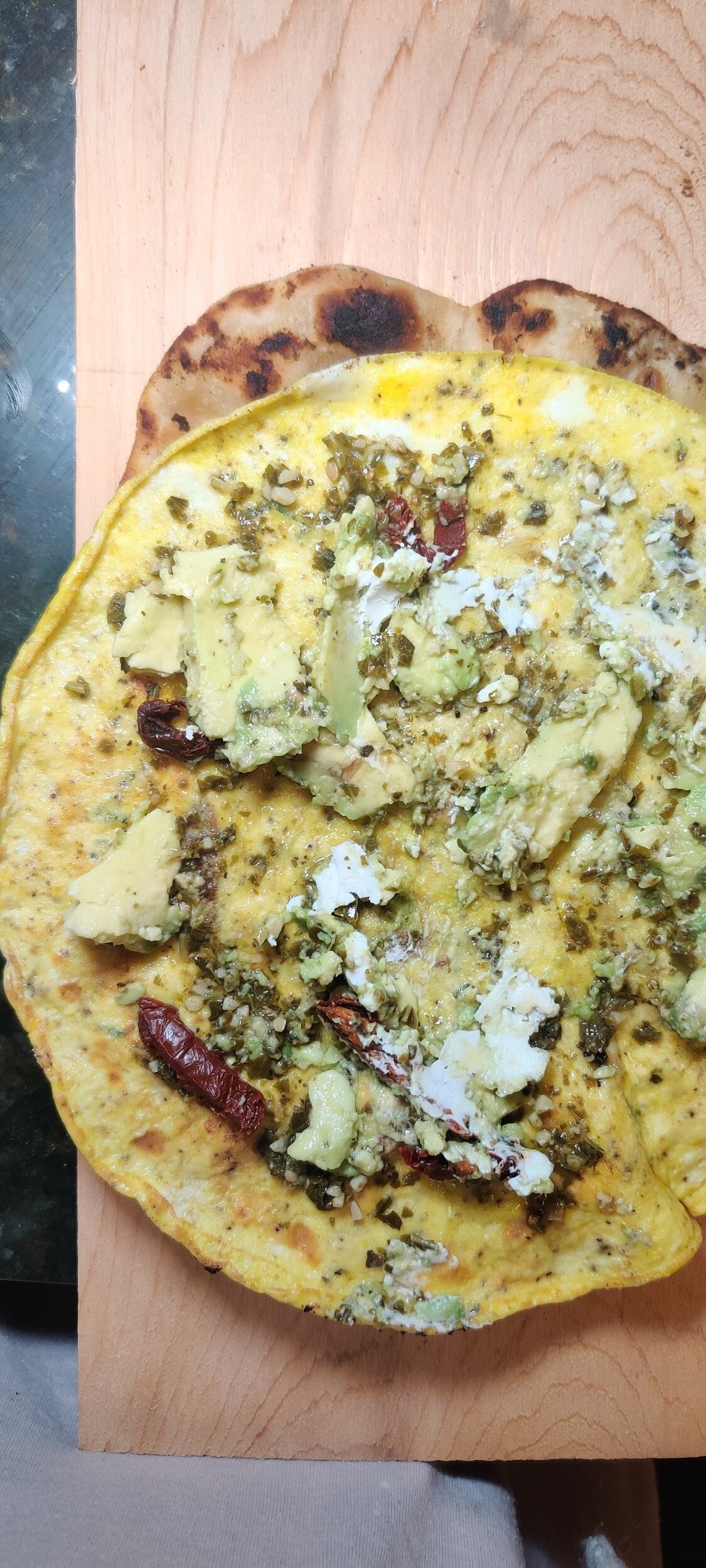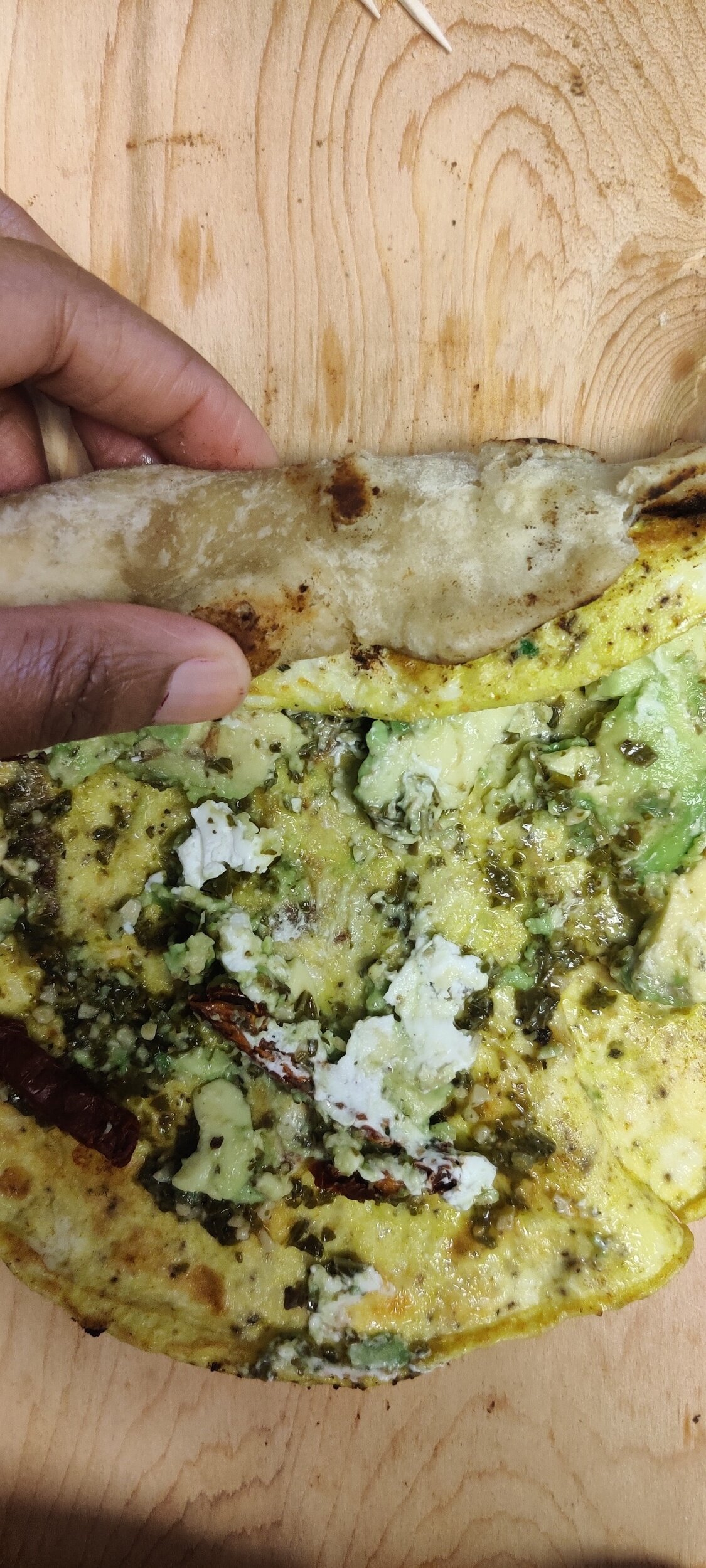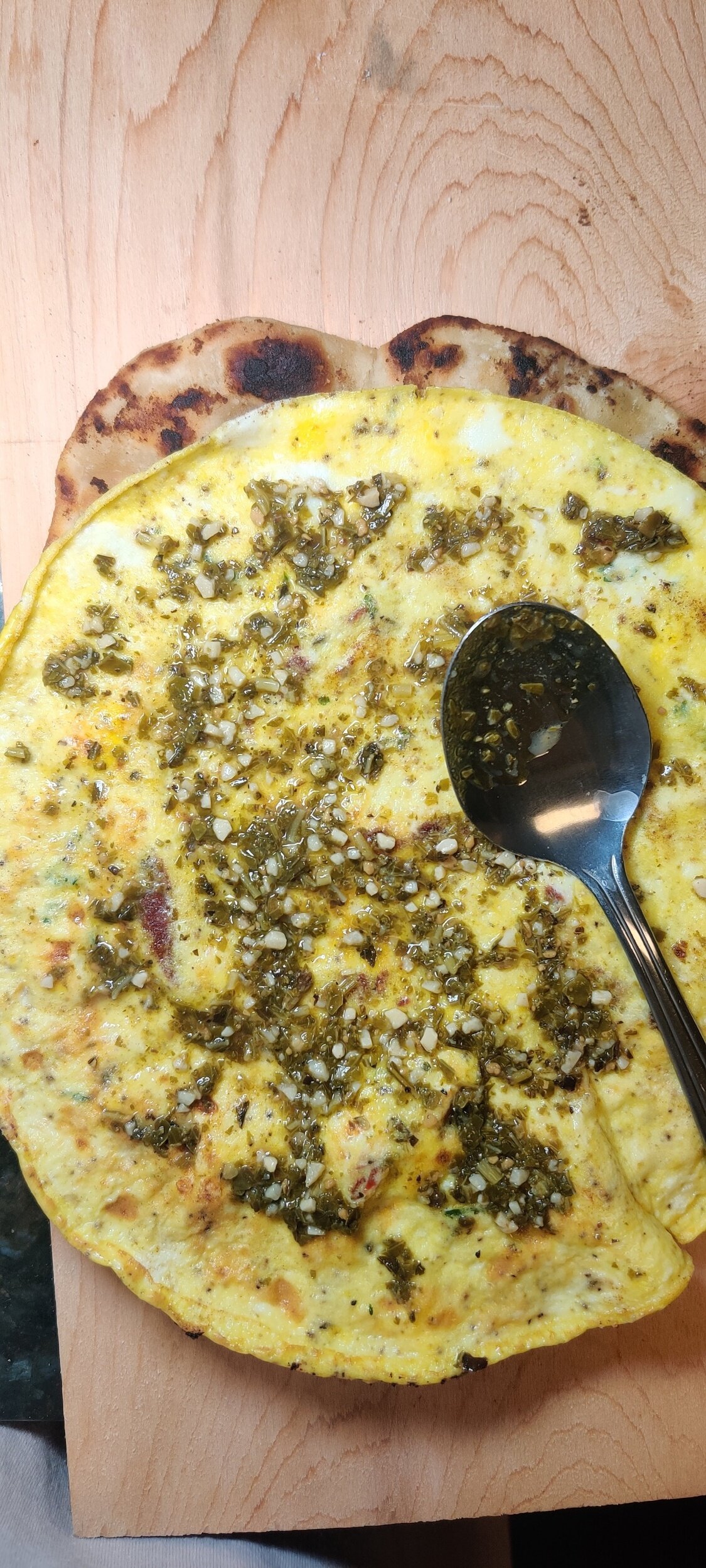Peri-Peri Chicken Livers with Onion Gravy
A Love Letter to Chicken Livers
Chicken livers were one of the first foods that made me feel connected to both comfort and culture. My earliest memory of them goes back to childhood, when my mother would cook livers and giblets from a whole chicken. She’d serve them at breakfast alongside eggs, toast, baked beans, and a rich onion gravy. I loved them. They were hearty, soulful, and full of flavor.
Years later, I was pleasantly surprised to spot chicken livers on the menu at Nando’s, the Southern African–Portuguese fusion chain. Their peri-peri livers transported me right back to my mom’s kitchen table.
There was even a period in my life when I had anemia, and liver became a medical necessity. At first, I ate it just for the iron. But soon I realized: chicken liver wasn’t just good for me, it was truly delicious.
Why Eat Liver?
I’ll never understand why people call liver “gross.” Yes, it’s organ meat, but when cooked right, it’s tender, savory, and deeply satisfying.
It’s also one of the most nutrient-dense foods you can eat, packed with:
Iron – especially heme iron, which the body absorbs easily
Vitamin B12 – crucial for energy and red blood cell formation
Vitamin A – supports vision and immune health
Selenium – helps maintain thyroid function
Folate – essential for cell growth and repair
High-quality protein
Think of it as nature’s multivitamin, only far more flavorful.
Chicken Livers in Southern Africa
In Southern Africa, chicken livers aren’t just an afterthought, they’re a star. They’re often cooked with onions, tomatoes, garlic, chili, and bold spices to make a rich, saucy dish. At home, they’re served with pap (maize porridge) or sadza, while restaurants often offer them with bread as a starter. This culinary tradition influenced chains like Nando’s, which helped spread peri-peri chicken livers around the world.
Why This Recipe Works
Flour dredge for texture – Lightly coating the livers in flour helps them brown evenly and naturally thickens the gravy.
Blooming the spices – Cooking peri-peri and coriander with onions unlocks deeper flavor.
Onions cooked two ways – Caramelized but still crisp, they add both sweetness and bite.
Quick sear, gentle simmer – Locks in flavor while keeping the livers tender.
Creamy finish – A splash of cream (or milk + powdered milk) balances richness and rounds out the sauce.
Resting time – Allowing the dish to sit off the heat helps the flavors settle.

Peri-Peri Chicken Livers with Onion Gravy
Rich, spicy, and comforting, these Peri-Peri Style Chicken Livers in Onion Gravy bring bold Southern African and Portuguese-inspired flavors to your table.
Ingredients
- 510 g (about 1.2 lb) chicken livers, cleaned and patted dry
- ½ medium red onion
- ½ medium yellow onion
- 2–3 garlic cloves, minced
- 2 teaspoons Portuguese or peri-peri chicken spice (I used Robertsons)
- ½ teaspoon garlic powder
- ½ teaspoon onion powder
- ½ teaspoon chilli flakes
- ½ teaspoon black pepper
- ½ teaspoon Italian seasoning
- ½ teaspoon ground coriander
- 1 teaspoon Royco Usavi Mix (or another mild, low-sodium all-purpose seasoning with some thickening)
- ¼ cup + 2 tablespoons flour, seasoned with 1/4 teaspoon of salt, black pepper, and garlic powder each
- ⅔ cup chicken stock
- 4 tablespoons cooking oil
- 3 tablespoons butter
- Salt and black pepper, to taste
- 3 teaspoons powdered milk + ½ cup water (or substitute with cream)
- 1 tablespoon tomato paste
- 1 lemon (use half to clean the livers and the other half to finish once cooked)
- Fresh parsley, for garnish
Instructions
- After soaking the chicken livers briefly in water with a bit of lemon juice, pat them dry with paper towels. Trim away any connective tissue or excess fat.
- Slice the onions into thin wedges and mince the garlic.
- Combine all your dry seasonings (except the all-purpose seasoning) and set aside.
- In a shallow bowl, season ¼ cup of flour with salt, black pepper, and garlic powder. Lightly coat the livers in the seasoned flour and shake off any excess.
- Heat 2 tablespoons of oil and 1 tablespoon of butter in a large, deep pan over medium-low heat.
- Add the red and yellow onions along with the garlic. Cook until golden and lightly caramelized but still slightly crisp.
- Add 1 tablespoon of oil and 1 tablespoon of butter, then stir in the combined spices, letting them bloom for 1–2 minutes.
- Remove the onion mixture from the pan and set aside.
- Add the remaining oil and butter to the pan. Sear the livers for 3–4 minutes per side until browned but not fully cooked through.
- Return the onions to the pan.
- Add the chicken stock, all-purpose seasoning, and tomato paste. Stir to combine and deglaze the pan.
- Simmer gently for 5–7 minutes, or until the livers reach an internal temperature of 160°F (71°C). Avoid overcooking.
- Stir in the powdered-milk-and-water mixture (or cream) and cook for 1–2 more minutes until the sauce thickens slightly.
- Remove from the heat and let the dish rest for 5 minutes.
- Squeeze the juice from the remaining half lemon over the livers and garnish with chopped parsley.
- Serve hot with fresh bread, pap/sadza, or mashed potatoes.
Nutrition Facts
Calories
370Fat (grams)
23.5 gCarbs (grams)
11 gFiber (grams)
1.5 gProtein (grams)
29 gI am not a certified nutritionist and any nutritional information on dontmissmyplate.com should only be used as a general guideline.
Oven-Baked Whole Trout with Herbs and Lemon
Growing up in Zimbabwe, fishing wasn’t just a pastime, it was a way of life. Okay, maybe that’s a tad hyperbolic. It was more like something I had to do on holiday if there was a lake or river nearby. Still, there’s nothing I love more than the thrill of a nibble, the quick jerk of the rod, and that split second of hope that you haven’t been outsmarted by a wise-guy fish.
With that came a deep love for fish, especially the Kariba bream, but also others like trout. From casting lines into serene rivers to tasting the earthy, fresh flavors of fish straight from the water, I learned early on that a simple, whole fish can tell a beautiful story on the plate.
Whole fish is something I’ve always cherished, not only for its taste, but for the connection it creates between nature, tradition, and the kitchen. Over the years, whole fish (with chakalaka) has become one of my favorite meals, and even a signature dish of mine. Not necessarily trout, but this simple recipe is my ode to fish in general. Its tender, delicate flesh, paired with the right seasonings, has the power to transform a meal into a memorable experience.
It’s a tribute to both African flavors and the elegance of simple, fresh fish. I’ve combined aromatic herbs like dill and parsley with the bold warmth of berbere and Robertson’s spice-for-fish seasoning, finished with a splash of lemon for brightness. The method is simple: cook the trout gently, then broil it for five minutes at the end on parchment. The result? Tender, juicy flesh with perfectly crisp skin, a balance that’s hard to resist.
Tips for Perfect Trout:
Freshness is key: Choose trout with bright eyes, firm flesh, and a mild aroma. Fresh fish makes all the difference.
Pat dry thoroughly: Moisture is the enemy of crisp skin. Make sure the trout is well dried before applying your seasoning paste.
Herb and spice paste: Don’t skimp—it infuses flavor into every part of the fish. Rub generously inside the cavity and on the outside.
Watch the broil: Broiling is quick! Keep a close eye to avoid burning while achieving that golden, crispy skin.
Serving Suggestions:
Pair with lightly roasted vegetables like sweet potatoes, bell peppers, or zucchini to complement the spices.
A fresh, tangy salad with avocado, cucumber, and a citrus dressing balances the richness of the trout.
Just before serving, drizzle with a little extra olive oil and a squeeze of lemon for a burst of brightness.
Variations and Fusion Ideas:
Swap trout for other firm, white-fleshed fish like tilapia or bass if needed.
Add chopped chili or smoked paprika for a smoky, spicy kick.
Try a light yogurt drizzle on the side to introduce a creamy element that balances the spices.
This broiled trout is more than a meal, it’s a celebration of fresh ingredients, bold African flavors, and the simple joy of cooking whole fish. (As shown in the video, you can also fillet the fish before serving for a boneless option your family or guests will appreciate.)
Whether it’s a weeknight dinner or a special occasion, this dish shines in both flavor and presentation. By layering herbs and spices and finishing with a quick broil for that irresistible skin, you’ll create something that’s not only visually stunning but deeply satisfying.

Oven-Baked Whole Trout with Herbs and Lemon
A simple, flavorful oven-baked whole trout recipe with herbs, lemon, and a crisp finish, perfect for weeknight dinners or special occasions.
Ingredients
- 1 whole large trout
- 2 lemons
- 1/3 cup spring onions, chopped
- 1/3 cup fresh dill, chopped
- 1/3 cup fresh parsley, chopped
- 2 garlic cloves, minced
- 2 tablespoons berbere spice
- 2 tablespoons spice for fish
- 1 tablespoon butter
- Salt and black pepper to taste
- Chili flakes (optional)
- Olive oil
Instructions
- Preheat your oven to 200°C (4000°F).
- Clean and pat the trout dry. Make a few diagonal slashes on each side.
- In a small bowl, mix spring onions, dill, parsley, garlic, berbere spice, fish spice, salt, black pepper, and a drizzle of olive oil to form a paste.
- Rub the paste all over the trout, including inside the cavity. Slice one lemon and place the slices inside the fish cavity with a small knob of butter.
- Place the trout on parchment-lined baking sheet and cook in the oven until almost done, about 15–20 minutes depending on size.
- Switch the oven to broil and broil the trout for 5 minutes at the end to crisp the skin. Watch closely so it doesn’t burn.
- Serve hot with extra lemon wedges on the side and enjoy the fusion of African flavors with tender, juicy trout and perfectly crisp skin.
I am not a certified nutritionist and any nutritional information on dontmissmyplate.com should only be used as a general guideline.
Stewed Pork Hocks with Sweet Potato (Mazondo)
If delicacies could walk… or rather, trot. Few cuts of meat are as humble yet deeply flavorful as pork hocks. Known for their tough skin, bone, and rich connective tissue, pork hocks have long been transformed by cultures that understand the value of slow cooking. In the American South, ham hocks brought deep, smoky flavor to pots of collard greens and beans, a survival food turned soulful cuisine. In Zimbabwe, they take on a new identity as mazondo, pig’s feet or ankles, revered as a delicacy. Often served in bars, homesteads, and special gatherings, mazondo is slow-cooked with onions, chilies, tomatoes, and spices until it’s meltingly tender.
In this recipe, I brought that tradition into the stew pot, giving the hocks a good sear to lock in flavor, then letting them braise low and slow with bold aromatics, rich seasoning, and an unexpected but powerful addition: sweet potato. While in Zimbabwe sweet potatoes (mbambaira) are typically enjoyed boiled or roasted as a standalone snack or side, they have an untapped potential when added to stews. Here, the sweet potato doesn’t just add subtle, earthy sweetness — it also brings nutrition and natural starch that gently thickens the broth as it cooks down, tying everything together in a rich, velvety texture.
Before cooking, I soak the hocks in red wine vinegar. This isn’t just for cleaning and tenderizing, but also to cut through the richness and add a subtle tang that balances the stew. It's a simple step, but it makes all the difference when working with fatty, collagen-rich cuts.
Prep and Cooking Tips for Mazondo
1. Soaking = Better Flavor and Cleaner Broth
Soaking pork hocks in vinegar and water helps clean the meat, neutralize strong odors, and tenderize it slightly. Rinse well after soaking to avoid excess acidity in the stew.
2. Sear for Maximum Flavor
Don’t skip the browning step, it adds deep, caramelized flavor that builds the base of your stew. Let the hocks sear undisturbed for a few minutes per side to get a good crust.
3. Low and Slow is Key
This stew rewards patience. Keep the heat low and let the hocks simmer gently for 2.5 to 3 hours. Rushing will result in chewy meat and thin broth.
4. Sweet Potato Choices Matter
Use a firm, orange-fleshed sweet potato or yam that holds up to long cooking. Softer varieties may break down too much, though that can also be desirable for thickening.
5. Customize the Heat
Adjust the chili to your preference. For mild stew, remove seeds from the chili or use a milder pepper. For more heat, add fresh chili near the end of cooking or include crushed chili flakes.
6. Make it Ahead
Like most stews, this tastes even better the next day. The flavors deepen and the texture improves after resting. Store in the fridge overnight and reheat gently.
7. Serving Suggestions
Traditionally served with sadza in Zimbabwe, but it's also excellent with rice, mashed potatoes, or crusty bread to soak up the broth. Try pairing it with sautéed greens for a full meal.
8. Skim the Fat (or Don’t)
Pork hocks release a good amount of fat. You can skim some off the top during or after cooking, or stir it back in for maximum richness, up to you.
9. Broth Boost
If you have homemade broth, use it! It gives the stew more body and complexity than water and bouillon alone.
10. Leftover Ideas
Leftover stew can be shredded and used in tacos, wraps, or even spooned over pap/sadza for a quick second-day meal.
With each spoonful, you're tasting tradition, technique, and transformation. The vinegar, the hocks, the sweet potato, each element speaks to how simple ingredients, handled with care and patience, can deliver deeply rooted, unforgettable flavor.
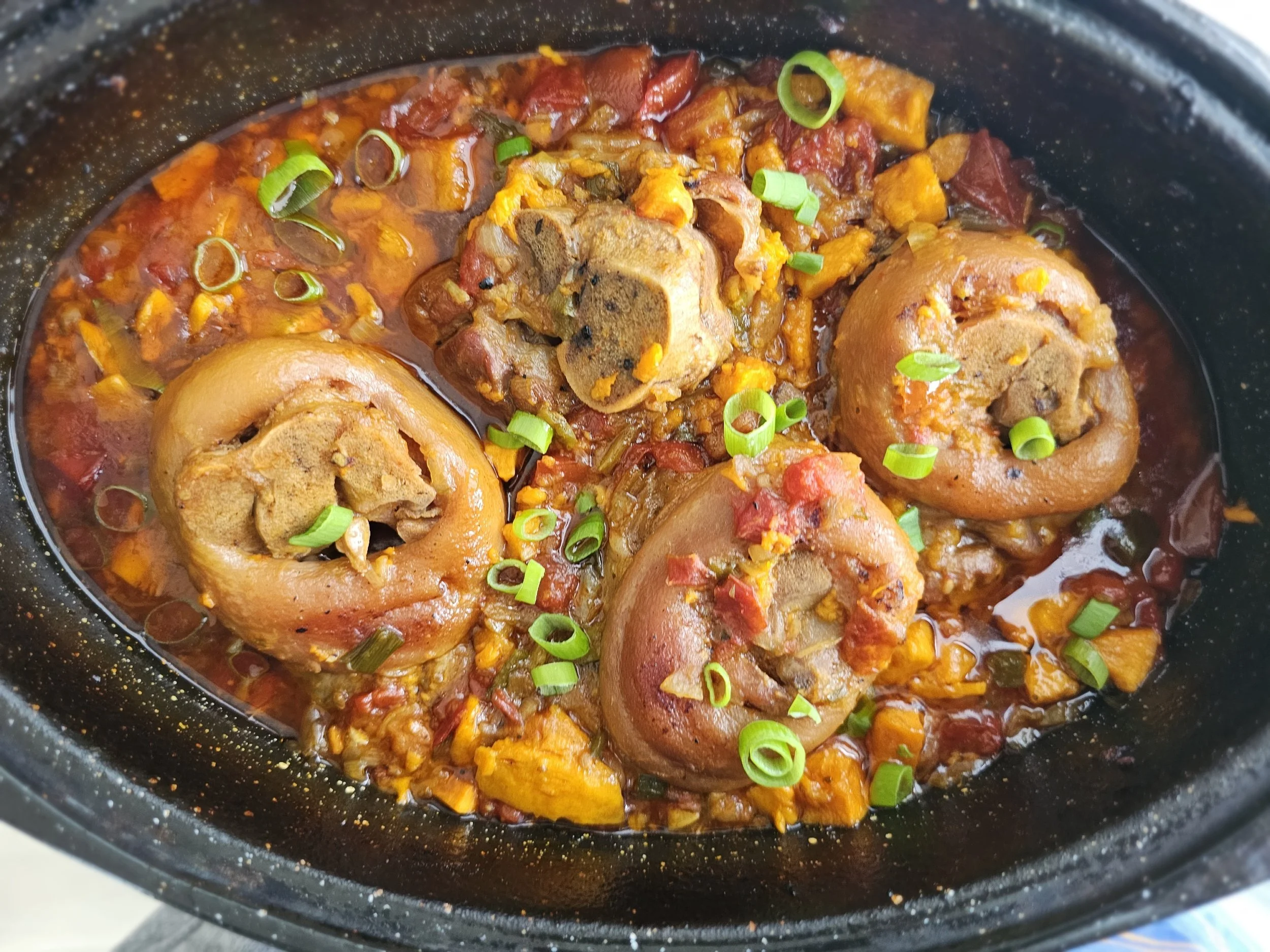
Stewed Pork Hocks with Sweet Potato (Mazondo)
Discover a rich, slow-cooked Pork Hock Stew (Mazondo) with sweet potato, inspired by Zimbabwean flavors and Southern soul food traditions. Tender pork hocks are soaked in vinegar, seared, and simmered with tomatoes, chili, and spices for a hearty, flavorful dish.
Ingredients
- 4 large pork hocks
- 1/3 cup red wine vinegar (for soaking)
- 1 tablespoon salt
- 1 tablespoon black pepper
- 1 large sweet potato or yam, peeled and cubed
- 1 large yellow onion, chopped
- 4 Roma tomatoes, chopped
- 1 chili pepper, finely chopped
- 2 large cloves garlic, minced
- 2 spring onions, sliced
- 2 bouillon cubes + 2 cups water (or homemade broth)
- 1/2 tablespoon Royco Usavi Mix (or your preferred all-purpose seasoning)
- 1/2 tablespoon Shishanyama spice (or BBQ meat rub)
- 2 tablespoons Worcestershire sauce
- 1 teaspoon cumin
- 1 teaspoon paprika
- 1 teaspoon oregano
- Cooking oil (coconut or olive oil)
- 2 tablespoons butter
Instructions
- Rinse the pork hocks under cold water. Place them in a large bowl and soak in red wine vinegar with enough water to cover. Let sit for 10 minutes, then drain and pat dry—very dry, so they brown nicely.
- Season the hocks with salt and pepper. In a large oven-proof pot roast dish or Dutch oven, heat a bit of oil over medium-high heat. Sear the hocks on all sides until golden and well browned. Remove and set aside.
- In the same pot, sauté the onion, garlic, chili, and spring onions until softened and fragrant. Add the Royco Usavi Mix, Shishanyama, and bouillon cubes. Cook for 1–2 minutes to bloom the spices, adding a bit more oil if needed. Stir in the tomatoes and Worcestershire sauce and cook for another 1–2 minutes.
- Add the cubed sweet potatoes, followed by the broth (or water), cumin, paprika, and oregano. Let everything simmer for 3–4 minutes to start developing the base of the stew.
- Transfer the pork hocks to a deep roasting pan or heavy pot. Pour the sweet potato and tomato mixture over the hocks, making sure they’re mostly submerged. The liquid will reduce and become the stew.
- Cover and simmer on low heat at 325°F for 2.5 to 3 hours, until the meat is fall-off-the-bone tender and the sweet potatoes are soft. When checking occasionally during cooking, avoid over-mixing to prevent the sweet potatoes from breaking down into a soup-like consistency.
- If there's more liquid than you'd prefer with about 30 minutes remaining, increase the temperature to 350°F.
- Finish with chopped fresh spring onions. Adjust seasoning with extra salt, pepper, or chili flakes if you like more heat. Serve hot with sadza, rice, or thick bread, and sautéed kale (muriwo) on the side.
I am not a certified nutritionist and any nutritional information on dontmissmyplate.com should only be used as a general guideline.
Shepherd’s Pie with Oxtail and Sweet Potato
A Comfort Food Upgrade You Need to Try!
Oxtail is a prized ingredient in many cuisines, celebrated for its tender, fall-off-the-bone texture and its ability to develop a rich, flavorful gravy when braised low and slow. Swapping out regular mashed potatoes for sweet potatoes adds a natural sweetness that perfectly complements the deep umami of the oxtail, while warm spices like cinnamon, garlic, and black pepper enhance the overall depth of flavor.
If you're looking for a foundational recipe or want to start with a classic preparation, be sure to check out the Oven-Braised African Oxtail Stew or the Oxtail and Butternut Stew—both are great bases for this dish.
Shepherd’s Pie is a timeless comfort food, traditionally made with ground lamb and topped with creamy mashed potatoes. In this bold twist, I’m elevating the classic by using slow-braised oxtail and a silky sweet potato mash. The result? A deeply satisfying dish that combines the comforting essence of traditional Shepherd’s Pie with the rich, indulgent flavors of slow-cooked oxtail.
This dish is a fusion of African and Caribbean culinary traditions, blending familiar comfort with bold innovation. Whether you're a longtime fan of Shepherd’s Pie or just looking for a new way to enjoy oxtail, this recipe is a must-try. With its savory oxtail gravy and naturally sweet, golden-baked sweet potato topping, it’s a next-level comfort food you’ll want to make again and again.
Tips for the Perfect Shepherd’s Pie (Especially with Fatty Meats like Oxtail)
I walked here so you can run! It’s an unusual recipe, but honestly worth a try.
1. Skim the Fat
Oxtail is incredibly flavorful but also quite fatty. After braising, let the stew cool slightly and skim off excess fat from the top. You can even refrigerate it for an hour or so—the fat will solidify, making it easier to remove.
2. Shred the Meat Well
Once cooked, remove the oxtail pieces, shred the meat, and discard any excess fat or connective tissue. This helps keep the filling tender, not greasy.
3. Balance the Richness
Counterbalance the rich oxtail with acidity or brightness. Add a splash of red wine vinegar, Worcestershire sauce, or a bit of lemon juice to the gravy to cut through the richness. Even a spoonful of tomato paste during braising helps with depth and balance.
4. Use a Thick Gravy
A watery filling will soak into the mash and ruin the texture. Make sure your gravy is thick enough to hold its shape—reduce it until it coats the back of a spoon. A little flour or cornstarch slurry can help if needed.
5. Choose a Sturdy Mash
Sweet potato mash works beautifully here, but keep it thick, not too creamy or runny. A looser mash can sink into the filling. A touch of butter and a splash of cream is enough—don't overdo it.
6. Add Texture on Top
For a golden crust, rough up the surface of your mash with a fork, then brush lightly with butter or egg wash before baking. You can also sprinkle breadcrumbs or grated cheese for added crunch and depth.
7. Bake Until Bubbling
Don’t just warm it through—bake until the top is golden and the filling is bubbling around the edges. This helps marry the layers and gives that classic Shepherd’s Pie texture.

Shepherd’s Pie with Oxtail and Sweet Potato
This Shepherd's Pie gets a bold and flavorful twist with tender, slow-braised oxtail and a creamy sweet potato topping! This dish is the perfect blend of rich, savory oxtail gravy and the natural sweetness of mashed sweet potatoes baked to golden perfection.
Ingredients
- 6 cups cooked, drained, and deboned oxtail stew (more or less depending on your baking dish and desired serving portions)
- 3 large sweet potatoes, peeled and cubed
- 4 tablespoons unsalted butter, melted
- ½ cup heavy cream or half-and-half
- 1/4 teaspoon nutmeg
- 1/4 teaspoon cinnamon
- 1/2 teaspoon oregano or thyme
- 1/2 teaspoon black pepper
- 1/2 teaspoon garlic powder
- 1/2 teaspoon salt
- ¼ cup grated Parmesan cheese
- Optional: 1 egg, beaten
- Optional: Fresh feta cheese and fresh parsley
- Optional: Seasoned flour or cornstarch (1/8 cup or more)
Instructions
- Peel and chop the sweet potatoes. Place them in a Dutch oven or large pot of boiling water and cook until softened, about 15–20 minutes.
- While the sweet potatoes are cooking, prep the cooked oxtail stew. Lightly grease a 9x13-inch (or similar-sized) baking dish. Add the oxtail and press it down with a cup or spatula to ensure it’s evenly packed.
- Assuming you’ve already drained excess oil from the stew, you can optionally sprinkle a small amount of cornstarch or flour over the meat. This helps absorb any remaining fat and gives the base a slightly thicker consistency once baked. Just a light dusting will do.
- Once cooked, mash the sweet potatoes and mix in butter, half of the cream, Parmesan cheese, spices, salt and pepper, and an optional egg for structure. Stir until fully incorporated, then transfer the mash into a piping bag.
- Pipe the mashed sweet potatoes in straight lines across the surface of the oxtail, covering the full length of the dish. Use a spatula to smooth it out into an even blanket, then drag a fork across the top to create textured lines—this helps it crisp up beautifully in the oven.
- Sprinkle a little extra Parmesan cheese on top. Bake at 375°F (190°C) for about 25 minutes, then broil for 2–3 minutes until the top is golden brown and slightly crisp.
- Top with optional grated cheese, fresh parsley, or even a drizzle of spiced oil for extra flavor. Serve hot!
Notes
- Use lean oxtail bones to ensure the dish isn't too fatty! Once you've deboned the oxtail, add cornstarch or flour to help thicken the filling, hold it together, and absorb any residual fat from the oxtail.
- Find the oxtail recipe here. https://youtu.be/WpDUkzeJm4g
I am not a certified nutritionist and any nutritional information on dontmissmyplate.com should only be used as a general guideline.
Zimbabwean Finger Millet Porridge (Sadza ReZviyo) with Beef Stew
In Zimbabwean cuisine, sadza rezviyo (finger millet porridge) is a beloved staple, cherished for its deep, earthy flavor and rich nutritional benefits. Unlike traditional maize-based sadza, this version is made with finger millet (zviyo), an ancient grain packed with fiber, iron, and a nutty taste that pairs beautifully with hearty stews.
To complete this comforting meal, we’re serving it with nyama (beef stew)—slow-cooked to perfection with aromatic spices, tomatoes, and onions. The result is a wholesome, satisfying dish that embodies the warmth of Zimbabwean home cooking. Whether you’re reconnecting with your roots or exploring African flavors for the first time, this recipe is a must-try!
Zimbabwean beef stew, or nyama, is a comforting and flavorful dish that brings together tender beef, aromatic spices, and rich, savory gravy. Slow-cooked to perfection, this hearty stew features ingredients like tomatoes, onions, garlic, and fragrant herbs, creating a depth of flavor that pairs beautifully with traditional sides. Whether served with sadza rezviyo (finger millet porridge), rice, or dumplings, this dish is a staple in Zimbabwean households, offering warmth and nourishment in every bite. Perfect for family meals or special gatherings, this beef stew is a true celebration of Zimbabwean home cooking.
White Sadza vs. Zviyo (Finger Millet Sadza)
Both white sadza and zviyo (finger millet sadza) are popular staples in Zimbabwean cuisine, but they differ in terms of their base ingredients, texture, nutritional content, and cultural significance.
1.. Base Ingredient
White Sadza: Made from maize (corn) meal, white sadza is the most common form of sadza in Zimbabwe. The maize is ground into a fine powder, which is then cooked into a thick, smooth porridge.
Zviyo (Finger Millet Sadza): Made from finger millet, zviyo is a gluten-free grain that is milled into a finer flour. Finger millet is often used in traditional African dishes due to its rich nutritional profile and slightly nutty flavor.
2. Nutritional Content
White Sadza: While maize sadza provides a good source of carbohydrates, it is lower in nutritional value compared to finger millet. It lacks the higher levels of iron, calcium, and fiber found in finger millet.
Zviyo (Finger Millet Sadza): This is a highly nutritious alternative, packed with iron, calcium, magnesium, and dietary fiber. Finger millet is also considered to be more digestible and easier on the stomach, making it a great choice for individuals looking to boost their nutrient intake.
3. Texture and Flavor
White Sadza: The texture is typically smooth, firm, and dense, with a mild, neutral flavor that easily complements rich stews and vegetables.
Zviyo (Finger Millet Sadza): The texture is often a bit more grainy and hearty than white sadza. Its flavor is slightly **earthy and nutty**, offering a more complex taste that pairs well with savory dishes, especially those rich in spices.
4. Cultural and Regional Significance
White Sadza: As the more commonly consumed form of sadza in Zimbabwe, white sadza is seen as a symbol of comfort and is typically served with a variety of meats, vegetables, and stews.
Zviyo (Finger Millet Sadza): Traditionally consumed in rural areas, finger millet sadza is often considered a healthier option, especially for those with dietary restrictions or seeking to add more nutrients to their diet. In some regions, it’s also regarded as a more traditional meal.
Both types of sadza have their place in Zimbabwean cuisine, and the choice between them largely depends on personal preference and health considerations. Whether you enjoy the smooth comfort of white sadza or the nutrient-packed punch of zviyo, each offers a delicious base for a variety of flavorful dishes!
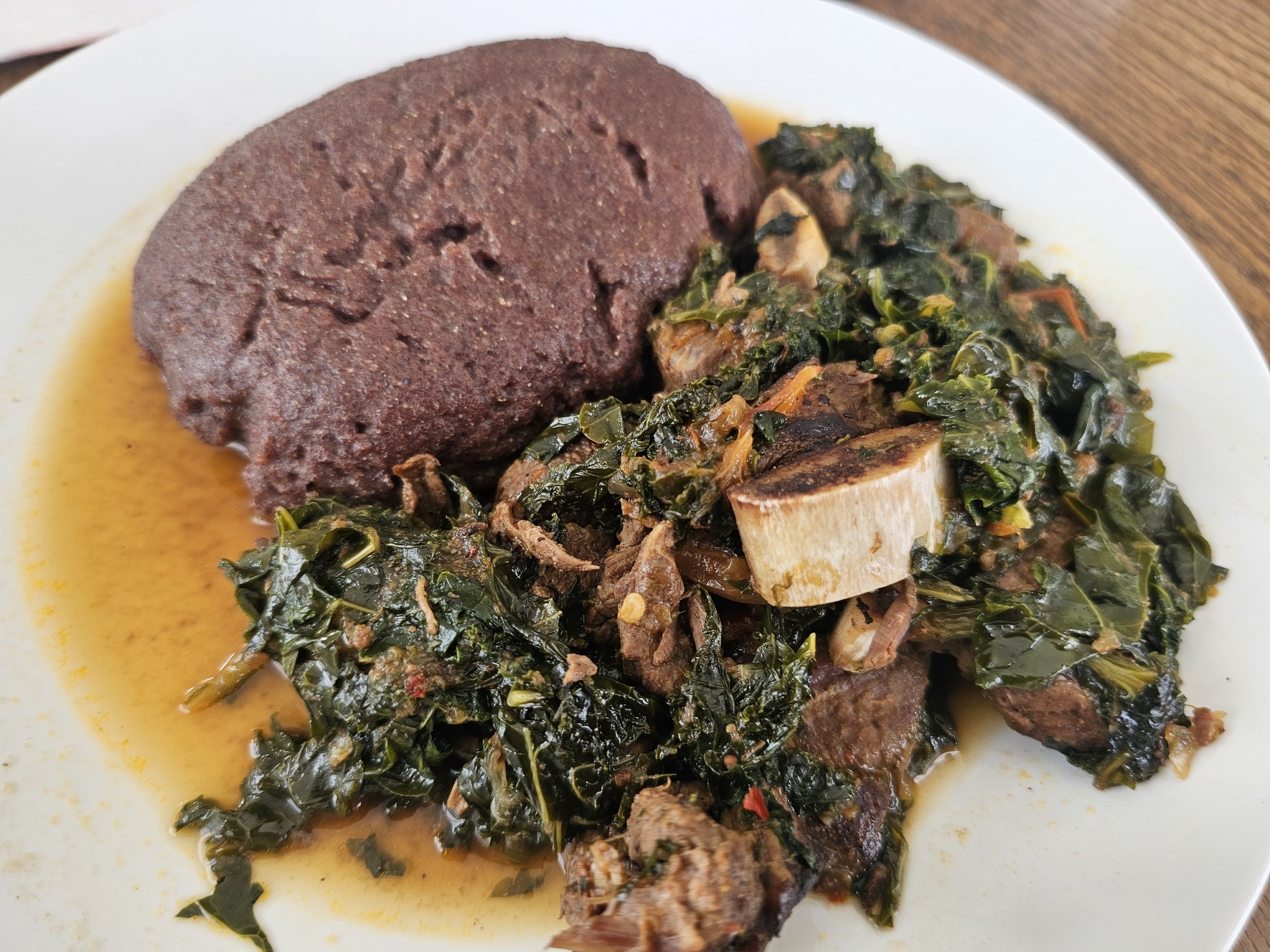
Zimbabwean Finger Millet Porridge (Sadza reZviyo) with Beef Stew
Sadza rezviyo (finger millet porridge) is a Zimbabwean staple with a deep, earthy flavor and rich nutrients. Paired with nyama—a slow-cooked beef stew with aromatic spices, tomatoes, and tender short ribs—this dish is comforting and flavorful. Simmered with herbs, chili, and a touch of red wine, the stew’s bold flavors perfectly complement the wholesome, nutty taste of sadza rezviyo. A must-try for those reconnecting with their roots or exploring African cuisine!
Ingredients
- 1 ½ lbs beef stew cubes
- 1 ½ lbs chuck short ribs
- 4 beef bouillon cubes
- 3–4 cups water
- 1/8 cup Worcestershire sauce
- 1/8 cup red wine or cooking wine
- 1 bunch kale, chopped
- 1 ½ yellow onions, diced
- 2 tomatoes, chopped
- 1 chili pepper, finely chopped
- 3 spring onions, chopped
- 2 garlic cloves, minced
- 2 tablespoons fresh thyme
- 2 tablespoons butter
- 2 tablespoons olive oil (more if needed)
- 1 tablespoon Royco Usavi Mix Beef (optional, all-purpose soup seasoning)
- 1 tablespoon dried oregano
- 1 tablespoon black pepper
- 1 tablespoon seasoning salt
- 1 tablespoon smoked paprika
- 1 tablespoon chilli flakes
- 1- 1 1/2 cups toasted rapoko (finger millet), millet, or sorghum meal (adjust as needed)
- ½ cup cold water
- 1 tsp seasoned salt
- 2 cups hot water (adjust as needed)
Instructions
- Prepare your vegetables by chopping the onions, tomatoes, garlic, and kale, and measure out your ingredients.
- Heat your Dutch oven or large pot, and melt your fats. Add the beef and cook until browned on both sides, then remove and set aside.
- Add the onions and cook for 1–2 minutes until translucent. Follow with the garlic and cook for another minute.
- Add the seasonings and spices, cooking for another 1–2 minutes to activate the flavors. Add a little extra oil if needed. Deglaze the pot by adding your liquids, scraping up the browned bits.
- Add the tomatoes and cook for another 2–3 minutes, then stir in the bouillon cubes.
- Return the beef to the pot, then add water in proportion to the bouillon cubes.
- Bring to a boil, then reduce to a simmer for 1 ½ – 2 hours, or until the meat is tender.
- Season with salt and pepper to taste, then add the kale. Stir and allow it to wilt. You can also add more chili flakes if desired.
- Simmer for 5 minutes, then remove from heat. Turn your attention to the Sadza.
- In a non-stick or steel pot, use a wooden spoon or mugoti to mix the cold water with 1/2 cup of millet until a smooth paste forms. Add your seasoning.
- On medium to medium-high heat, gradually add water in 1/2-cup increments while stirring constantly until the porridge begins to simmer violently, or kwata. As the porridge thickens, switch to a whisk or musika to remove or prevent lumps—smoother porridge results in smoother sadza and a better eating experience!
- Cover the pot with a lid and let the porridge cook for 15–20 minutes on low-medium heat.
- Once the porridge is cooked, gradually add the remaining millet, 1/2 cup at a time, using the whisk or musika to incorporate the dry meal into the dough. Stop when you reach your preferred consistency—thick but not overly dry. For a softer texture, add less millet.
- Once fully combined, switch to the wooden spoon or mugoti. Using a figure-eight motion (kumona), aerate and knead the dough until it becomes smooth, slightly sticky, and clings to the spoon.
- Reduce the heat to low, partially cover the pot, and let it rest for about 5 minutes before serving.
- For an extra step, use cling wrap to shape the sadza into a smooth ball or oval before serving.
I am not a certified nutritionist and any nutritional information on dontmissmyplate.com should only be used as a general guideline.
How to Butterfly (Spatchcock) a Chicken - Piri Piri Style
How to Butterfly a Whole Chicken
Butterflied chicken is a game-changer bold flavors and a showstopper presentation despite the simplicity of it. By flattening the chicken, you not only reduce the cooking time but also ensure a perfect char on the outside and juicy meat throughout. Pair that with the smoky, spicy, and tangy piri piri sauce—a staple in Portuguese and Southern African cuisine—and you’ve got a dish that’s perfect for grilling or roasting.
During the marination, flavors set in well and the meat cooks better. That said, given they way it is cut, the chicken does cook faster, so you want to keep that in mind to avoid drying your it out, and not overcook by leaving it in the oven too long.
The main way to prepare the chicken this way to stop split the chicken in halfway by separating the breasts and removing the back bone. as illustrated in the video. You literally cut it out, feeling at the joints to guide you are cut around tough bones that hold the rest of the chicken together.
Whether you’re hosting a summer barbecue or just craving something vibrant for dinner, this recipe delivers big on flavor with minimal fuss. Plus, it’s easily customizable, so you can tweak the heat level or adjust the seasonings to suit your taste.
Tips for the Perfect Butterflied Chicken
Butterfly Like a Pro
To butterfly the chicken, use sharp kitchen shears to remove the backbone, then press down firmly on the breastbone to flatten the bird. This technique ensures the chicken cooks evenly and gets maximum exposure to the marinade and heat.Marinate for Maximum Flavor
Let the chicken marinate for at least 2 hours, but overnight is best. The longer it marinates, the deeper the piri piri flavors will infuse into the meat.Adjust the Heat
Piri piri sauce can be as fiery or mild as you like. Use more chili peppers for a kick or balance the heat with extra lemon juice and olive oil for a milder sauce.Choose the Right Cooking Method
For a smoky, authentic flavor, grill the chicken over medium heat, turning frequently. If using the oven, roast at a high temperature to achieve a crispy skin, then finish under the broiler for that charred effect.Serve It Right
Piri piri chicken is best served with cooling sides like a simple cucumber salad or a dollop of yogurt sauce. For an authentic touch, pair it with Portuguese-style rice or grilled vegetables.Don’t Waste the Marinade
Reserve some of the piri piri sauce before marinating to use as a basting sauce or drizzle over the chicken once it’s cooked. Just make sure to keep it separate from any sauce that touched raw chicken.
The Magic of Homemade Piri Piri Sauce
I grew up up in piri piri. Well, sort of, I would say at least once a month on Fridays. As a family, we’d make trips to Nandos, which specializes in flame-grilled chicken marinated in piri piri sauce
Now that I have eaten piri piri chicken both in Portugal and in Southern Africa, and how Nandos celebrates the two food cultures, I have a new-found love for the sauce and it is a kitchen staple. The bird’s eye chill peppers give piri piri its unique flavor. Piri piri and peri peri, are derived from ‘pili pili’, which means ‘pepper’ in Swahili. There are many vairiations of the sauce, but the three essential agreements are a must: peppers, garlic, and some acid.Aromatic spices and fresh herbs elevate it.
Piri piri sauce is incredibly versatile, working as a marinade, a dipping sauce, or even a finishing drizzle to add flair to grilled meats, seafood, and veggies. Making your own piri piri sauce at home allows you to tailor it to your taste—mild, medium, or tongue-tingling hot. Plus, it’s fresher and more flavorful than store-bought versions, with no added preservatives.
I remember the first time I tasted authentic piri piri sauce on European soil during a trip to a small coastal town in 30 minutes from Lisbon, Portugal. The heat was exhilarating but perfectly balanced by the bright tang of lemon and the richness of olive oil. It transformed a simple grilled chicken into something unforgettable. When I returned home, I couldn’t wait to recreate it, and after a bit of experimenting, I found my own go-to version. Trust me, once you make this sauce from scratch, it’ll become a staple in your kitchen too!
Tips for Crafting the Perfect Piri Piri Sauce
Choose the Right Peppers
Traditional piri piri sauce is made with bird’s eye chilies, but you can substitute other small hot peppers like Thai chilies or even cayenne if they’re more accessible. For a milder version, include a few sweet peppers to balance the heat. You can also use serrano or habenero peppers if you can handle the extra heat. Bird’s eye chili or has a fruity, peppery taste, and is noted to be half as hot as habenero but two times hotter than jalapeños.Blend for the Perfect Texture
Use a blender or food processor to achieve a smooth consistency. If you prefer a chunkier sauce, pulse the ingredients until they’re just combined.Balance the Flavors
Great piri piri sauce is all about balance. Add acidity (lemon or vinegar) to cut through the heat, sweetness (like honey or sugar) to mellow it out, and oil to create a silky finish. Taste as you go to find the right harmony for your palate.Let It Rest
After blending, let the sauce sit for at least an hour before using. This resting time allows the flavors to meld and deepen. For the best results, make it a day ahead.Store It Right
Piri piri sauce keeps well in the fridge for up to two weeks if stored in an airtight container. For longer storage, freeze it in small portions for easy use in future recipes.Experiment with Variations
Don’t be afraid to get creative! Add smoked paprika for a smoky flavor, fresh herbs like oregano for a fragrant twist, or roasted red peppers for a sweeter, milder version.Use It Everywhere
While it’s famous for marinating chicken, this sauce is a fantastic condiment for everything from roasted potatoes to scrambled eggs. Keep some on hand to elevate your everyday meals.

Butterflied Piri-Piri Chicken
Ingredients
- 1 whole chicken
- 1/2 cup sweet bell peppers
- 4 garlic cloves
- 4 fresco chilli peppers*
- 1 habanero pepper*
- 1/2 cup cup olive or avocado oil
- 2 tablespoons fresh thyme
- 1/3 cup (cooking) wine
- 2 lemons, juiced
- 1 tablespoon salt
- 1 tablespoon sugar
- 1 tablespoon smoked paprika
- 1 teaspoon ground ginger
- 1 teaspoon cumin
- 1 tablespoon cayenne pepper
- 1 tablespoon dried thyme
- 1 tablespoon black pepper
- 1 tablespoon onion powder
- 1 tablespoon dried oregano
- Optional: 4 tablespoons chicken spice blend
Instructions
- Prepare and marinate the chicken.For the best flavor, let the chicken soak up the piri piri marinade for at least 4–8 hours or overnight.
- Gather your ingredients and juice the lemons.
- Blend the marinade. In a blender or food processor, combine the peppers, hot chili peppers, garlic, fresh thyme, and all the spices and seasonings.
- Add the liquids. Blend in the oil, lemon juice, and wine to create a smooth marinade.
- Butterfly the chicken. Clean and prep the chicken. Pat it dry and remove any remaining feathers or excess fat.
- Remove the backbone. Hold the tail, and use your fingers to locate the backbone. Cut from tail to neck and set it aside for broth or discard it.
- Make small incisions. Flip the chicken over and, using a sharp knife, make two small cuts at the bottom where you see cartilage on each side—this helps the chicken cook evenly.
- Flatten the breastbone. Score the center of the breastbone to help the chicken lay flat, or remove the bone entirely if preferred.
- Tuck the wings in and transfer the chicken to a dish. Pour the marinade over both sides, cover, and refrigerate until ready to cook.
- Cook the chicken. Preheat the oven to 350°F (177°C).
- Sear on an indoor grill for about 5 minutes per side, then transfer to the oven and bake for 45 minutes, or until the internal temperature reaches 165°F (74°C).
- Alternatively, you can skip the grilling step and bake the chicken directly in a tray. If so, increase the baking time by 10 minutes, flipping the chicken halfway through.
- Rest for 5 minutes before serving with homemade or store-bought piri piri sauce.
Notes
- For the peppers, use bird’s eye chili, Fresno for color, or habanero—but use less of the latter, as it’s much hotter. Adjust the quantity based on your heat tolerance. If using Fresno peppers, use four to achieve a reddish tint.
- You can save some of the sauce to cook on the stovetop and serve with your chicken once it's done.
- For extra flavor, season your chicken with all-purpose chicken spice before marinating.
- To prevent drying out the meat, avoid overcooking the chicken once it reaches a safe internal temperature.
Nutrition Facts
Calories
180Fat (grams)
11.6 gSat. Fat (grams)
3.4 gCarbs (grams)
2.3 gFiber (grams)
1.1 gProtein (grams)
16.4 gI am not a certified nutritionist and any nutritional information on dontmissmyplate.com should only be used as a general guideline.
Crispy Sticky Tofu with Suya
Easy Tofu Recipe with a West African Twist
Crispy tofu is a game-changer for anyone looking to add a satisfying crunch to their meals—whether you're a longtime tofu lover or just testing the waters. With the right technique, tofu transforms into golden, crispy bites that are perfect for tossing into stir-fries, salads, bowls, or enjoying on their own with a flavorful dipping sauce. The best part? It’s incredibly versatile, easy to make, and packed with plant-based protein. In this post, I’ll walk you through how to achieve that perfect crisp, plus some of my favorite ways to enjoy it!
Suya spice is the secret behind one of West Africa’s most beloved street foods—suya! This bold, smoky, and nutty spice blend brings a fiery kick and rich depth of flavor to grilled meats, veggies, and even snacks. Made with a mix of ground peanuts, paprika, ginger, garlic, and fiery cayenne, suya spice is a must-have for anyone looking to add an authentic West African touch to their cooking. Whether you're marinating beef skewers or sprinkling it over roasted vegetables, this spice blend transforms any dish into something irresistibly flavorful. Ready to bring the heat? Let’s dive into the magic of suya spice!
This recipe brings two worlds together in a simple way to give you a satisfying bite. if you can, serve the tofu on top of a bed of Cape Malay rice (all known as yellow South African rice).
How to Make Tofu Crispy
Making crispy tofu can be a bit tricky, but with the right techniques, you can achieve that perfect crispy texture! Here are some tips:
1. Press the Tofu
Why? Tofu has a lot of moisture that can prevent it from becoming crispy. Pressing out as much moisture as possible helps.
How? Use a tofu press or wrap the block in a clean kitchen towel or paper towels, then place a heavy object (like a can or a cast-iron skillet) on top for at least 15-30 minutes.
2. Cut into Small Pieces
Why? Smaller pieces have more surface area, which leads to crispier edges.
How? Cut the pressed tofu into cubes or triangles (depending on your preference).
3. Coat the Tofu
Why? A thin coating of cornstarch, arrowroot, or rice flour will create a crispy crust as it fries.
How? Toss the tofu pieces in a mixture of cornstarch (or any of the other options) and a bit of salt or seasoning. You can also use flour or a combination of both if you want a thicker crust.
4. Use High Heat for Frying
Why? High heat ensures a crisp exterior and a tender inside.
How? Heat a good amount of oil (vegetable, canola, or peanut oil works best) in a non-stick or cast-iron pan. The oil should be hot enough to sizzle when the tofu hits the pan.
5. Don’t Overcrowd the Pan
Why? Overcrowding can cause the tofu to steam rather than crisp up.
How? Cook the tofu in batches if necessary, giving each piece enough space to brown.
6. Let it Cook Without Moving It
Why? Letting the tofu sit in one place creates a nice golden crust.
How? After placing the tofu in the pan, let it cook on one side until it’s crispy and golden brown before flipping it.
7. Drain Excess Oil
Why? This keeps the tofu crispy and prevents it from getting soggy.
How? Once cooked, transfer the tofu to a paper towel-lined plate to drain any excess oil.
8. Optional: Bake for Extra Crispiness
Why? If you want less oil but still want a crispy texture, baking the tofu after it’s coated with cornstarch or flour can also yield crispy results.
How? Preheat your oven to 400°F (200°C). Place the tofu on a baking sheet lined with parchment paper or a silicone baking mat and bake for 25-30 minutes, flipping halfway through.
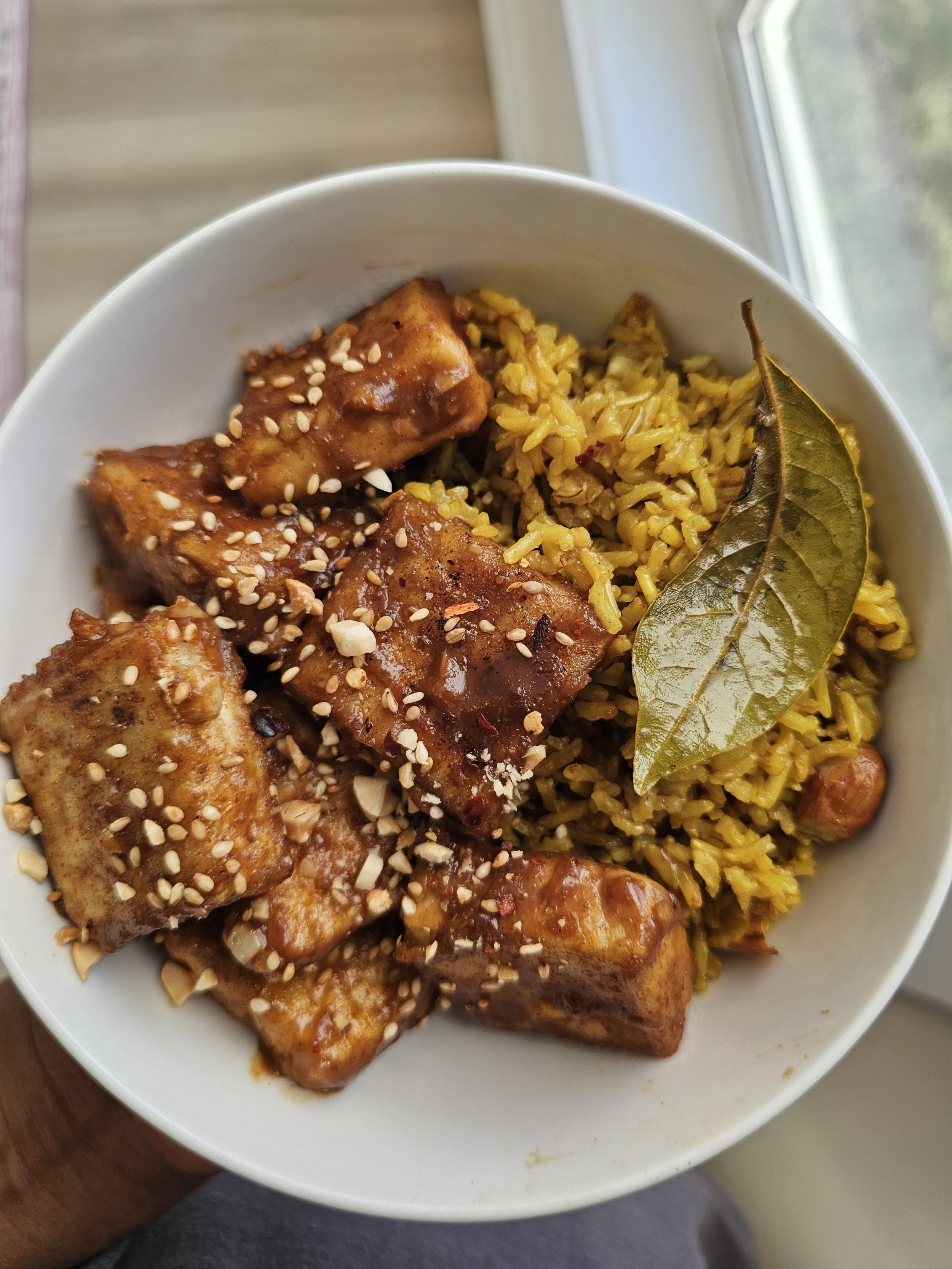
Crispy Sticky Tofu with Suya
Ingredients
- 1 - 14oz block extra firm tofu
- 1/4 cup olive or coconut oil
- 1 tablespoon suya seasoning
- 1 cup corn starch
- Optional: Sesame seeds, crushed peanuts, and/or chili flakes
- 2 tablespoons soy sauce
- 3 garlic cloves, minced
- 1 teaspoon teryaki sauce
- 1 teaspoon fish oil sauce
- 1 teaspoon cooking wine
- 1 teaspoon granulated sugar
- 1 teaspoon vinegar
- 1 teaspoon ground ground ginger
- 1/2 cup water
- 2 teaspoons authentic suya seasoning
- 1 teaspoon cornstarch
Instructions
- Remove the moisture from your tofu by draining and patting it dry. Wrap it in a paper towel and microwave for 2 minutes, heating in 30-second increments to help remove residual moisture. Alternatively, let the tofu sit after draining for at least 30 minutes to dry out. This step ensures crispier tofu.
- Dice the tofu or cut it into 1-inch pieces.
- Make the Sauce. Crush and mince the garlic, then add it to a bowl. Pour in the soy sauce, teriyaki sauce, cooking wine, fish sauce, vinegar, 2 teaspoons of suya, ginger, and 1 teaspoon of cornstarch. Stir or whisk until fully combined, then set aside.
- Coat the Tofu. In a shallow dish, mix 1 cup of cornstarch with 1 tablespoon of suya. Coat each piece of tofu, shaking off any excess, then set aside.
- Heat a skillet or non-stick pan over medium heat. Cook the tofu for 12-15 minutes, turning halfway, until golden brown and crispy. Remove and set aside.
- Add the sauce ingredients to the pan and bring to a boil, stirring continuously. Reduce to a simmer and cook until the sauce thickens—avoid overcooking or over-reducing.
- Return the tofu to the pan, tossing to coat each piece evenly in the sauce.
- Garnish with sesame seeds, chili flakes, and peanuts. Serve hot.
Notes
To reheat, use an oven or air fryer to maintain crispiness.
Nutrition Facts
Calories
117Fat (grams)
5.9 gSat. Fat (grams)
1.2 gCarbs (grams)
6.3 gProtein (grams)
11.9 gI am not a certified nutritionist and any nutritional information on dontmissmyplate.com should only be used as a general guideline.
Oven-Braised African Oxtail Stew
Cooking Oven-Braised Oxtail Stew Recipe African-Style
Oxtail is a beloved delicacy across many African cuisines, known for its rich flavor, tender texture, and deep, comforting stews. Slow-cooked to perfection, oxtail transforms into a melt-in-your-mouth dish infused with aromatic spices, herbs, and hearty ingredients. From the peppery, tomato-based oxtail stew of West Africa to the deeply savory, slow-braised variations of South Africa, this dish is a true celebration of bold flavors and traditional cooking techniques.
Whether served with rice, dumplings, fufu, Sadza, or pap, African oxtail dishes bring warmth and nostalgia to every bite. Its gelatinous richness makes for an irresistibly silky sauce, perfect for soaking up with your favorite side. If you’re looking for a meal that embodies comfort and tradition, African oxtail is a must-try!
Coming from Zimbabwe, I regarded oxtail as a special treat, typically reserved for special occasions. However, from time to time, we would get it as a surprise on a random winter weeknight for dinner. Honestly, though, this dish can be enjoyed all year round.
My mother kept it simple, using a combination of yellow onions, green onions, tomatoes, chili peppers, salt, and pepper—and the result was perfection. The dish was perfectly balanced: not too greasy, not dry, spicy yet slightly sweet, and incredibly satisfying, especially when served with sadza (Zimbabwean cornmeal) and muriwo (sautéed kale).
Living in the United States exposed me to various oxtail preparations I had never encountered before, from Vietnamese oxtail pho (Phở Đuôi Bò), a traditional broth-based soup, to Caribbean-style oxtail with browning sauce and white beans.
This recipe is relatively simple but can be elevated by using high-quality ingredients, such as locally sourced meat from the butcher. It also benefits from leaning into the bold spices commonly used in African cuisine—masala curry powder, cardamom, nutmeg, and cumin—all of which enhance the depth of flavor in oxtail stews.
Does rendered fat make stew taste better?
Also known as liquid gold, oxtail preparation is a matter of personal preference and may be influenced by health goals or the dish you plan to pair it with. If you're committed to reducing animal fats, feel free to trim away! However, keep in mind that some fat contributes to the rich flavor, signature color, texture, and moisture that make oxtail so special.
You can also leave the fat intact while cooking, then simply skim off the rendered fat that rises to the top once it's done. In general, oxtail is a fattier cut of meat compared to others, but that’s part of what makes it so delicious!
Some points to consider:
In addition to adding flavor, richness, and moisture to the dish, fat acts as a flavor carrier, helping to coat the ingredients and intensify their taste. Essentially, it enhances the overall mouthfeel and depth of the stew. Key benefits include:
Flavor Enhancement: Rendered fat releases flavorful compounds that infuse the stew with a deeper, richer taste.
Moisture Retention: Fat helps keep the meat and vegetables moist during cooking, preventing them from drying out.
Browning Potential: Cooking meat in rendered fat creates a delicious caramelized crust, adding another layer of flavor.
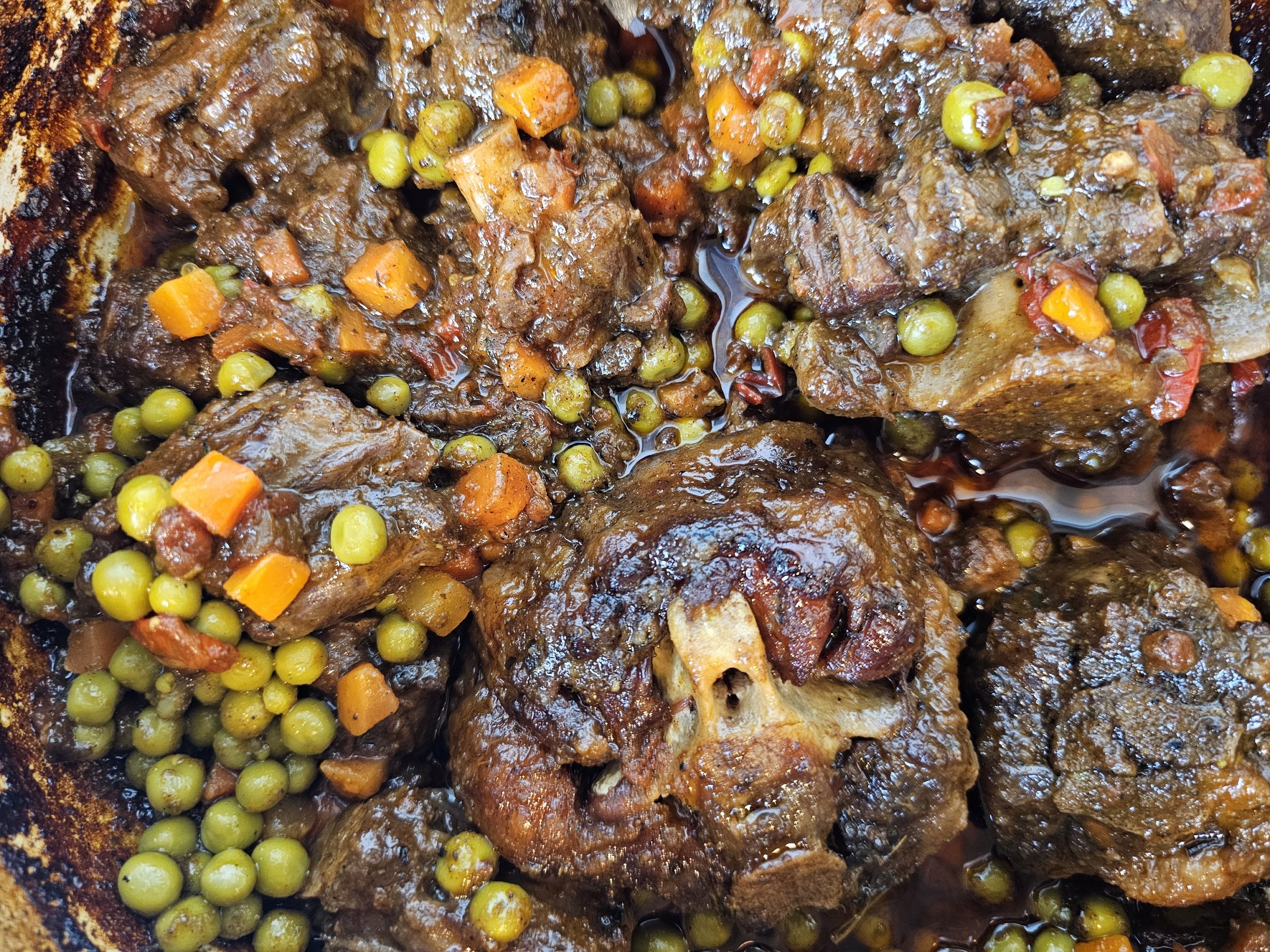
Oven-Braised African Oxtail Stew
Ingredients
- 3 tablespoons olive oil
- 1.5 lbs oxtail
- 1 tablespoon seasoned salt
- 1 tablespoon black pepper
- 1 tablesppon dark brown sugar
- 1 cup mirepoix (carrots, onion and celery)
- 1/3 cup green onions/scallions (optional)
- 1/2 cup red bell peppers
- 1/2 cup diced tomatoes (frozen or fresh)
- 3 garlic cloves
- 1 tablespoon Masala curry powder
- 1 tablespoon Royco Usavi Mix or all-purpose seasoning
- 1 tablespoon flour or cornstarch (optional)
- 1 tablespoon onion powder
- 1 teaspoon cayenne pepper
- 1 teaspoon smoked paprika
- 1 tablespoon oregano
- 1 teaspoon cumin
- 1 tablespoon garlic powder
- 4 beef bouillon cubes
- 1/4 cup red cooking wine
- 4 cups water
- 1/2 lime juice
- 1/2 teaspoon ground ginger
- 1/4 teaspoon cardamon
- 1/4 teaspoon cloves
- 1/4 teaspoon nutmeg
- 2 tablespoons Worcestershire sauce
- 2 tablespoons tomato paste
- 1 thyme spring
- 1 habanero pepper
- 3 bay leaves
- 2 cups carrots and peas, cooked
Instructions
- Preheat the oven** to 350°F (175°C).
- Prepare the oxtail: Wash the oxtail in cold water, vinegar, and lime juice, then pat dry. Depending on your preference and the leanness of the cuts, trim any excess fat or leave the bones as they are.
- Brown the oxtail. In a Dutch oven, heat some oil over medium to medium-low heat. Add the oxtail pieces, then season with sugar, salt, and pepper, mixing to coat evenly. Sear until browned on all sides, ensuring even color. Remove the oxtail from the pot, keeping the oil in the pan.
- Sauté the vegetables. Add the mirepoix (onions, carrots, and celery) and cook for 1–2 minutes. Add the peppers and cook for another 1–2 minutes.
- Stir in the tomatoes (if using frozen, cook down for 2–3 minutes). Add the garlic and cook for another minute.
- Reduce the heat to low to prevent burning. Stir in curry powder, Royco Usavi mix, onion powder, cayenne pepper, smoked paprika, oregano, cumin, and garlic powder. Mix gently to incorporate and bloom the spices.
- Add the bouillon cubes, followed by cooking wine to deglaze the pot. Stir well, crushing the bouillon cubes as they dissolve.
- Return the oxtail to the pot: Stir to coat the meat in the aromatics and seasonings.
- Pour in water and stir, then add lime juice.
- Stir in ginger, cardamom, cloves, nutmeg, and Worcestershire sauce.
- Add tomato paste, thyme, bay leaves, and habanero. Mix thoroughly, ensuring the tomato paste is well incorporated.
- Cover and place the pot in the oven for 2 ½ hours. Halfway through cooking, reduce the oven temperature to 325°F (163°C) and give the stew a stir.
- Remove from the oven and stir in peas and carrots. Let the stew rest for 10 minutes before serving.
I am not a certified nutritionist and any nutritional information on dontmissmyplate.com should only be used as a general guideline.
Huku ne Dovi (Zimbabwean Peanut Chicken Stew)
How to Make Chicken Stew at Home
Zimbabwean Peanut Chicken Stew, also known as huku ne dovi, is a rich and hearty dish that brings together tender chicken, creamy peanut butter, fresh vegetables, hot chilies, and aromatic spices. The result is a perfectly balanced blend of savory and nutty flavors. Whether served over rice, sadza (Zimbabwe’s staple maize porridge), or with warm bread, this traditional dish is a true comfort food favorite.
It might seem like an unusual combination, but across several African cultures, this pairing is wholeheartedly embraced as a bold, comforting meal. In my household, we didn’t have it often, but when we did, it was a glorious treat—especially during the colder months.
A Note on Chilies and Peanut Butter
The key to this dish lies in balancing the heat of the chilies with the creamy sweetness of the peanut butter. You’ll want just enough of both to create a harmonious dance of flavors on your taste buds. That interplay is where the magic of this stew truly shines.
Chicken Texture: Crispy or Tender?
When it comes to the texture of the chicken, there are two camps:
Tender and falling off the bone – Juicy chicken pieces that soak up the stew’s flavors.
Crispy and intact – For those who prefer firmer, browned pieces of chicken.
If you belong to the second group, hold off on adding the chicken back to the pot after browning, or roast the pieces separately and add them just before serving. This way, the chicken stays crispy and retains its texture.
Adjusting the Sauce Consistency
The thickness of the sauce can also be tailored to suit your preference:
Thinner Sauce: Ideal for serving over rice—just shy of soup-like, but light enough to soak into the grains.
Thicker Sauce: Perfect for pairing with sadza or bread, as it clings better to each bite. For a thicker consistency, follow the optional instructions to reduce and thicken the sauce once the flavors have melded together.
Need Some Extra Tips for Your Chicken Stew?
1. Choose the Right Cut of Chicken. Bone-in, skin-on chicken pieces (like thighs, drumsticks, or a whole chicken cut into parts) add rich flavor to the stew. Boneless cuts are also fine but may cook faster and lack the depth of flavor bones provide.
2. Brown the Chicken First. Sear the chicken pieces in hot oil until golden brown before adding them to the stew. This step locks in flavor and adds a delicious depth to the dish.
3. Build Flavor with Aromatics. Use a base of onions, garlic, and fresh or dried herbs like thyme, rosemary, or bay leaves. These aromatics infuse the stew with a rich, savory aroma.
4. Don’t Rush the Cooking Process. A good stew takes time. Simmering the chicken slowly allows the flavors to meld and the meat to become tender. Resist the urge to boil, as this can make the meat tough..
5. Season in Layers. Season the chicken, the broth, and the vegetables as you go. This ensures the flavors are well-balanced throughout the dish. Adjust salt and spices as needed during cooking.
6. Use a Flavorful Liquid. Chicken broth, stock, or even a combination of broth and water enhances the stew's richness. You can also add a splash of wine, coconut milk, or tomato puree for added depth, depending on the recipe.
8. Thicken the Stew to Your Liking. For a thicker consistency, use flour or cornstarch as a thickener. You can also mash a few of the potatoes or add a slurry (a mixture of flour or cornstarch with water).
9. Taste and Adjust Seasoning. Before serving, taste the stew and adjust seasoning with salt, pepper, or a squeeze of lemon juice for brightness.
10. Garnish for Extra Flavor. Add fresh herbs like parsley, cilantro, or dill just before serving for a pop of freshness. You can also top the stew with a dollop of sour cream or a drizzle of olive oil for added richness.
11. Let It Rest. Allow the stew to sit for a few minutes off the heat before serving. This helps the flavors settle and intensify.
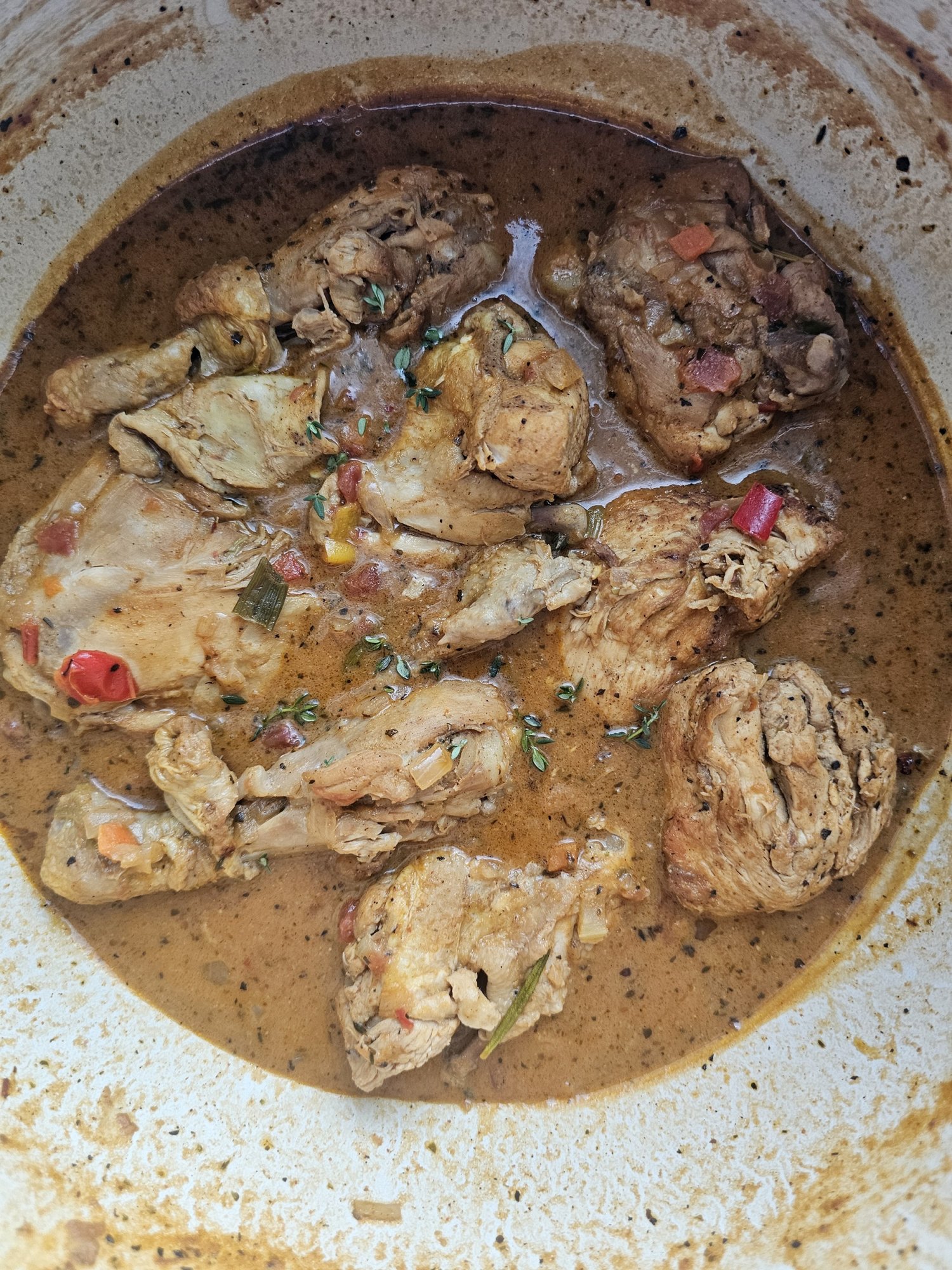
Huku ne Dovi (Spicy Zimbabwean Peanut Chicken Stew)
Zimbabwean Peanut Chicken Stew, or *huku ne dovi*, is a flavorful and comforting dish that combines tender chicken, smooth peanut butter, vibrant vegetables, spicy chilies, and fragrant spices.
Ingredients
- 1/4 cup olive oil
- 1 whole chicken, cleaned and cut into pieces
- 2 tablespoons chicken spice (I used Hind’s)
- 2 green onions
- 1 large hot chilli pepper
- 1/2 large yellow onion
- 1/2 cup mirepoix (chopped onion, carrots and celery)
- 1-2 tablespoons butter
- 1 tablespoon garlic powder
- 1 teaspoon black pepper
- 1 tablespoon paprika
- 1 tablespoon Royco Usavi Mix
- 3 chicken bouillon cubes
- 1/3 cup red wine
- 1 cup diced tomatoes
- 3 sweet bell peppers
- 1/3 cup peanut butter
- 2 tablespoons tomato paste
- 1 teaspoon ginger
- 1 teaspoon cumin
- 1 teaspoon coriander
- 1 teaspoon herb blend (I used basil and thyme)
- 3 cups water
- 3 bay leaves
- 2-3 tablespoons cornstarch or flour (optional)
Instructions
- Season the chicken with all-purpose chicken spice, then brown it in a Dutch oven or non-stick pan over medium to medium-high heat. Once browned, remove the chicken and set it aside.
- In the same pot, add the remaining oil and butter. Stir in the mirepoix, onions, bouillon cubes, garlic powder, black pepper, paprika, and Royco Usavi Mix. Sauté for 2-3 minutes until caramelized. Deglaze the pot with the wine, scraping up any browned bits to incorporate all the flavors.
- Next, add the tomatoes, peppers, chili peppers, cumin, ginger, and coriander. Cook for 1-2 minutes to allow the spices to bloom and the vegetables to soften.
- Return the chicken to the pot and pour in the water. Add more water if you prefer a thinner stew or soup-like consistency. Ensure as much of the chicken as possible is submerged to help it cook evenly. Simmer on low heat for 15-20 minutes.
- In a small bowl, mix the peanut butter with some of the hot stew liquid to thin it out. Stir in the tomato paste, then add the mixture to the pot, ensuring it is evenly distributed.
- Add the bay leaves and continue simmering for another 15-20 minutes.
- Optional: After 5-10 minutes, if you don’t want the chicken to fall off the bone, you can remove it and let the stew continue cooking separately to allow the flavors to come together.
- To thicken the sauce: Remove the chicken, then mix 2 tablespoons of cornstarch or flour with hot liquid from the pot to create a smooth slurry. Stir the slurry back into the pot, mixing well to activate the thickening. Continue cooking until the desired consistency is achieved.
- Season to taste, return the chicken to the pot, and serve hot with yellow rice or your preferred starch.
Nutrition Facts
Calories
438Fat (grams)
20.3 gSat. Fat (grams)
4.8 gCarbs (grams)
62.1 gFiber (grams)
18.5 gProtein (grams)
15.6 gI am not a certified nutritionist and any nutritional information on dontmissmyplate.com should only be used as a general guideline.
Baked Snapper with a Quick African Pepper Sauce
At least in its authentic glory, African pepper sauce is commonly served as a condiment, dip or cooking sauce to pair with grilled meats and vegetables or used in stews, giving your dish a perfect balance of heat and depth of flavour. It's most popular in West Africa, but you see other versions of this with other peppers taking centre stage across the Continent. The combination of peppers, herbs, and spices can enhance or top off almost any dish, and it is extremely versatile. I pick this over conventional hot sauce any day because it uses fresh vegetables, and you can make batches to freeze for future use.
This version provides a quick, easy and convenient way to add flavour to your fish. I used red snapper in this recipe, but you can also use halibut, sea bass, bream, tilapia, or any fish with a mild taste that will absorb all the flavours. For the pepper sauce, instead of cooking down and frying the blended vegetables on the stovetop as is typically done, I roasted the vegetables to bring the flavours out before blending them, then used the pepper mix to coat the fish while it baked.
One great thing about this sauce is that you can tailor it to your tastes and tolerance by adding more or fewer tomatoes and peppers. You can also remove the seeds from the hot peppers to take the heat down a notch. I prefer habanero peppers in terms of the heat and flavour, but you can use a range of peppers, from jalapenos to scotch bonnet. In any case, I recommend using the freshest ingredients possible. In addition, especially since peppers are part of the Dirty Dozen, try using organic peppers if you can afford them.
Baked Red Snapper with Quick African Pepper Sauce

Ingredients
- 1 large red snapper
- 1 tablespoon garlic powder
- 2-3 garlic cloves
- 2 lemon slices (optional)
- 1 sprig fresh thyme
- 1 sprig fresh parsley
- 2 teaspoons salt
- 2 teaspoons black pepper
- 2 teaspoon Royco Usavi Mix (optional)
- 2 teaspoons oregano
- 2 teaspoons basil
- 1/2 cup olive oil, and extra for roasting the peppers
- 1 teaspoon salt
- 1/2 teaspoon black pepper
- 1 chicken bouillon cube
- 1/4 cup parsley, stems removed
- 5 large basil leaves
- 1/3 large yellow onion
- 3-4 mini sweet peppers
- 2 small habanero peppers
- 1 1/2 - 2 Roma tomatoes
- 1 inch piece fresh ginger
- Salt and pepper to taste
Instructions
- Place your peppers, onion, tomato, and garlic on a baking sheet with parchment paper—season with salt and pepper to taste.
- Roast the vegetables for 25 minutes at 400F or until roasted to your desired doneness.
- Remove from the oven and allow to cool for 15 minutes, then transfer to a food processor or blender. Add the ginger, parsley, basil, bouillon cube, salt, and pepper. Blend until combined, and a paste forms. Add the olive oil during this process to help smoothen the mixture.
- Set aside while you prepare the fish.
- Make sure your fish is clean, and then pat it dry with paper towels. Add the salt, pepper, garlic, herbs, and optional Royco/all-purpose seasoning.
- Stuff the inside of the fish with the thyme, parsley, lemon and garlic.
- Place the fish inside some foil and place it on a baking tray. Spoon the pepper sauce over both sides of the fish, ensuring it is fully coated.
- Place the fish in the oven and bake at 350F for 30 minutes. After 15-20 minutes, remove the fish, open the foil (without burning yourself with the hot air) and baste the sauce over the fish.
- Leave the foil open and allow the cause to continue cooking. This will help thicken and caramelize the sauce, developing the flavours further.
- Remove from the oven and spoon some sauce into the serving dish, placing the fish on top and adding the rest of the sauce on top. Garnish with fresh parsley and serve!
Notes
- To avoid overcooking the fish, check the internal temperature after 15-20 minutes and use that to determine how much more time you need.
- If you want a thicker sauce, you can place it on the stovetop before covering the fish with it and baking.
- If you get fresh fish from the market, ensure it is cleaned and descaled.
Nutrition Facts
Calories
237Fat (grams)
13.3 gSat. Fat (grams)
1.9 gCarbs (grams)
24.9 gFiber (grams)
6 gProtein (grams)
10.9 gI am not a certified nutritionist and any nutritional information on dontmissmyplate.com should only be used as a general guideline.
Oxtail and Butternut Stew
Oxtail. A delicacy set aside for special occasions (at least for me growing up in Zimbabwe). Whenever I saw my mother preparing the bones for the pressure cooker, I would get so excited. Nothing delighted me more than watching every part, from the chopping of the green onions to the constant check-ups and stirs. I've tried oxtail in various cuisines, from Vietnamese oxtail pho to Jamaican jerk oxtail with white beans. I appreciated both, but this simple version of slow cooking the bones with tomatoes and onions many Zimbabwes tend to go for is ideal, in my opinion!
Southern African potjiekos inspired this recipe. Potjiekos are stews left untouched in cast-iron three-legged pots over hot coals, often a mixture of meat, bones and vegetables. With this method in mind and to add some substance, I used butternut.
Oxtail is something to indulge in once in a while, but it's worth it every time. Check out this recipe if you need instructions for the sadza (traditional Zimbabwean starch made of mealie/cornmeal cooked into a soft, thick porridge), although in this case I used finger millet (zviyo).
Spicy Roasted Butternut and Peanut Soup
When the weather gets chilly, all you need is a hot bowl of soup. This recipe will give you something rich, creamy, smooth, and flavorful, thanks to the spices and, of course, the texture of the peanut butter.
Yes, butternut (or pumpkin and other members of the squash family) goes well with the nutty condiment. In Zimbabwe, it's a common practice to combine the two, whether it's the flesh of the vegetable or the leaves (muboora or pumpkin leaves cooked with peanut butter and chilies, for instance, is quite popular--the peanut butter serving as a substitute protein from meat and well, to enjoy!).
The trick to get the silky texture if you desire is to use a good quality blender, and to be patient; you'll get there! This soups is super easy and will impress anyone you make it for.
Ingredients
Spicy Roasted Butternut:
48-ounces chopped butternut
1 tablespoon chili flakes
1 tablespoon garlic powder
1 tablespoon steak seasoning (mixture of ground salt and black pepper)
1 teaspoon dried rosemary
1 tablespoon cayenne powder
1 tablespoon smoked paprika
1/4 cup olive oil
8-ounces mirepoix (mix of 2 parts onion, 1 part carrots and 1 part celery)
1 red bell pepper, diced
1 jalapeno, diced
1 teaspoon salt
1 tablespoon black pepper
1 teaspoon cayenne powder
1 tablespoon curry powder
1 teaspoon Royco Usavi (optional)
1 teaspoon smoked paprika
1 tablespoon garlic powder
1 teaspoon ginger powder or fresh, grated ginger
2 1/2 cups broth (add more as needed)
1 2 tablespoons butter
12 tablespoons bacon fat (optional)
2 tablespoons tomato sauce
1/4 cup Worchester sauce
1/2 cup heavy cream
1/3 cup peanut butter
Cilantro
Peanuts
Instructions
Toss the diced butternut in the olive oil, spices and rosemary, and bake at 400F for 12-15 minutes on parchment paper and a baking tray. The butternut should be fully cooked and caramelized on the outside. Remove from oven and set aside, including a few pieces to garnish.
Heat the butter and bacon fat in a large pot, and bloom the spices (cook for about 1-2 minutes on medium-high heat to bring out the flavour).
Add the mirepoix and sauté for 3-4 minutes until fragrant, then add the Worchester sauce and tomato sauce, cook for another 1-2 minutes.
Add the broth and 1/2 of the heavy cream, stir and simmer on low heat for 10 minutes. Mix until peanut butter is fully incorporated. Stir in the butternut and cook for another 5 minutes, then remove from heat. Take out a 1/2 cup and use the hot broth to temper and smoothen the peanut butter before adding it to the pot.
Using a mesh spoon, remove the solids and add them to the blender. Cover the lid and blend the solids until smooth. Season to taste, mixing until you have your desired texture. Control this by using the remaining broth and cream to thin it out.
Return to heat and simmer for 1 minute, season to taste and ensure the cream is incorporated and there are no large chunks of butternut, then serve. Garnish with roasted butternut, peanuts and cilantro.
Matapa (Shrimp and Kale in Coconut Milk and Peanut Butter)
Peanut butter and greens are not an unusual pairing in many parts of Southern Africa and should be embraced everywhere! They are just as delicious as greens with cream, a more widely known dream team when balanced right.
The Mozambican dish Matapa inspired this recipe: cassava leaves cooked in coconut milk with peanuts or cashews and shrimp or crab. I used Tuscan kale, but you can use anything from pumpkin leaves to collard greens and adjust the cooking time.
Coconuts are plentiful in Mozambique, which borders the Indian ocean, and coconut milk, a staple in my pantry, is creamy but not overwhelming. It lends a unique flavour, and in this case, blends well with the sweet and salty peanut butter and the subtle sweetness and texture from the chopped shrimp.
The light and hearty soup stew gets even more delicious overnight, and you can serve it with brown rice, farro, couscous or any other starch or side that will help absorb the tasty juices!
Ingredients
2 pounds cooked shrimp (thaw according to package)
1 large bunch Tuscan kale
Olive oil
1 red onion
4 large garlic cloves
1/4 jalapeno
1/4 cup fresh parsley
1 tablespoon Royco Usavi mix (or you favourite all purpose seasoning)
2 tablespoons peri-peri seasoning
1 cup peanut butter (tempered with 1 cup hot water)
1 packet chicken bouillon powder
2 tablespoons from 1/2 a fresh lemon
1 tablespoon cayenne powder
1 tablespoon black pepper
1 teaspoon salt
1 cup coconut milk
Pepper flakes
Instructions
Remove the stems and chop the kale. Place in boiling water until softened, then remove most of the water. Place in a blender and pulse to shred the greens until they are tiny pieces but not liquid (you can also do it while the leaves are uncooked).
Finely dice and chop the onion, garlic, jalapeno, and parsley and sauté in olive oil until softened for about 3 minutes. Add the Royco Usavi and peri-peri.
In a separate bowl, mix the peanut butter with the boiling water and chicken bouillon. Pour the tempered mixture into the pot, then add the kale. simmer for 5 minutes and mix well.
Add the shrimp, cook for 2-3 minutes, then follow with a squeeze of lemon. Season with salt and pepper to taste, adding extra peanut butter and cayenne if necessary.
Serve hot with brown rice, lemon, chili flakes, and parsley.
Goat Chorizo Samosas with Tomato Mango Chutney
I love goat meat and grew up eating it frequently. I consider it a somewhat neglected meat, but it is delicious and quite versatile! For those of you who appreciate goat meat or love chorizo, this will be quite a treat. I discovered the chorizo as a local farmers market to my delight and imagined this pairing.
Samosas are curried and/or spiced meat or vegetable-filled pastries wrapped in a thin dough and fried, attributed to South Asia but enjoyed worldwide, including East Africa. A condiment often accompanies them for dipping. In this case, a mango chutney will do the trick, a it is a great balance of sweet and spicy and complements the goat, which is not inherently sweet compared to other meats. The sour cream helps to cool the spiciness. To enhance the mango chutney, I used a spicy mango chutney sauce from Camella’s Kitchen. To view other recipes using their products that boast Caribbean flavours, check out Plantain Stew with Black Beans, Spicy Apple Muffins with a Cider Glaze, and Pineapple Chow Black Seabass Salsa.
Ingredients
Chutney:
1 large mango, diced
1 tablespoon spicy mango chutney sauce (I used Camella’s Kitchen)
1/3 cup roasted tomatoes
1 tablespoon jalapeno, diced with rib and seeds removed
2 tablespoons smoked paprika
1 tablespoon garlic minced
1/2 shallot minced
1 tablespoon tomato paste
1/4 cup carrots, diced
1 tablespoon parsley, chopped
1 tablespoon Royco Usavi mix (or your favourite all-purpose seasoning)
1 tablespoon Worchester sauce
1 tablespoon mirin or cooking wine
1 teaspoon salt
1 tablespoon black pepper
Anise and bay leaves (optional aromatics)
1 cup water
Samosas:
10 samosa sheets. cut into rectangles
1 tablespoon butter
4 sausages goat chorizo, casings removed (or regular chorizo)
1/4 cup white onion, diced
1/8 cup carrots, diced
1/8 cup green bell pepper, diced
1 tablespoon Spice for Rice (optional)
1 teaspoon garlic powder
1 tablespoon Royco Usavi mix (or your favourite all-purpose seasoning)
1 teaspoon tumeric
1 cup broth
1/4 cup water and 2 tablespoons flour (sealing paste)
Vegetable oil
Sour cream
Instructions
Prepare the chutney. Add all the ingredients except the water and aromatics and bring to a boil. Then add the water and aromatics and reduce the heat to simmer for 15 minutes, stirring frequently and seasoning with additional salt and pepper to taste. Remove the bay leaves and anise after 5-7 minutes to avoid overpowering the other flavours. Add more water if necessary but allow the chutney to thicken. Once it's to your liking, remove the chutney from the heat.
For the samosa filling, add the butter to a pan on medium-low heat. Sweat out the onion, carrots and bell pepper for 2 minutes. Add the seasonings and cook for an additional minute.
Mix in the chorizo and cook until browned. Pour in the broth and reduce heat to simmer to finish cooking the goat. Season to taste then remove from the heat to cool.
Prepare the samosa sheets according to the package instructions, and ensure they don't dry out. To fill them, fold a bottom corner into a triangle of each samosa sheet, then another triangle to make it a double pocket. Add the filling, sealing the sides with the flour and water mix as needed. Check this video out for clear steps!
Fry the samosas in vegetable oil for one minute per side, then place on paper towels to drain the extra fat. Don't overcrowd the pot to help them cook evenly.
Serve with the mango chutney (cold or room temperature) and sour cream.
Fried Pumpkin Flowers
In Zimbabwean cuisine, the pumpkin leaves (nhanga) known as muboora are commonly consumed as a relish or dried first, often stewed with peanut butter. They can be bitter similar to mustard greens, and a little tough - but nothing a little bicarbonate soda can't fix. Neighbouring countries like Mozambique like to add shrimp and coconut milk to the mix.
This recipe is super easy and makes for a light and fluffy batter, thanks to carbonated tonic water and egg white.
You'll need to be gentle with them, not overly dredge in batter and shake the excess off, not wash them roughly, and try to keep them as dry as possible before frying. Inspect the flowers for pollen and anything else.
How do they taste? Next time you see the flowers at the farmer's market, give them a try! In this case, sweet and subtle, a floral taste, not like a pumpkin, but delicious and melts in your mouth. Not only can you fry them in a light batter, but you can also stuff the flowers with a filling of your choice and bake or fold them into tortillas.

Fried Pumpkin Flowers
Ingredients
- 12 clean pumpkin flowers
- 1/2 cup + 2 tablespoons flour
- 1 egg white
- 3/4 cups tonic water
- 1 teaspoon sugar
- 1/2 teaspoon table salt
- Sea salt crystals
Instructions
- In a shallow bowl, add the flour, table salt and sugar, set aside.
- Heat your oil in a pan; it should be about 300F+ at the time of frying - you can use a thermometer to check. Make sure the panhandle is turned away from you/not easy to knock over.
- Beat the egg white until stiff peaks form.
- Whisk the tonic water into the bowl into large lumps are gone, and flour is mostly dissolved - don't over mix to keep the batter airy and light from the carbonation. Gently fold in the egg whites.
- Dip each flower carefully into the batter, shaking off excess before placing it in the hot oil )(away from you to avoid the splatters). Keep a close eye; they fry quickly! Flip over after about 20 seconds (30 seconds if you want the batter a bit brown more, though it lightens up a bit after cooling).
- Remove from the pan with a draining spoon and place on paper towels to absorb extra fat. Sprinkle with sea salt crystals and enjoy hot.
Nutrition Facts
Calories
72Fat (grams)
3.5Carbs (grams)
8.7Sugar (grams)
5.1Protein (grams)
1.4Double Chocolate Hazelnut and Aero Mint Ice Cream with Shortbread (No-Churn)
Ice cream is too easy to make at home to be constantly buying store-bought pints! And no, you don't need an ice cream machine. You can get creative and add in all your favourite sweet treats to the creamy heat reliever. You also have a better sense of what you are adding to the mix from a nutritional perspective.
Aero chocolate is unique because it's aerated, i.e. has an air bubble texture, making it one of those candy bars that truly melts in your mouth. Made in the UK and sold across southern Africa, it's one of the chocolate bars I grew up on.
If you are looking for another no-churn ice cream recipe, try this peach crumble with bourbon ice cream. This one takes a different turn but still celebrates the summer heat with chocolate, hazelnut, refreshing peppermint, and another melt-in-your-mouth sweet treat - shortbread! The textures and flavours swim in cream and condensed milk waves effortlessly, making this recipe a win-win perfect for the whole family!

Double Chocolate Hazelnut and Aero Mint Ice Cream with Shortbread (No-Churn)
Ingredients
- 2 cups heavy cream
- 1 (14-ounce can) condensed milk
- 1 teaspoon vanilla extract or paste
- 4 Aero chocolate bars (I used 2 peppermint and 2 chocolate)
- 3 shortbread cookies
- 3 teaspoons chocolate hazelnut spread
Instructions
- Whip the cream to form soft peaks for about 3 minutes (don’t overbeat to avoid separation occurring).
- Fold in the condensed milk and vanilla extract. Whip again for about a minute to form a stiff but smooth consistency.
- Crush the chocolates and shortbread (set some chocolate aside to sprinkle on top), then fold into the ice cream base.
- Transfer to loaf pan, then use a small spatula to even the surface. Place dollops of the chocolate hazelnut spread on top, then make a swirl motion utilizing a knife or small spatula to mix it in.
- Place a layer of cling film directly on top of the ice cream, then use another to seal tightly - the plastic will help prevent too much ice crystalizing on top.
- Freeze overnight. When ready to serve, leave out the fridge for 5 minutes, then enjoy!
Nutrition Facts
Calories
332Fat (grams)
17.9Carbs (grams)
36.7Protein (grams)
5.1I am not a certified nutritionist and any nutritional information on dontmissmyplate.com should only be used as a general guideline.
Sadza Nenyama (Beef and Kale Stew)
Zimbabwean Sadza with Kale and Beef Stew: A Hearty African Comfort Food
If you're looking to explore authentic African cuisine, Zimbabwean sadza with kale and beef stew is a must-try dish that embodies comfort, tradition, and rich flavors. Sadza, a staple in Zimbabwean households, is a smooth, thick cornmeal porridge similar to fufu or pap, often served alongside flavorful stews. This hearty meal is deeply rooted in Zimbabwean culture and represents the essence of home-cooked comfort food.
In this recipe, tender beef chunks are slow-cooked in a savory, aromatic tomato-based stew, perfectly balanced with nutrient-packed kale. That said, bone-in cuts are more common for this dish, and, in my opinion, provide a more flavorful, rich broth to tie the entire meal together. The combination of rich, meaty flavors and wholesome greens pairs beautifully with sadza, creating a satisfying meal that warms the soul. Whether you have Zimbabwean roots or are simply looking to try something new, this dish is a delicious way to experience the heart of Southern African cuisine.
If there was any meal I got sick of eating as a kid, it was this. As an adult far from home, I found myself with a new-found appreciation, and wanted to share the steps to materialize the meal. While I’ve personally cut down on meat, this classic dish still brings comfort, warmth, and a taste of home, especially on cold or rainy days.
For more recipes inspired by traditional Zimbabwean, cuisine, browse the website or check out Oxtail and Butternut Stew, Fried Sadza with Chilli Creamed Corn, Sadza with Butter Bean Kale Relish, Sadza and Creamed Spinach with Sardines, Huku ne Dovi (Zimbabwean Peanut Chicken Stew), and Black-Eyed Peas with Coconut and Tomato.

Sadza Nenyama (Beef and Kale Stew)
Ingredients
- 1 pound chuck beef or cut ideal for stew
- 1/2 large bunch kale, chopped
- 1 tablespoon butter
- 2 tablespoons vegetable oil
- 1 teaspoon salt
- 1 tablespoon black pepper
- 3 tablespoons Royco Usavi Mix (optional but highly recommended - you can also use a blend of 1 teaspoon cumin, 1 teaspoon coriander, 1/2 teaspoon turmeric, 1/4 teaspoon paprika, 1/4 teaspoon cornstarch, and 1/2 teaspoon fenugreek powder)
- 1 yellow onion, diced
- 3-4 Roma tomatoes, diced
- 1 tablespoon fresh garlic
- 1 tablespoon chili flakes
- 3 beef or vegetable bouillon cubes
- 3 cups water
- 1 1/2 - 2 cups cornmeal/mealie meal (I used yellow cornmeal)
- 1 teaspoon salt
- 3 cups boiling water
- 3/4 cup cold water
- 1 teaspoon garlic powder
Instructions
- Prepare your stew. In a large pot, add the butter and vegetable oil. Sauté the onion and garlic until the onion becomes translucent and the garlic fragrant, about 3-4 minutes. Add the salt, pepper, and spice blend, cook for another 2-3 minutes.
- Add the beef chunks and chilli flakes, brown the meat by cooking for about 5-7 minutes. Add the diced tomato and bouillon cubes, mix to incorporate.
- Add the chopped kale, followed by water (or liquid broth if you're using that). Reduce the heat and simmer for 30 minutes with the lid on top, stirring occasionally and seasoning to taste. You want your beef tender and cooked through, but not tough - so don't overcook.
- While the stew is cooking, make you sadza. Boil the water.
- In a medium-sized pot, stir 1/2 cup of the cornmeal with the cold water to make a paste (not too thick, not too thin).
- Season, then while stirring, add the boiling water - careful not to splash yourself! The heat should be on medium as your stir. After about 4-5 minutes, the cornmeal will begin to bubble. You can close the pot with the lid, and allow it to cook for about 15-20 minutes. Don't burn the bottom of your pot - you may need to reduce the heat to medium-low depending on your stove!
- Bring down the heat to low, and add the remaining cornmeal a 1/2 cup at a time, folding it in to make a soft dough - the softer you want the sadza the less cornmeal, for a thicker consistency use more . Place the lid back on the pot, leaving a slight opening, allowing the sadza to rest over the heat for about five minutes.
- Remove from heat and shape with a wooden spoon. Serve hot with the stew.
Notes
- For vegetarian alternative, use butternut or pumpkin cubes instead of beef.
- Sadza tastes better eaten hot, so try to serve immediately, storing until the next day hardens it. Consume the stew within 3-4 days when refrigerated, otherwise, freeze.
I am not a certified nutritionist and any nutritional information on dontmissmyplate.com should only be used as a general guideline.
Tried this recipe? I’d really love to know how it turned out for you. Leave a quick review or comment below — your feedback helps others (and makes my day!).
Pinto Bean and Chickpea Bessara
Bambara groundnuts or nyimo as I knew them, aren't beans you can easily find in the United States. You can, however, cross chickpeas and pinto beans to get a similar taste. That’s what I did for this heart-warming bean dip.
I grew up eating nyimo, they are some of my favourite bean/nuts, and I had to incorporate them into this bessara-inspired dish.
Popular in Morocco, Egypt, and other parts of North Africa, bessara (a bean dip or soup thinned in the process) is comparable to hummus. Typically fava beans are used,along with the lemon, cumin, olive oil and paprika (I add extra which gave it the orangish-red tone and add a smoky, rich, taste).
If you are looking for a quick, savoury snack and have some fresh bread lying around, this might be it for you!
Ingredients
1 cup dried pinto beans (soaked overnight)
1 cup dried chickpeas (soaked overnight)
2 tablespoons smoked paprika
1 teaspoon cayenne pepper
1 tablespoon fresh garlic
1 teaspoon salt
1 tablespoon black pepper
1 teaspoon coriander
1 teaspoon cumin
1 tablespoon scotch bonnet pepper sauce or hot sauce
1/4 cup lemon juice
1/2 cup olive oil
1/4 cup water
Fresh parsley or basil
Chilli flakes
Peanut oil
Instructions
Cook the beans. Bring the pinto and chickpeas to a boil completely submerged in salty water in a large pot, then reduce to a simmer until softened and fully cooked, about 1-2 hours. Drain.
In a blender or food processor, add the cooked beans, olive oil, lemon juice, fresh garlic, salt, pepper, spices, water, and the hot sauce. Puree until a smooth consistency has formed. You can make it more like a soup with extra liquid if you prefer, but a smooth dip with a few chunks is what I did here.
Plate your dip, and garnish with extra paprika, chilli flakes, fresh herbs, peanut oil or olive oil. Add salt and pepper to taste. Serve with fresh baguette or brioche.
Seared Hake with Mofongo Irio (Mashed Plantains with Corn & Peas)
There's nothing like a crispy piece of fish, especially when it’s wild-caught. I was inspired to put this together by MSC Bluefish, a non-profit organization that seeks to protect the oceans by advocating for sustainable fishing practices and educating people on the importance of conscious consumption in a world where our food choices have a huge impact on the environment and food security.
To learn more visit their website, and download their new guide to help out when you are shopping! https://www.msc.org/en-us/what-you-can-do/blue-fish-guide
I got my hake fillets at Walmart, but you can find MSC Bluefish labelled products at several grocery stories - tinned, fresh, frozen, in a wide price range that can accommodate your budget.
I love hake, it’s a tasty but mild fish you can pair with almost anything. With the skin on, you can get some great flavours.
I paired the fish with a fusion side dish. One dish is considered Puerto Rican, the other Kenyan. If you're a stickler for traditional meals, this isn’t for you! Experimenting in the kitchen and trying new things can teach you a lot and greatly improves your cooking skills and overall knowledge. This worked out, so I wanted to share the recipe!
Mofongo is fried plantain mashed with garlic, salt and olive oil to be formed into a ball used to eat. Typically you add bacon bits or pork rinds crushed in with a pestle and mortar. I tried it for the first time in New York at a Cuban restaurant with shrimp, and it was delicious! It's origins link back to fufu which was brought by Africans to the Caribbean in the Spanish colonies.
As for irio, that’s a side dish popular in Kenya consisting of mashed potatoes, corn, and peas. I switched out the potatoes for mashed plantains, with the addition of the garlic and voila, a side dish to compliment the crispy-skinned hake! If you like mashed potatoes and as a side for your fish and favour the taste of plantains, the 'mofongo irio' will be a delightful side to your dish!
Ingredients
Seared hake:
2 whole hake filets, with skin on, thawed (I got the MSC Bluefish-certified frozen pack)
1/4 cup vegetable oil
1 teaspoon salt
1 tablespoon black pepper
1 tablespoon fish spice
2 tablespoons lemon juice
1 egg
1/3 cup breadcrumbs
Mofongo irio:
2 large plantains, ripe
1/4 cup green peas, frozen
1/4 cup sweet corn kernels, frozen
1 teaspoon salt
1 tablespoon black pepper
1 teaspoon fenugreek
1 tablespoon garlic, minced
1/3 cup olive oil
Sautéed greens:
1 cup kale, chopped
1 tablespoon olive oil
1/4 teaspoon salt
1/2 teaspoon black pepper
Instructions
Season the fish with the salt, pepper, fish spice and lemon, set aside. Slice the fillets in half for more manageable pieces, but be careful not to rip the skin.
Get two shallow dishes - add the beaten egg to one and the breadcrumbs to the others. Place the fillets skin side up first in the egg, then the breadcrumbs to add a light coating.
In a hot a skillet, cook the fish in the vegetable oil. Put the fillets skin down, and fry for 3-5 minutes until the skin is crispy, then turn over to finish cooking. Remove from the fish skillet but keep all the juices and bits in the pan, set aside.
Peel and slice your plantains about 1 inch in thickness. If your plantains are not so ripe, you can boil them until they start to soften. If they are quite ripe, they will be ready to fry immediately.
Add the olive oil and garlic to the skillet and fry the plantains. Season with salt, pepper and fenugreek powder on medium-low heat until the plantains have softened, and are slightly crispy and goldish, about 5 minutes. Place them on a paper towel to remove excess oil once they are done.
Return to the skillet, add the peas and sweet corn. Cook for another 3-5 minutes to get the peas and corn some flavour.
Remove from heat and using a potato masher, press down on the mixture until a mashed potatoes consistency forms - you can leave a few pieces partially whole for texture. If you have a pestle and mortar, you can also transfer the mixer and use that instead!
Prepare your kale. In a small saucepan, saute the leaves in the oil with salt and pepper until wilted, but don’t overcook.
You can also make some chermoula as a sauce for the fish, but the sauteed kale, juicy fish, and moist mofongo irio mash is enough. Find my recipe for the seafood accompaniment, here: https://www.dontmissmyplate.com/how-to-cook/2020/6/30/chermoula-red-snapper-peanut-butter-rice
Now time to plate your dishes! Using a measuring cup, shape the mofongo irio into a dome shape. Place about a tablespoon of the kale on top, then set your crispy, juicy hake on top. Repeat for the desired number of servings. Serve with avocado and lemon, enjoy!
Ugandan Rolex (Omelette Rolled in Chapati)
Good street food can be made in the kitchen, make no mistake! Whether you’ve seen it on TV or enjoyed it in person, it’s probably fairly easy to make and perfect to take on the go. If you like breakfast wraps and burritos, this recipe is for you.
The “rolex” is a vegetable omelette wrapped in fresh chapati, a flaky, unleavened flatbread similar to roti. It’s one of my favorite flatbreads, I even have another recipe for it, here. Chapati is very popular across East Africa and often accompanies almost every meal, so it’s no surprise that it’s also used to whip up a quick, on-the-go snack.
“Rolex” definitely rolls off the tongue better than “rolled eggs.” It’s both humorous and ironic for a meal that’s meant to save you time.
But in this case, you can take your time. Because chapati is unleavened, there’s no need to wait for the bread to rise. A batch of these wraps makes a great brunch platter or lunch served with a side salad.
There are no rules about what goes inside or on top of your eggs, this is where you can have fun with flavors! I used sun-dried tomatoes, but you can substitute fresh diced tomatoes. I also added pesto and goat cheese for layers of flavor, and seasoned the eggs with salt, pepper, fenugreek powder, parsley, and Italian seasoning. The avocado was the cherry on top, making each bite extra luscious. If you like a little heat, try adding jalapeño.
This is a great way to start a weekend morning or enjoy a hearty post-workout meal. Give it a try!
Serving Suggestions
Serve these rolex wraps warm with a fresh side salad, such as mixed greens with a light vinaigrette, or roasted veggies for a more filling meal. They also pair well with a cooling yogurt dip or a spicy chutney if you want to add some contrast. Perfect for brunch, lunch, or even a quick dinner.

Ugandan Rolex (Omelette Rolled in Chapati)
A delicious and satisfying East African street food classic, fluffy vegetable omelette wrapped in soft, flaky chapati flatbread. This “rolex” is customizable, quick to make, and perfect for breakfast, brunch, or anytime you want a flavorful, handheld meal.
Ingredients
- 1 cup all-purpose flour
- 1 teaspoon salt
- 1 tablespoon vegetable oil, plus extra for cooking
- 1/4 cup hot water + 1 tablespoon hot water (adjust as needed)
- 4 eggs
- 1/2 teaspoon black pepper
- 1 tablespoon fresh parsley, chopped
- 1 teaspoon Italian seasoning
- 1 teaspoon dried parsley
- Pinch of salt
- 2 tablespoons pesto
- 1/4 cup Parmesan cheese, grated
- 2 tablespoons sun-dried tomatoes, chopped
- 2 tablespoons goat cheese
- 1 avocado, mashed or sliced with lemon juice
Instructions
- In a medium bowl, mix the flour and salt. Add the vegetable oil and mix. Gradually add the hot water while stirring to form a soft dough. On a lightly floured surface, knead the dough for about 5 minutes until smooth. Shape into a ball, then divide into two equal pieces. Cover and let rest for 10 minutes.
- On a lightly floured surface, roll each dough ball into a circle about 1/4 inch thick and roughly the size of the pan you’ll use to cook the omelette.
- Lightly brush each chapati with oil, then press into a lightly floured shallow plate. Flip and repeat.
- Heat a non-stick pan over medium-high heat and lightly oil it. Cook each chapati for about 15 seconds per side, flipping once, until you see brown spots and the chapatis are cooked through. Set aside.
- In a bowl, beat the eggs with black pepper, fresh parsley, Italian seasoning, dried parsley, salt, Parmesan cheese, half of the goat cheese, and half of the sun-dried tomatoes.
- Pour the egg mixture into the hot pan and cook omelettes one at a time until set.
- Place each omelette on top of a chapati. Top each with half an avocado and 1 tablespoon of pesto. Sprinkle with the remaining sun-dried tomatoes and goat cheese.
- Roll up each chapati tightly to form a “rolex.” Cut each in half, secure with toothpicks, and serve hot.
I am not a certified nutritionist and any nutritional information on dontmissmyplate.com should only be used as a general guideline.


